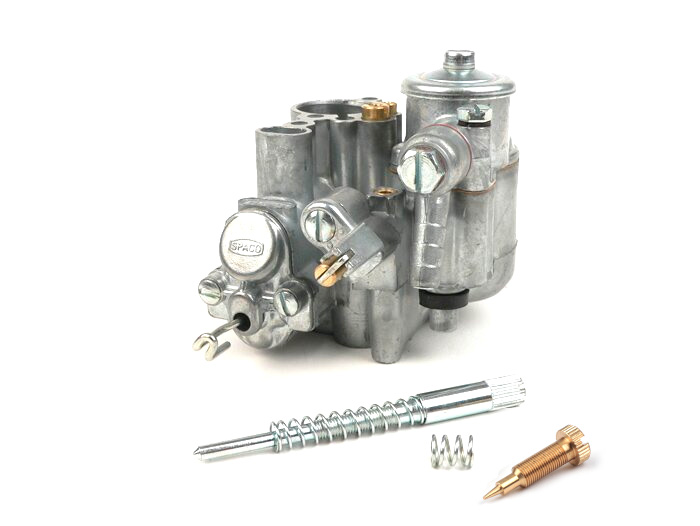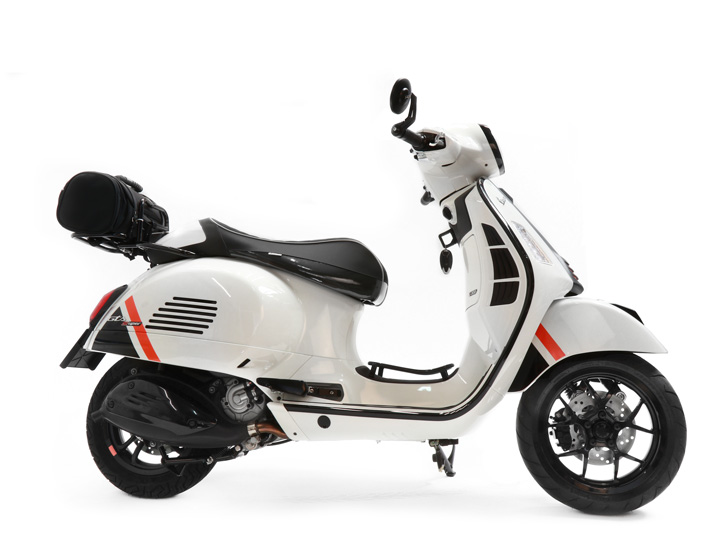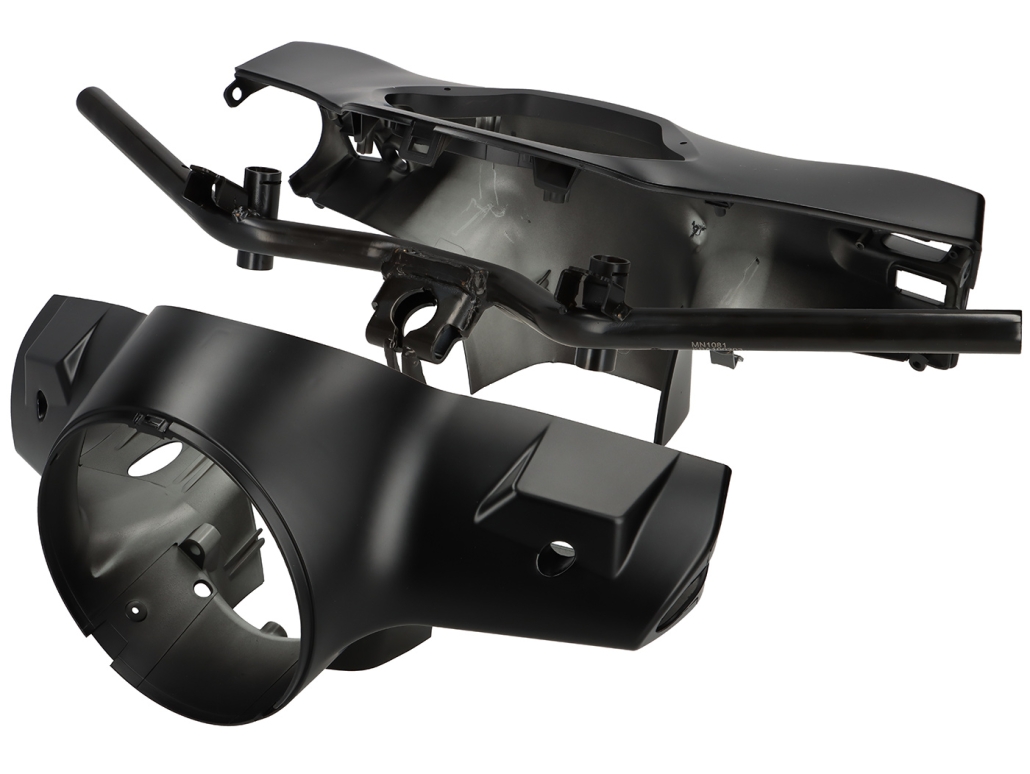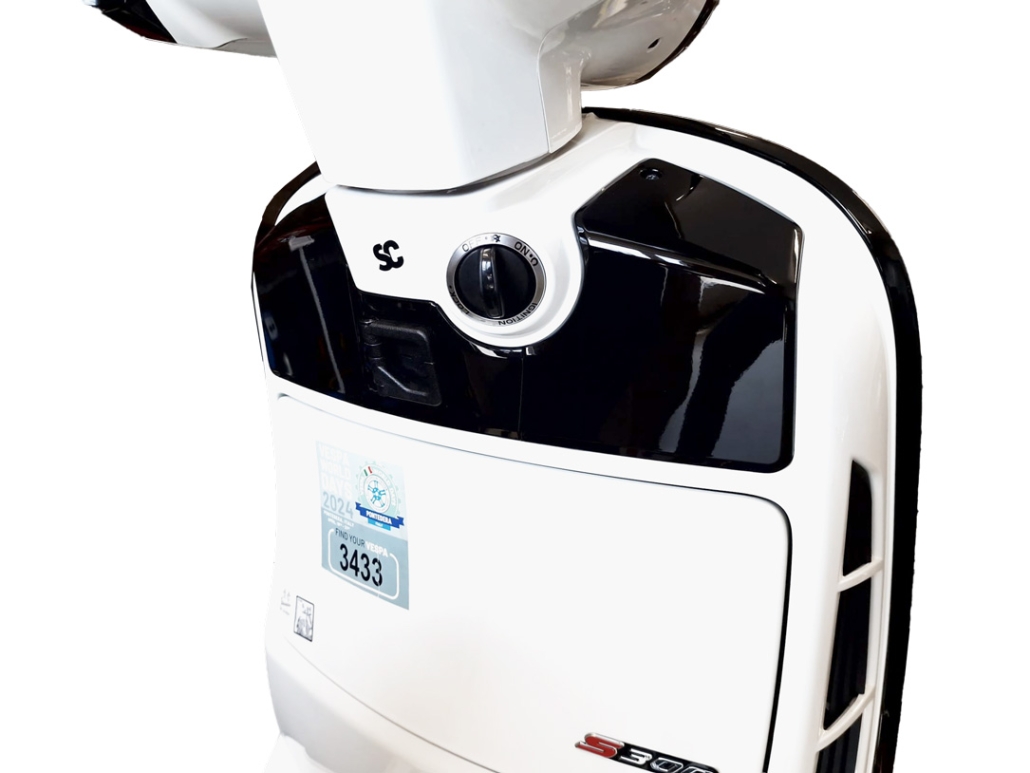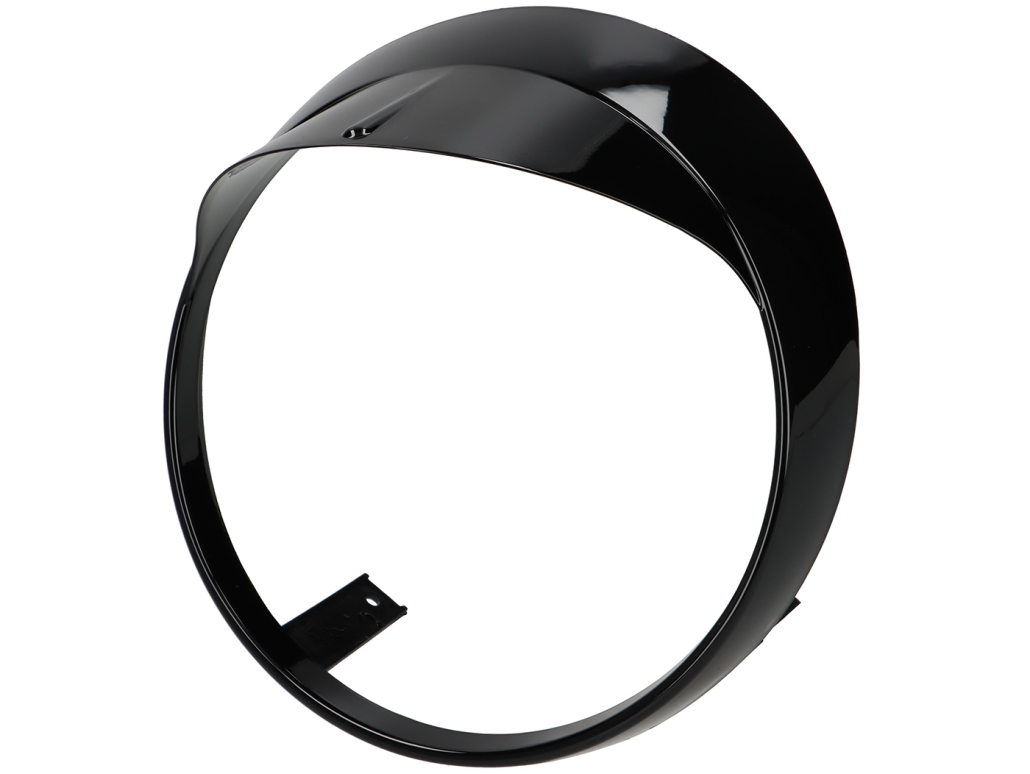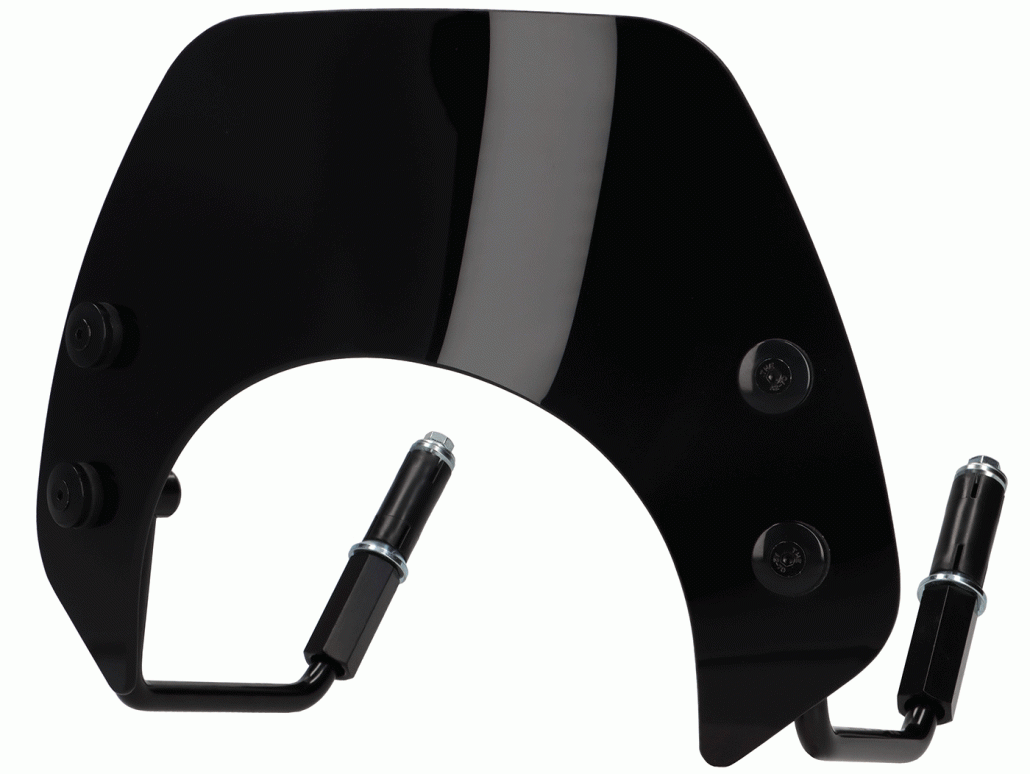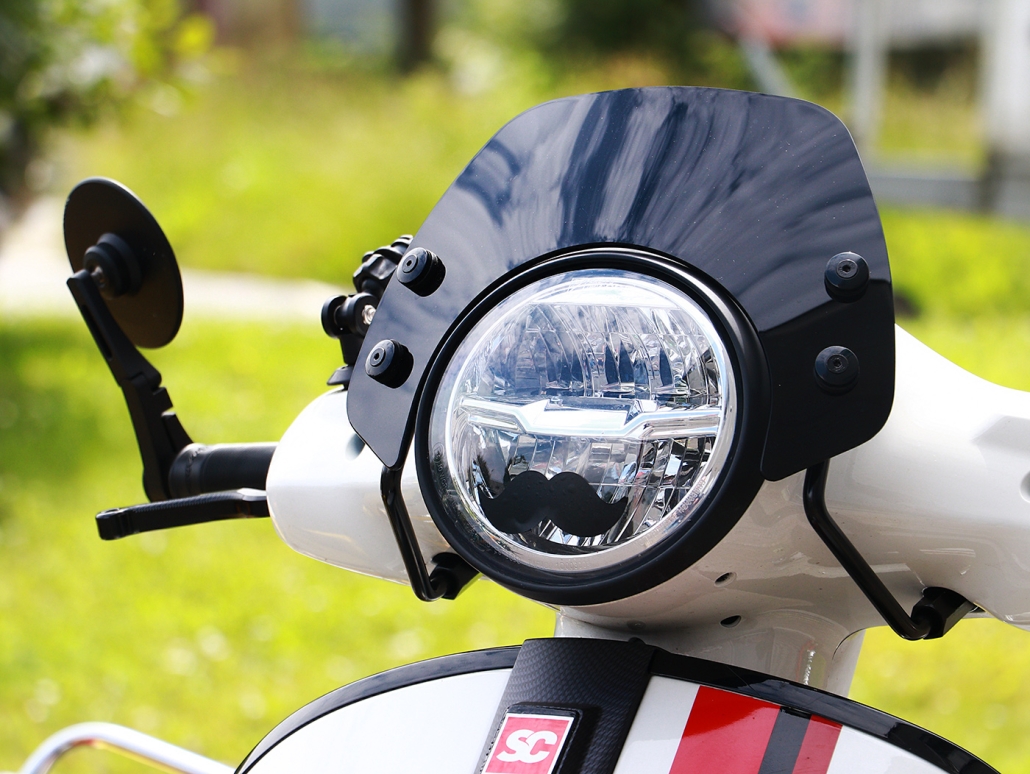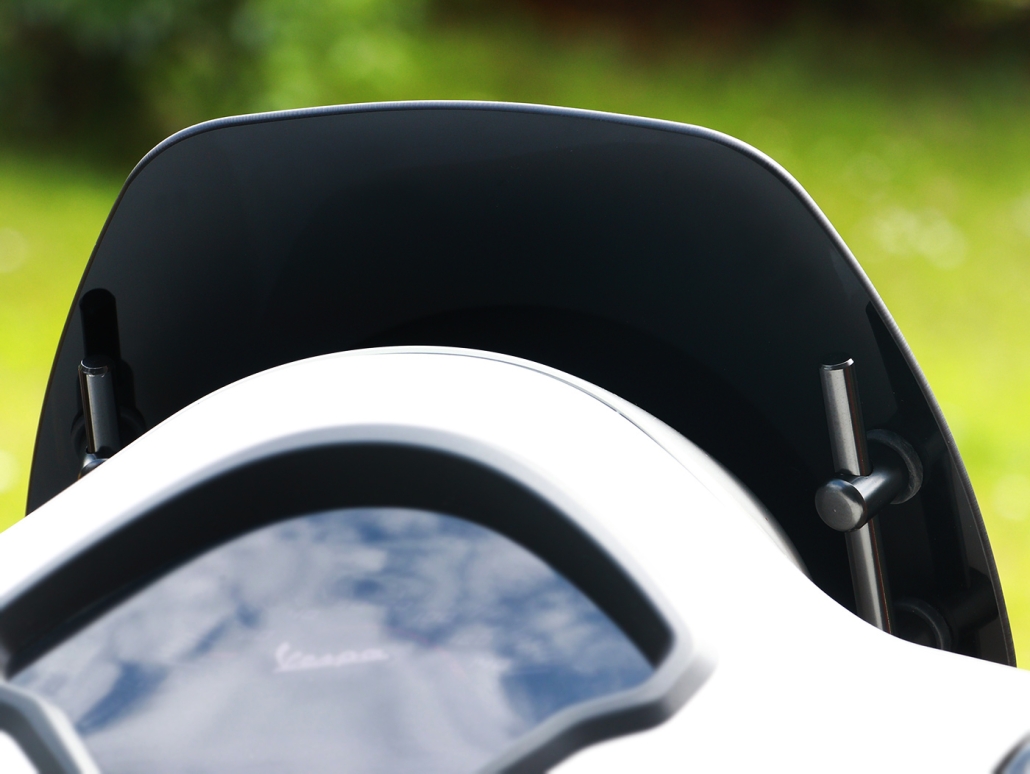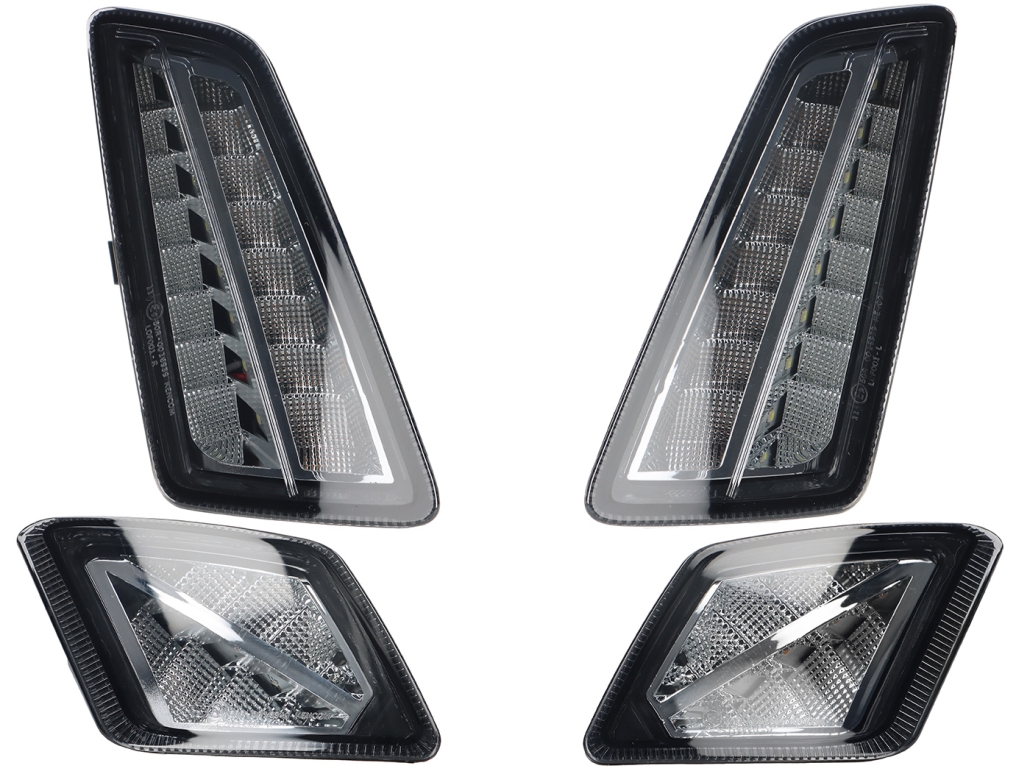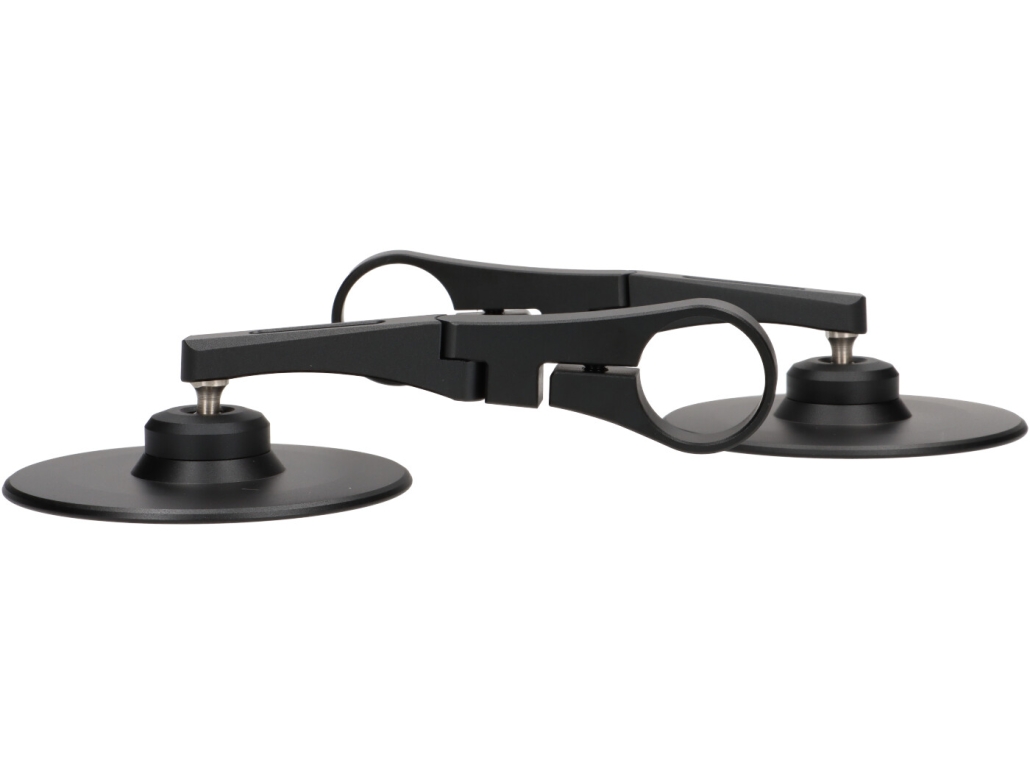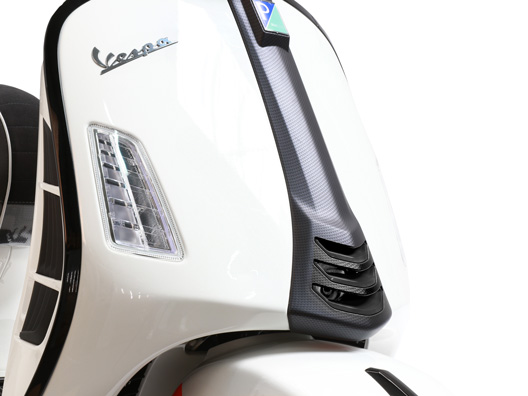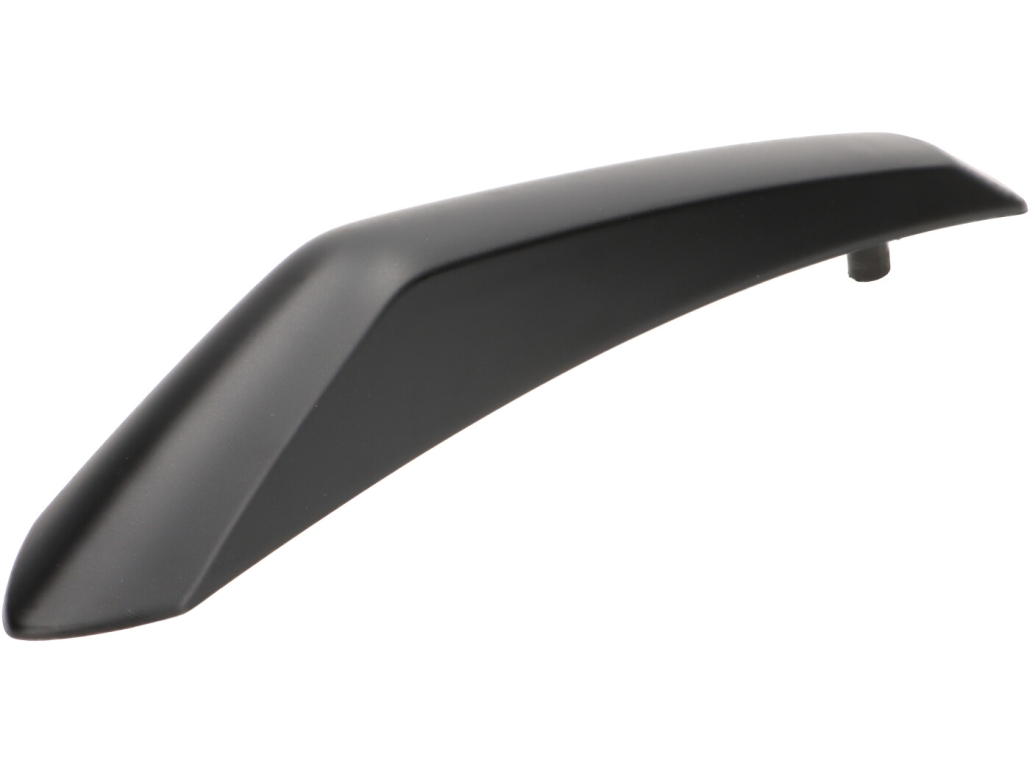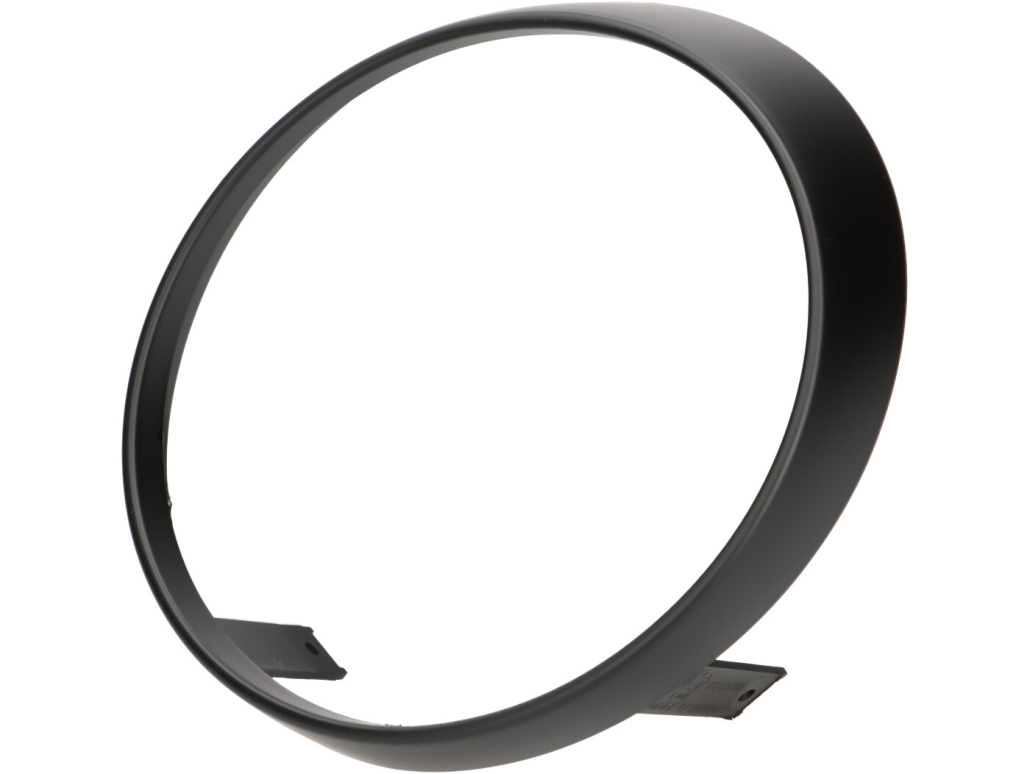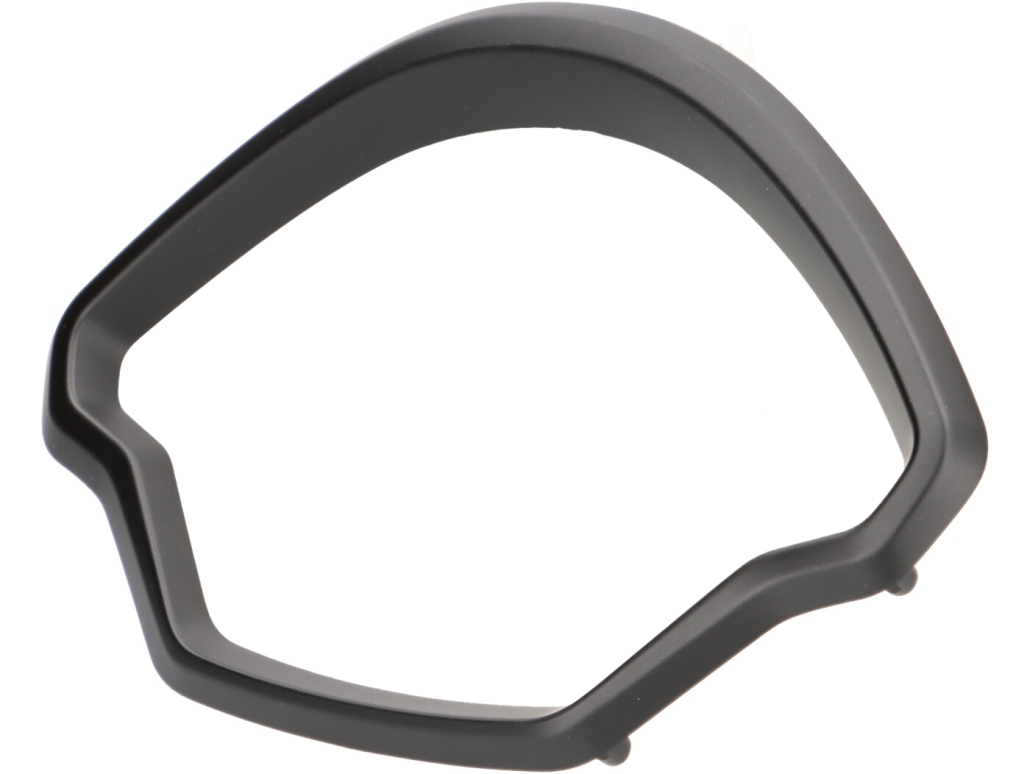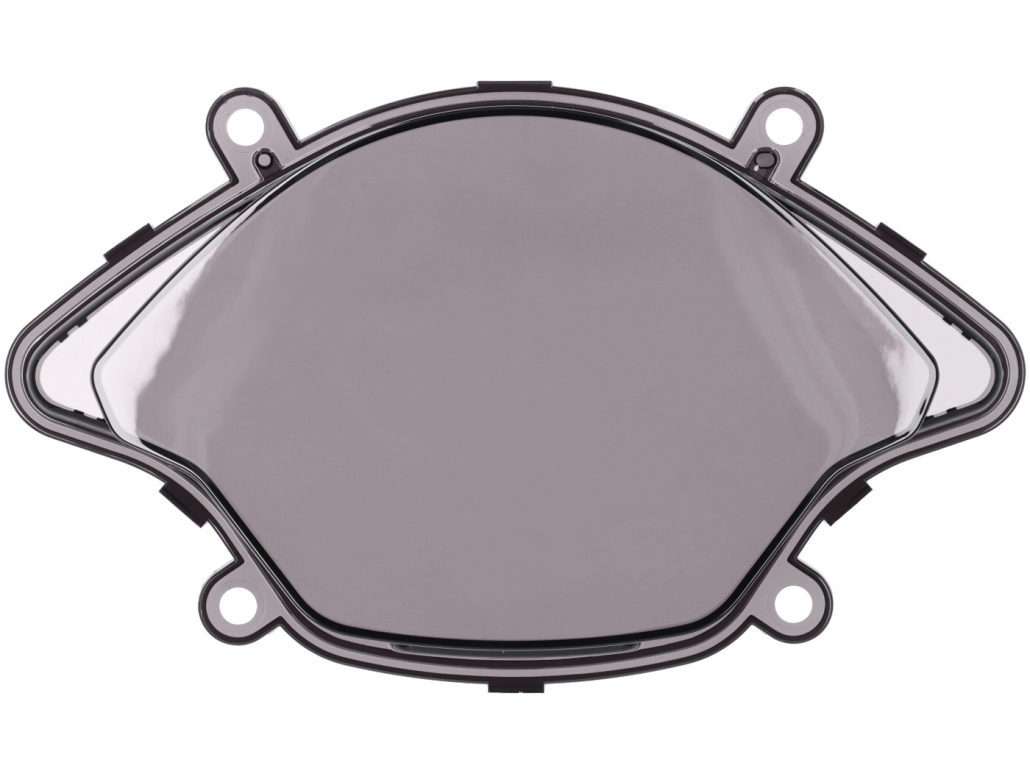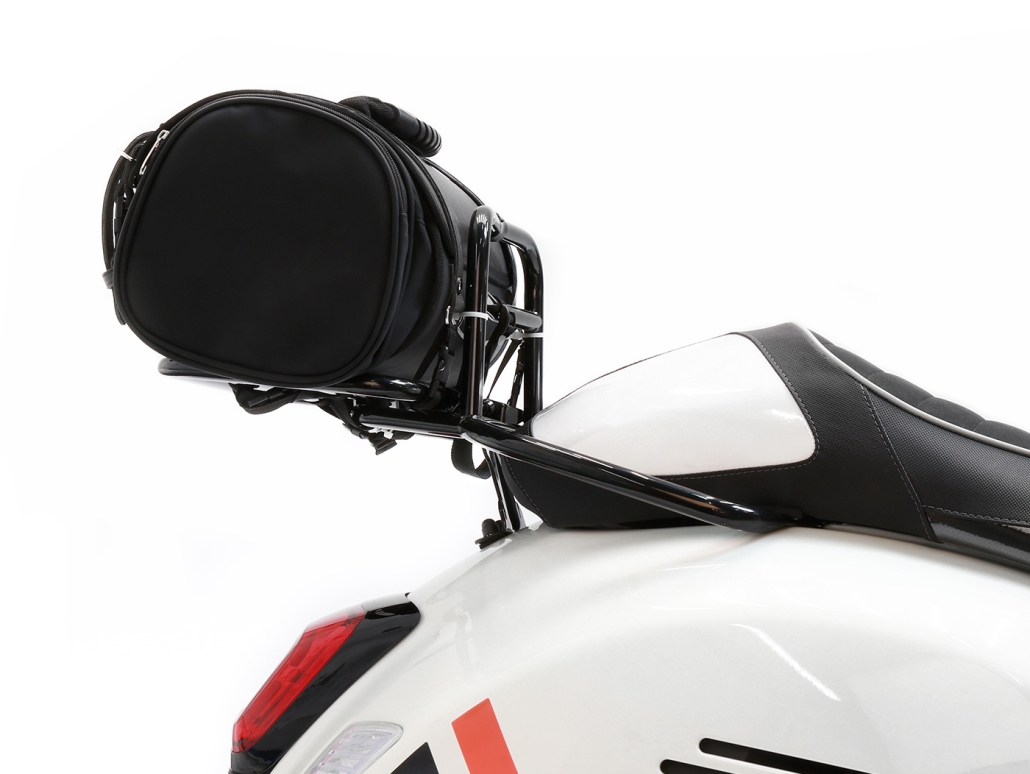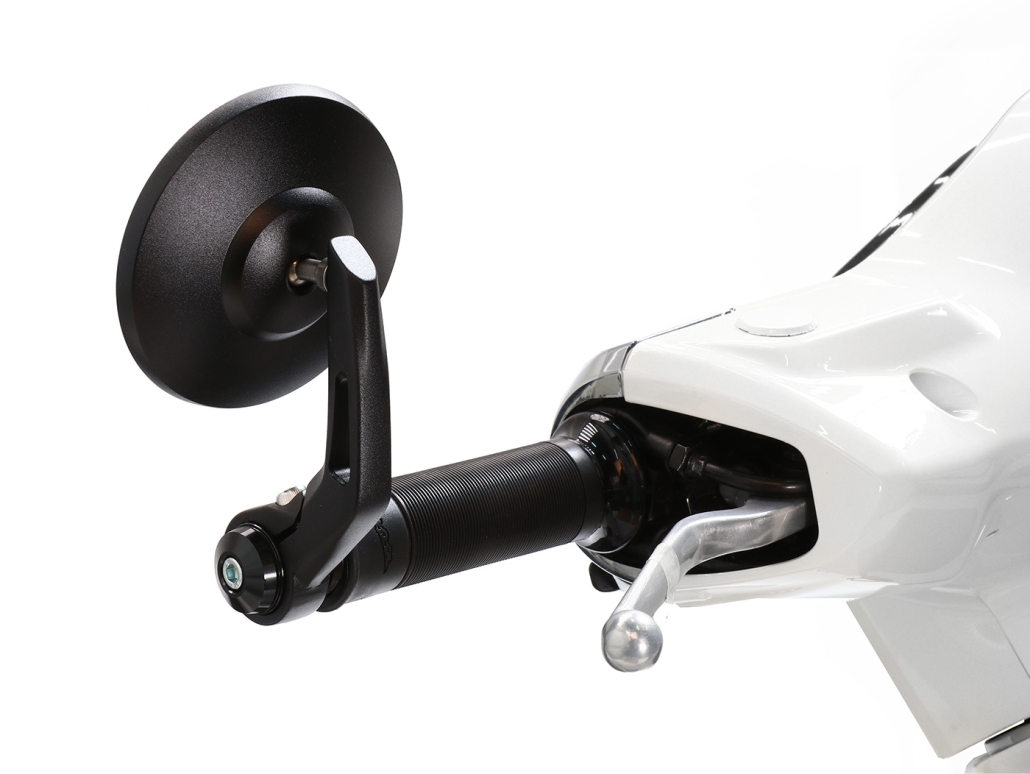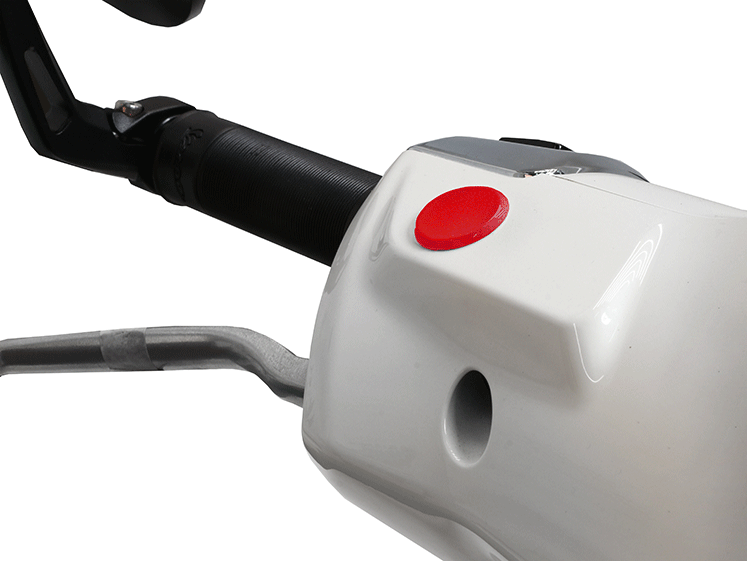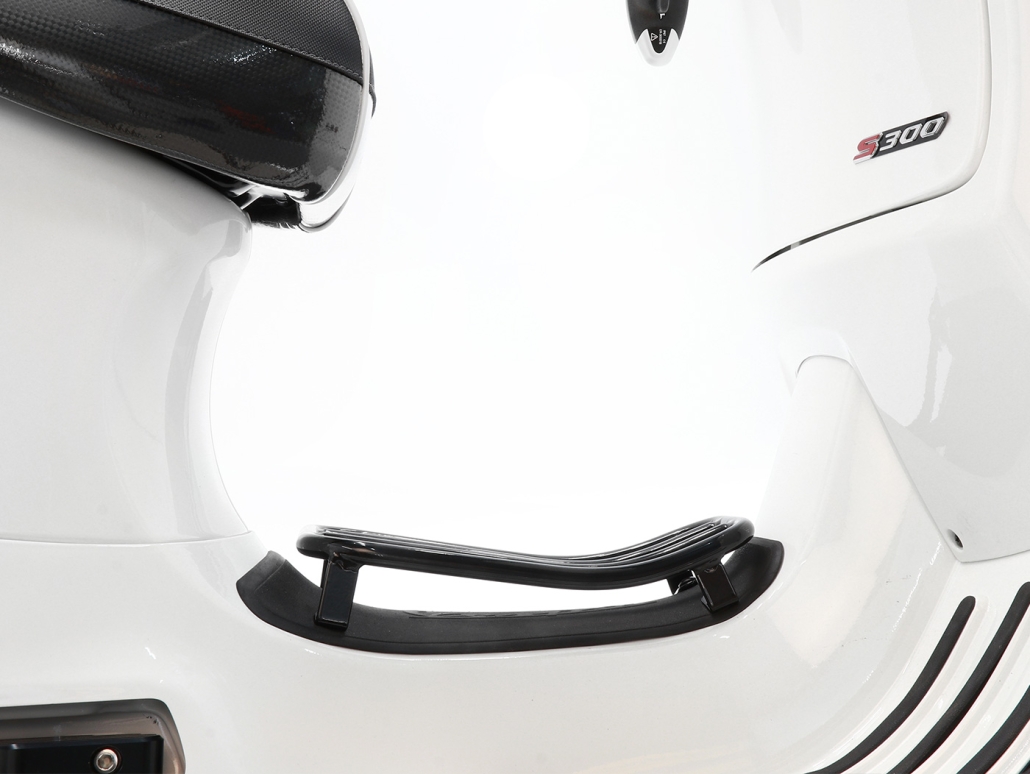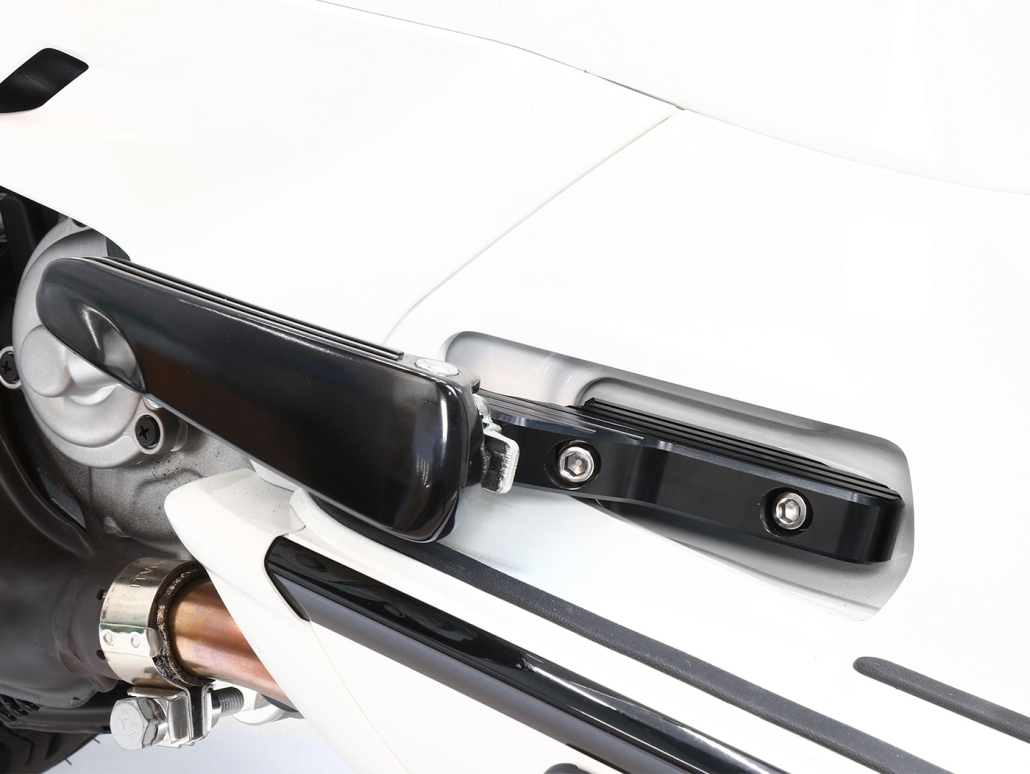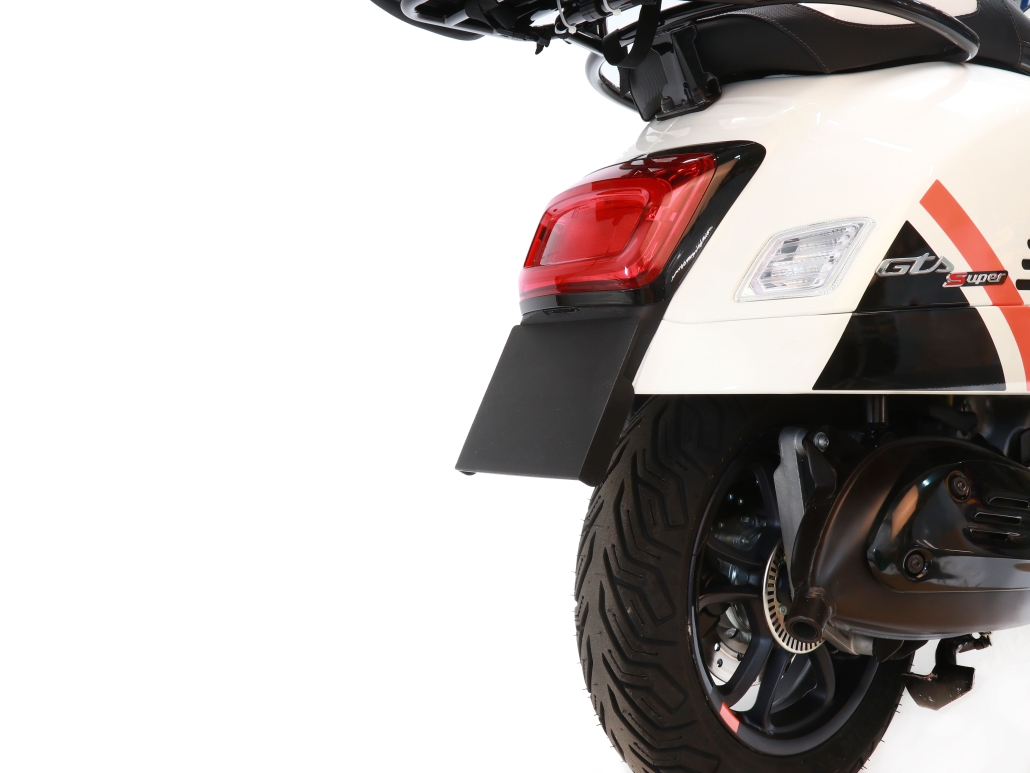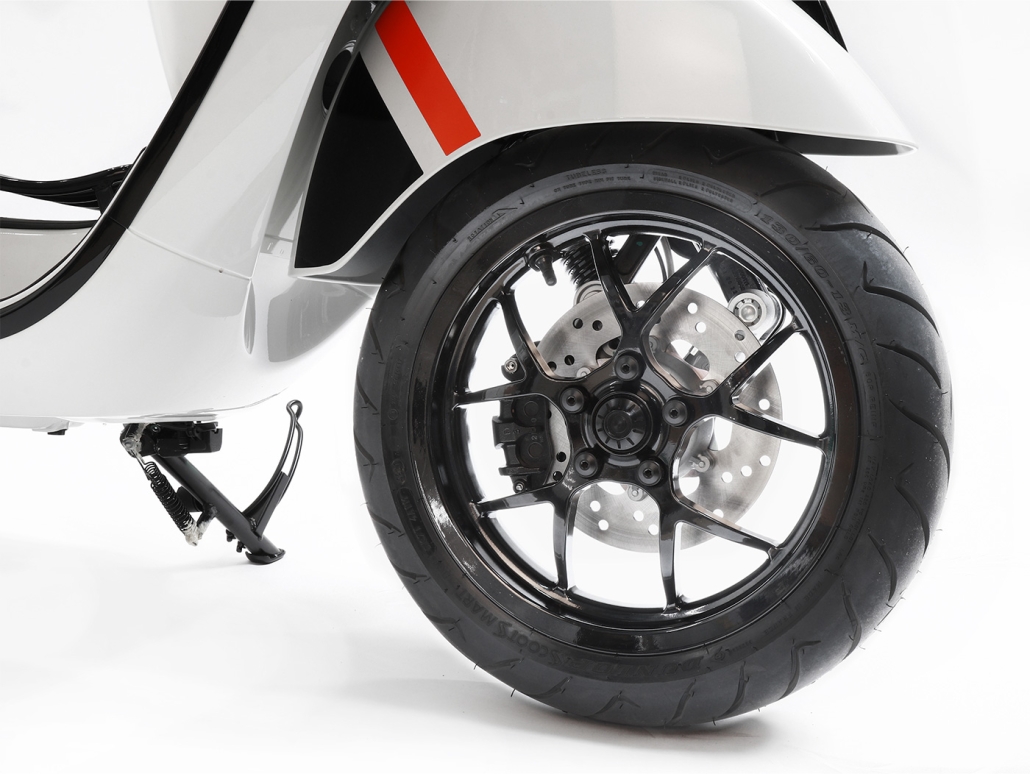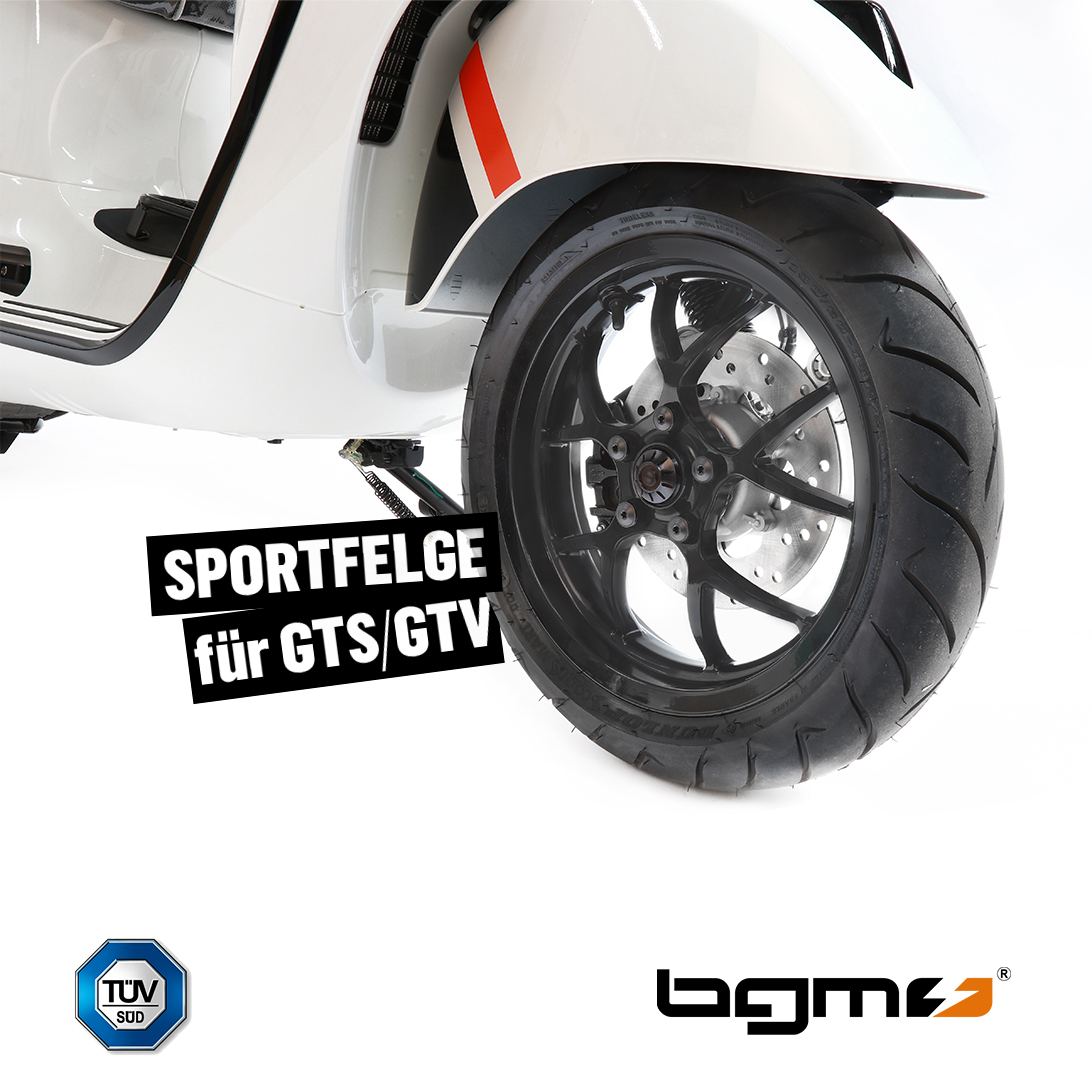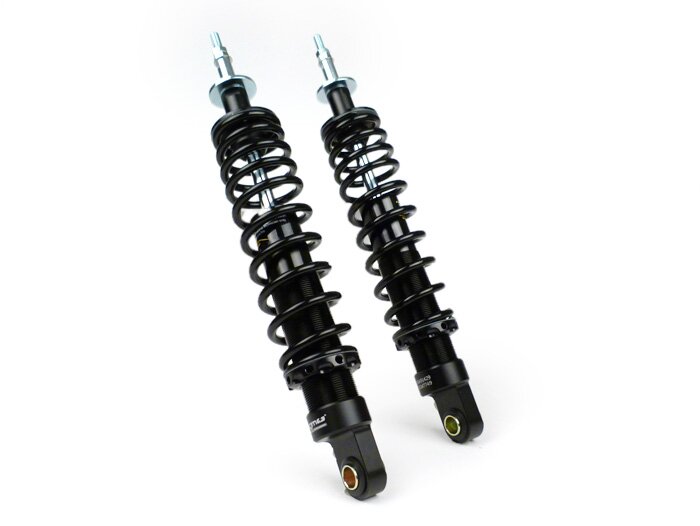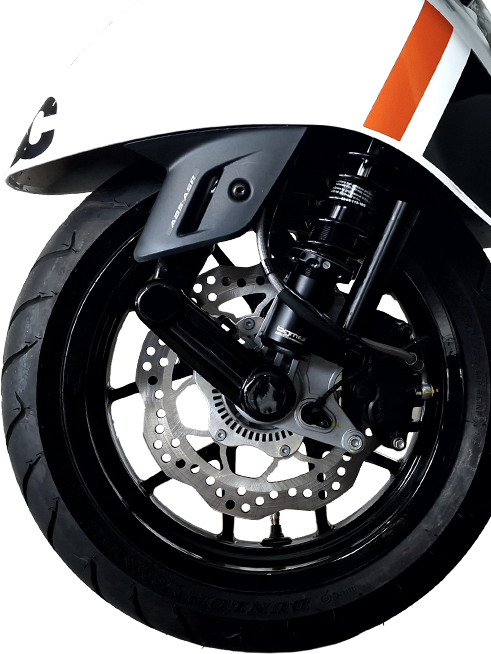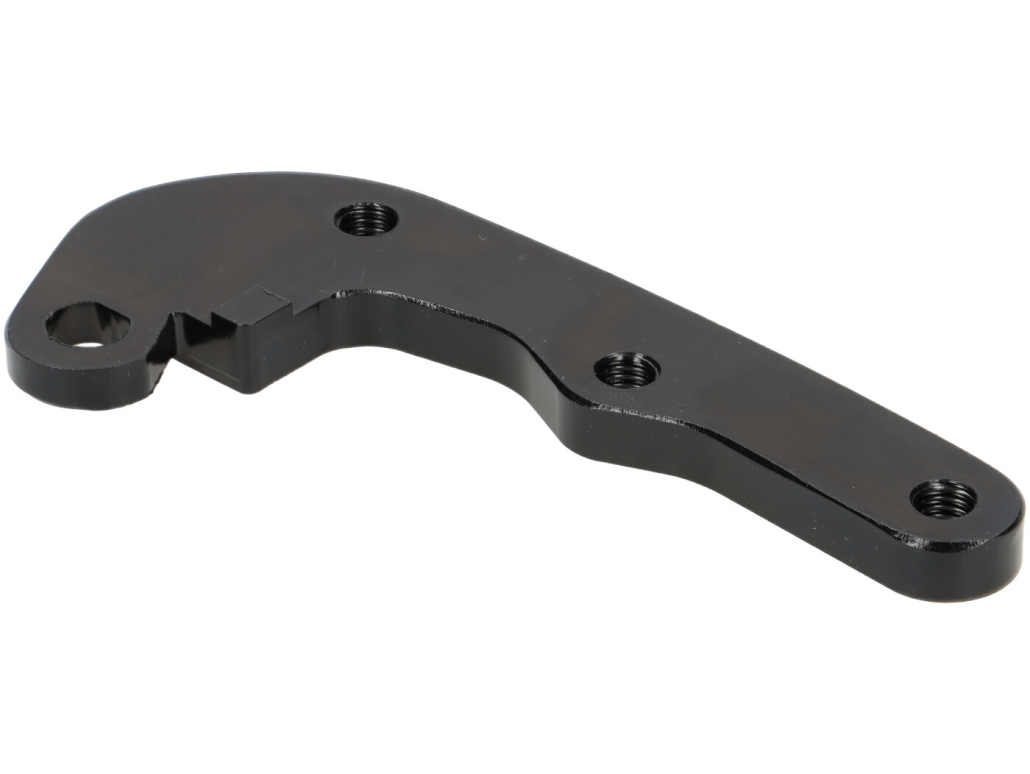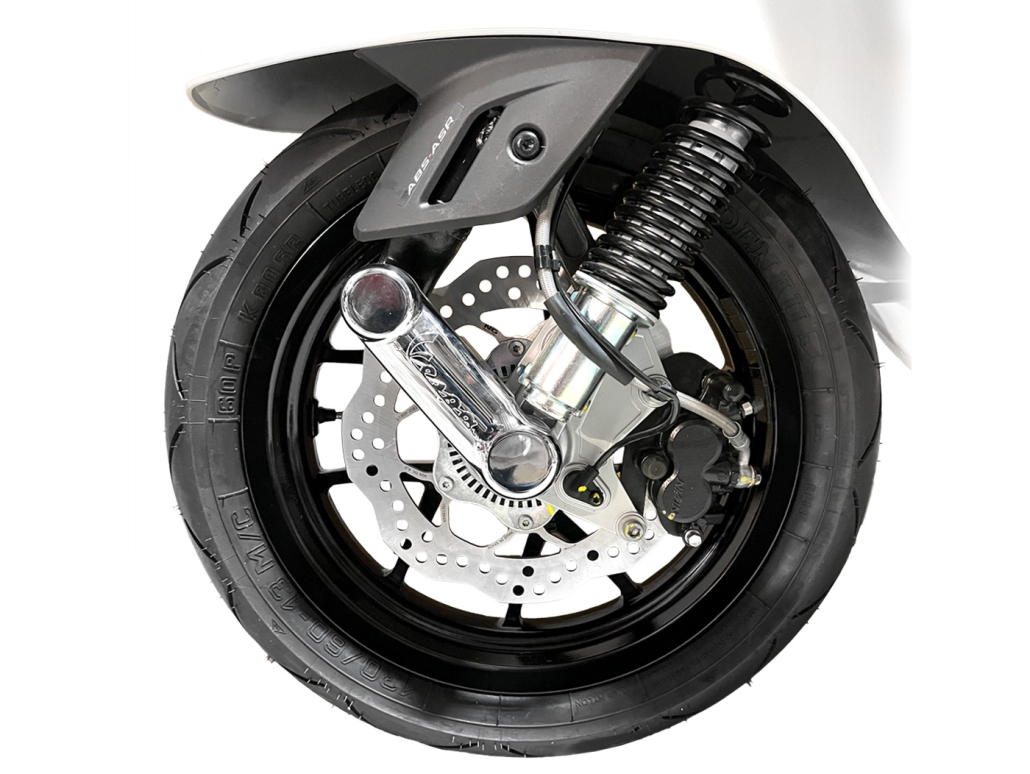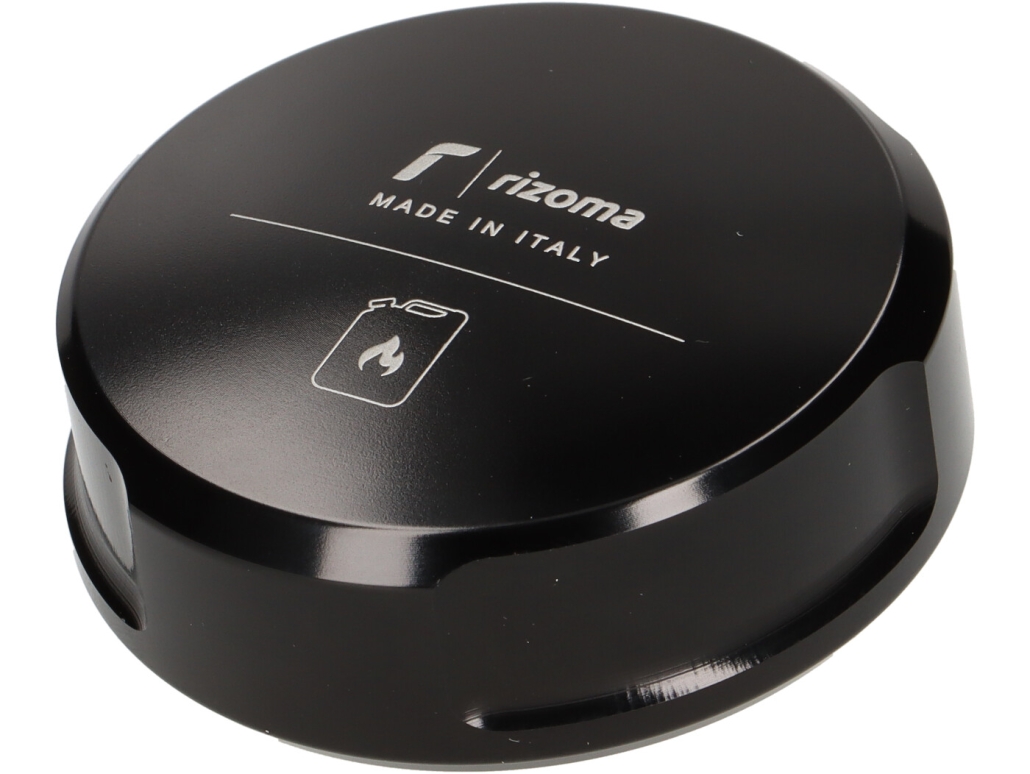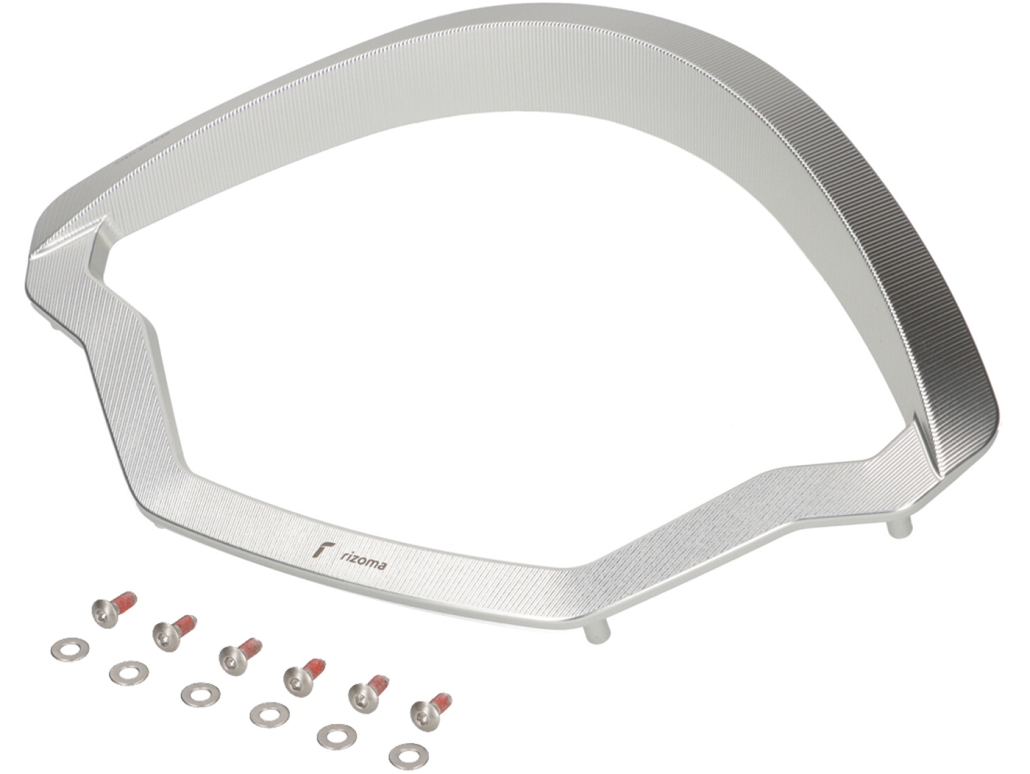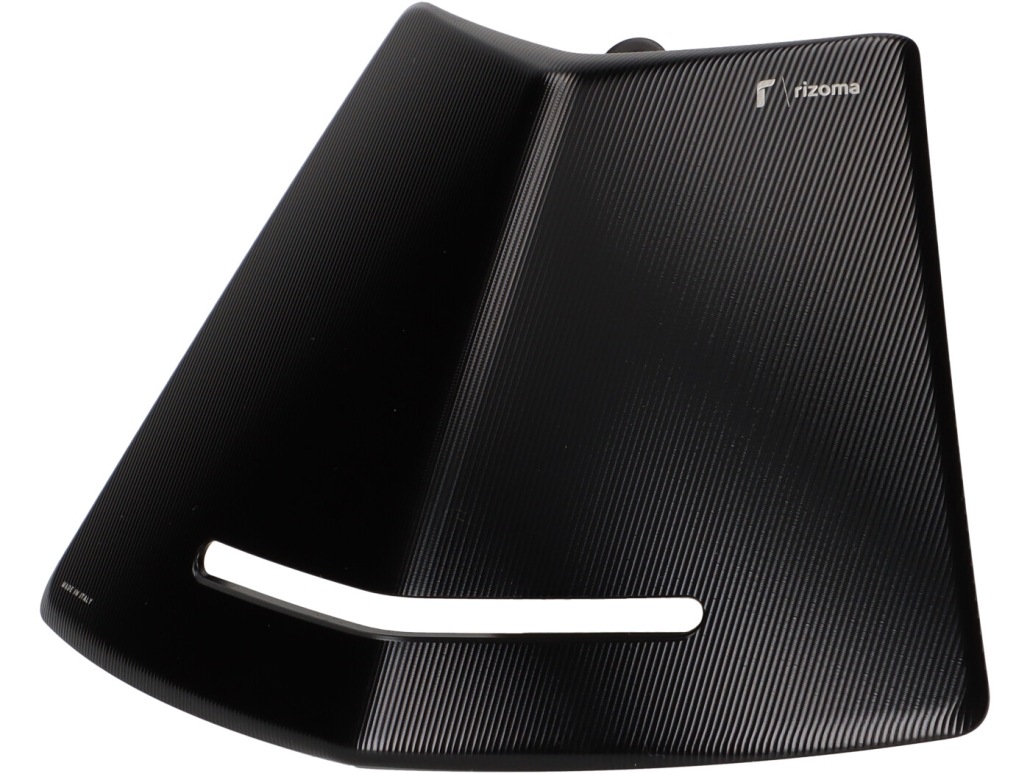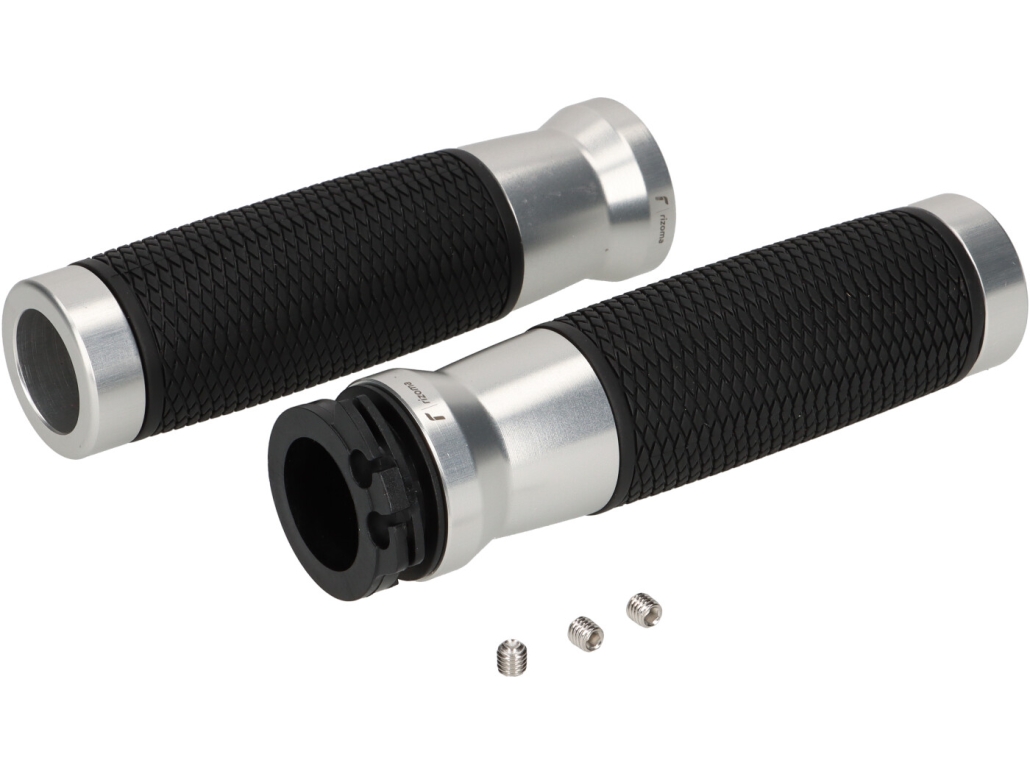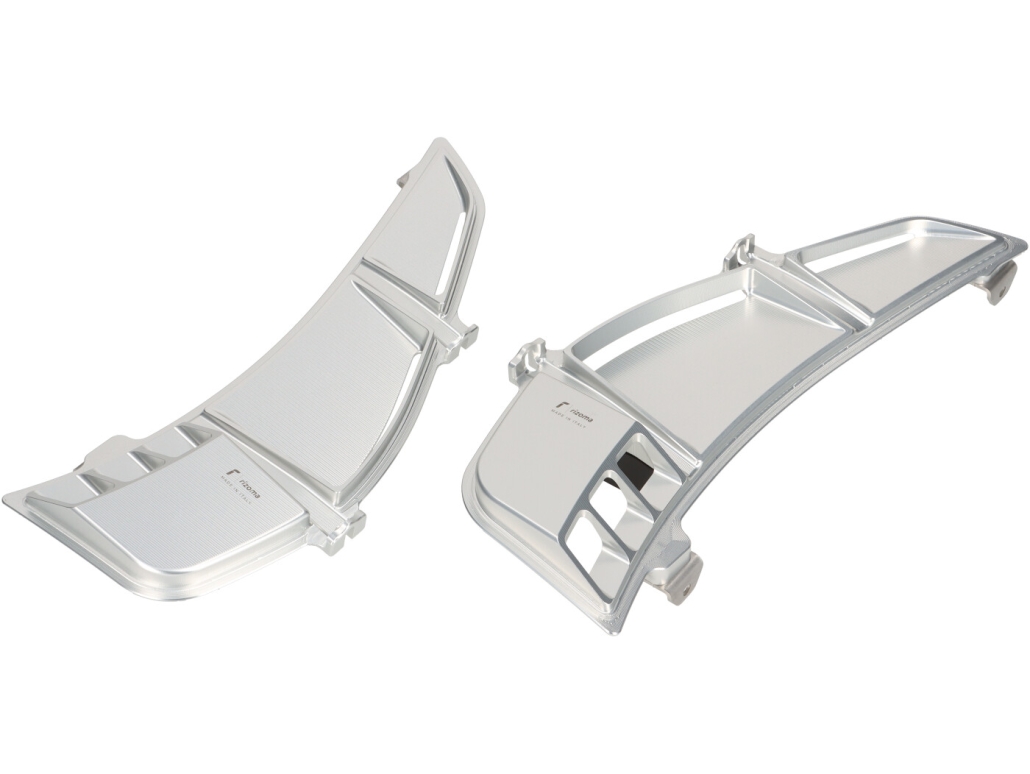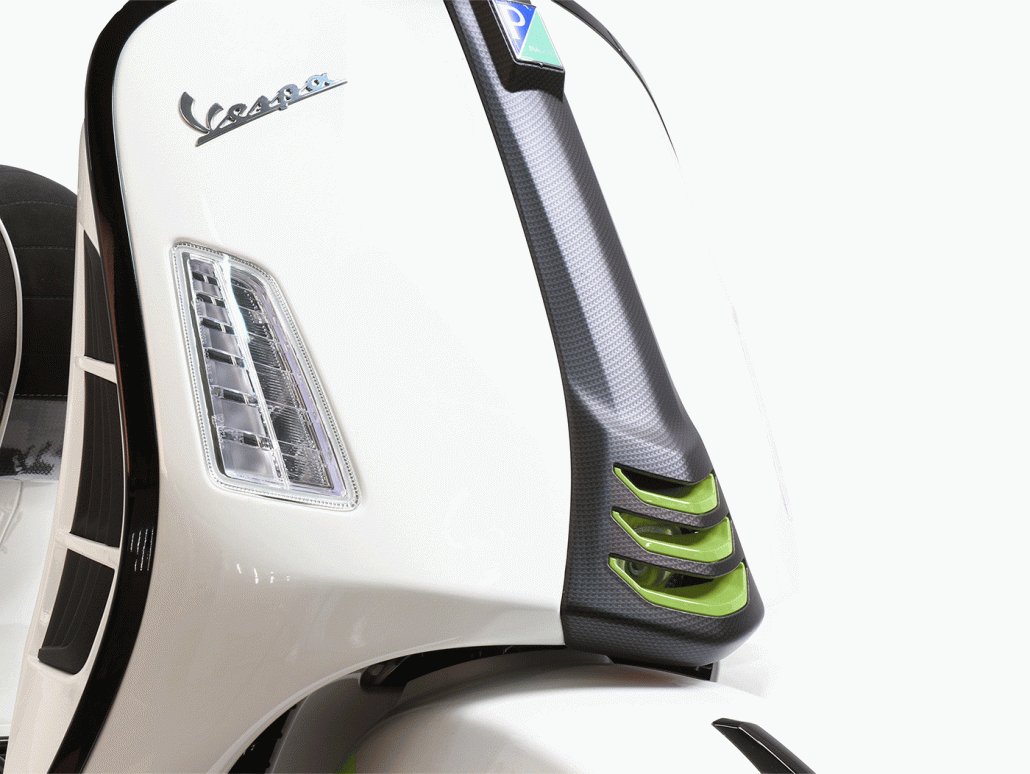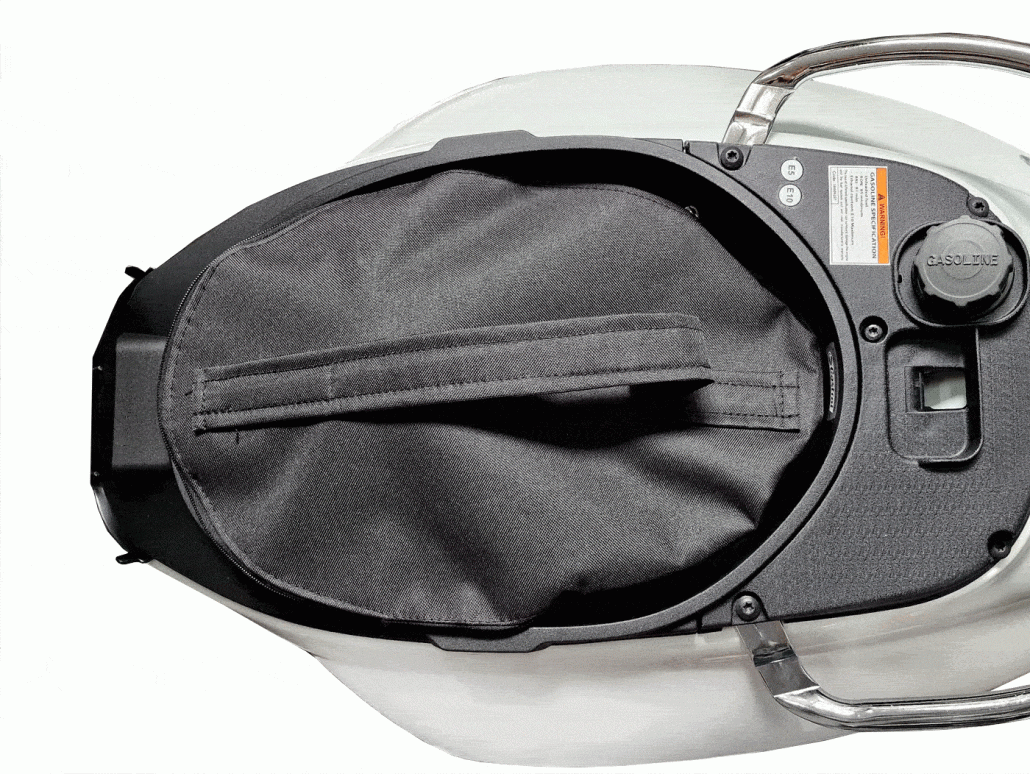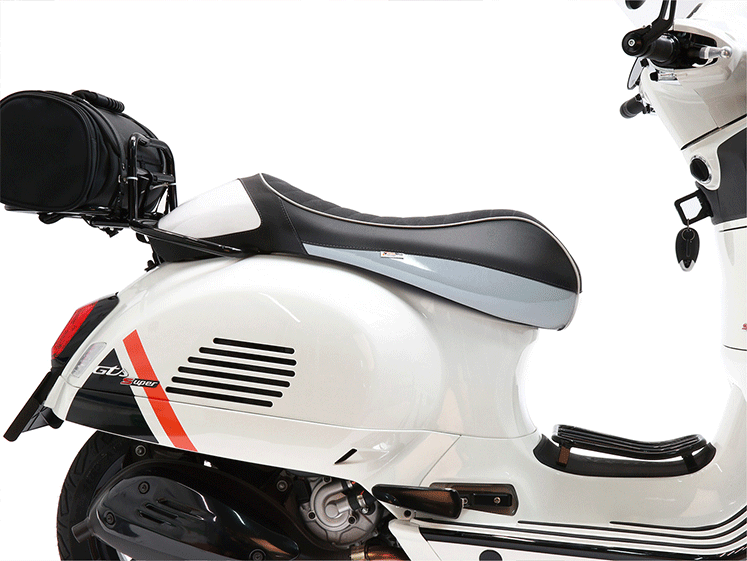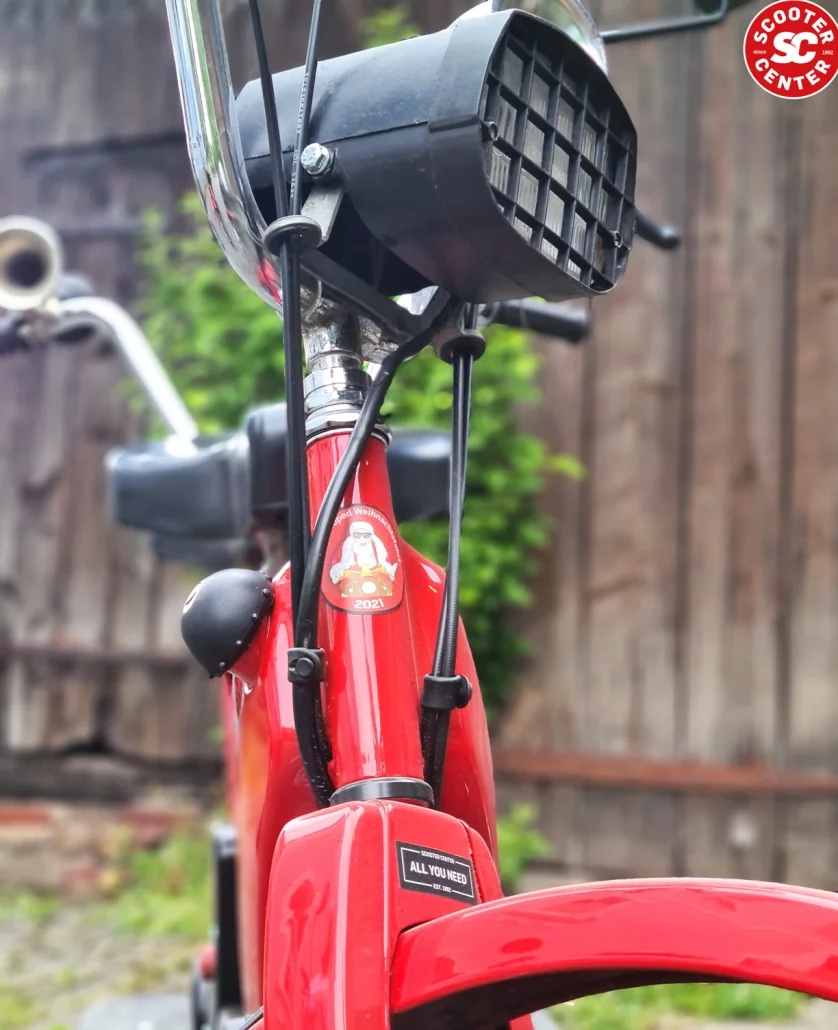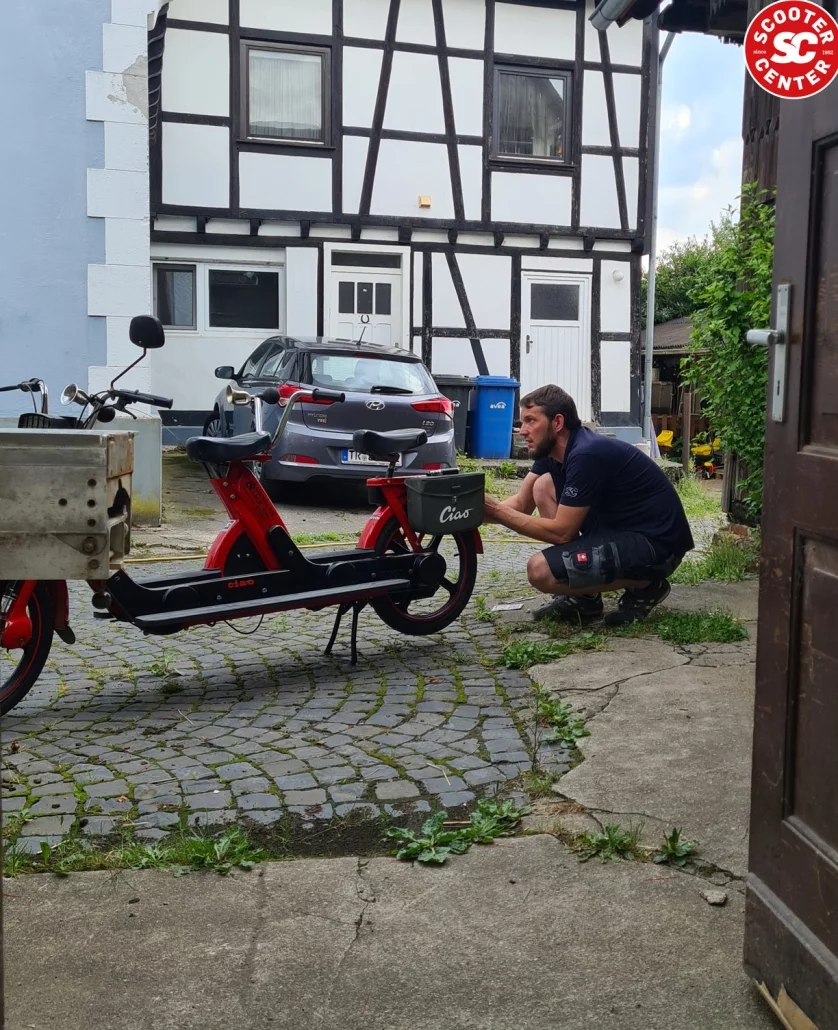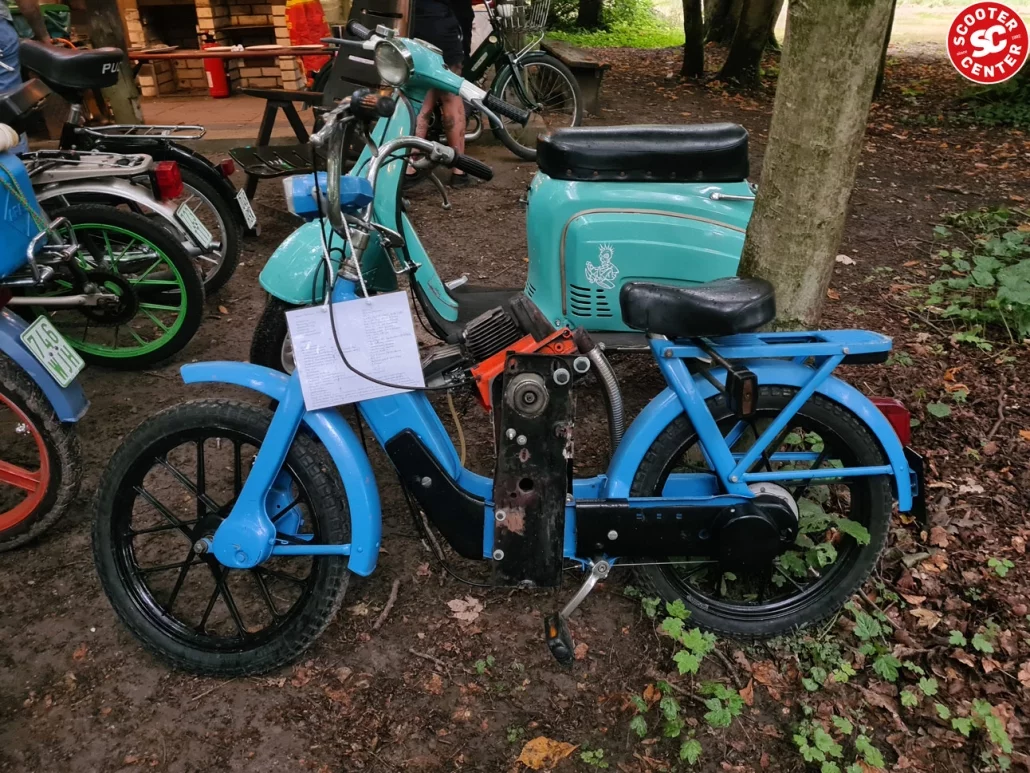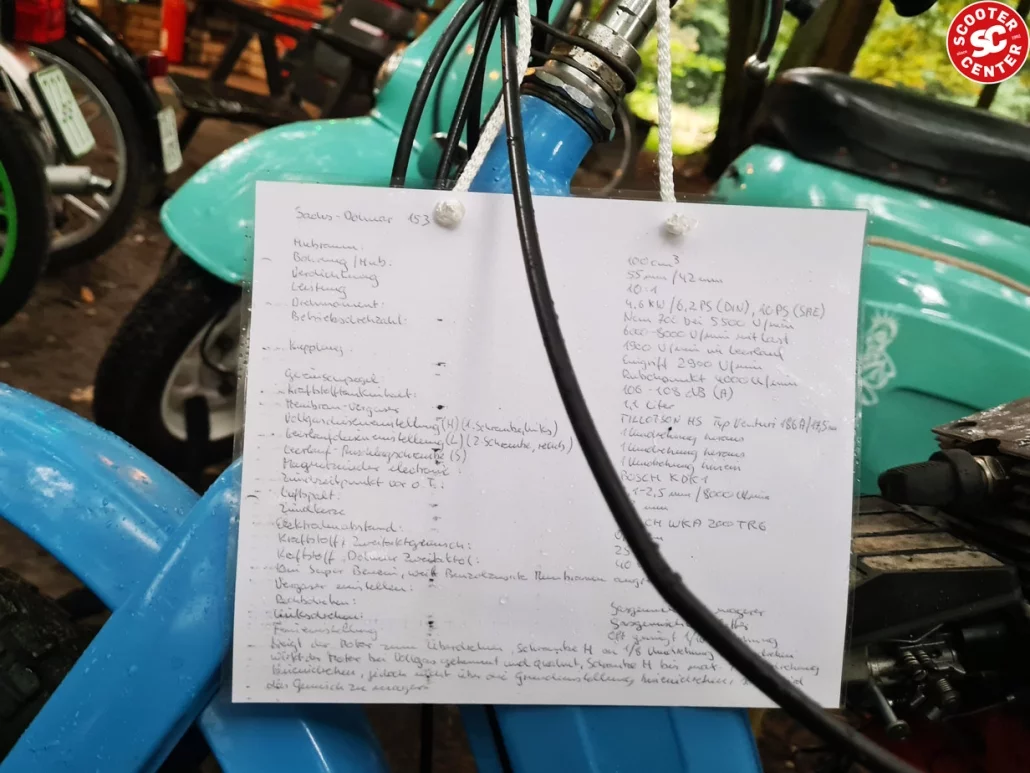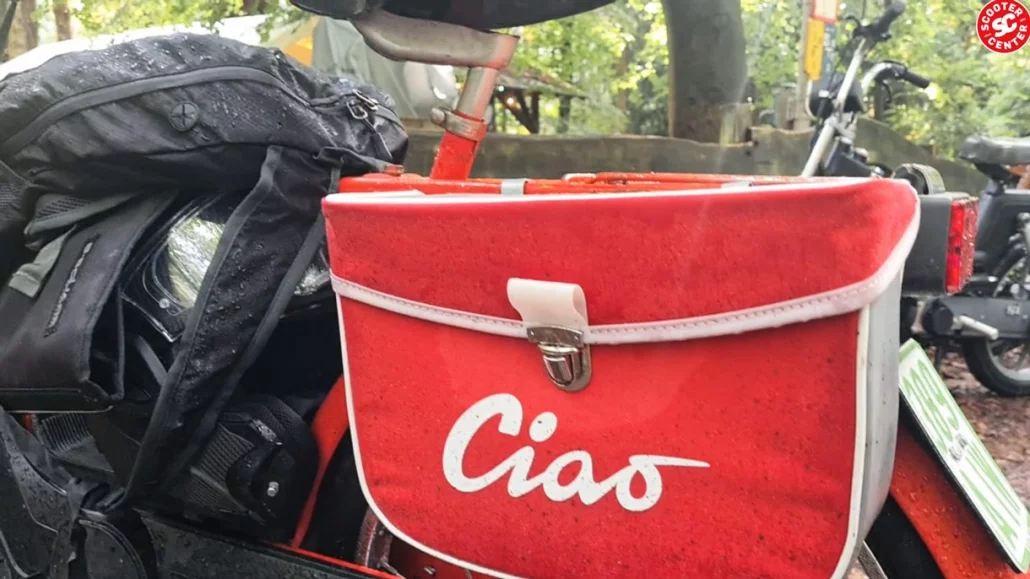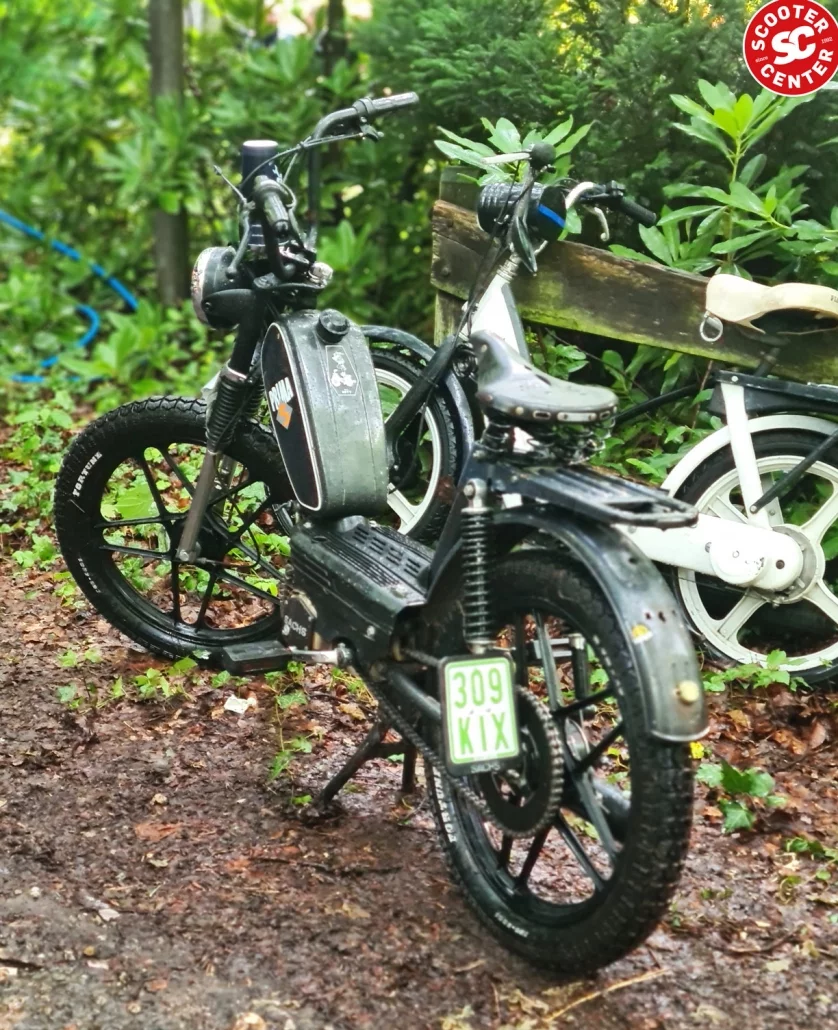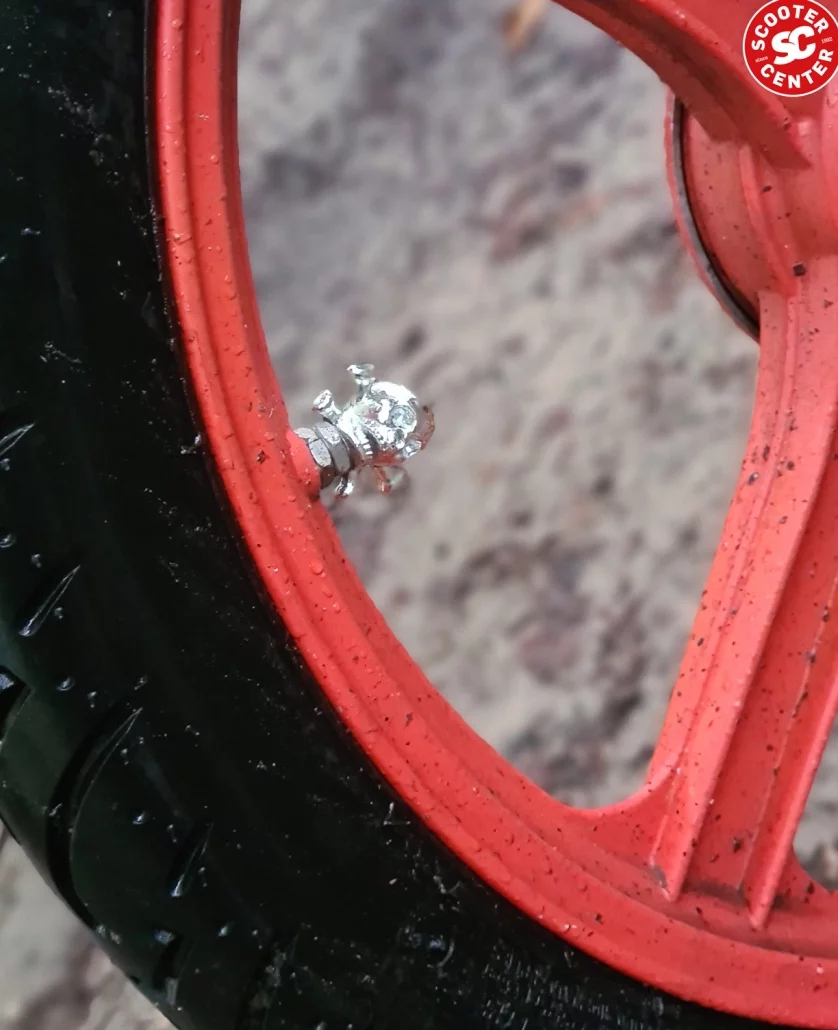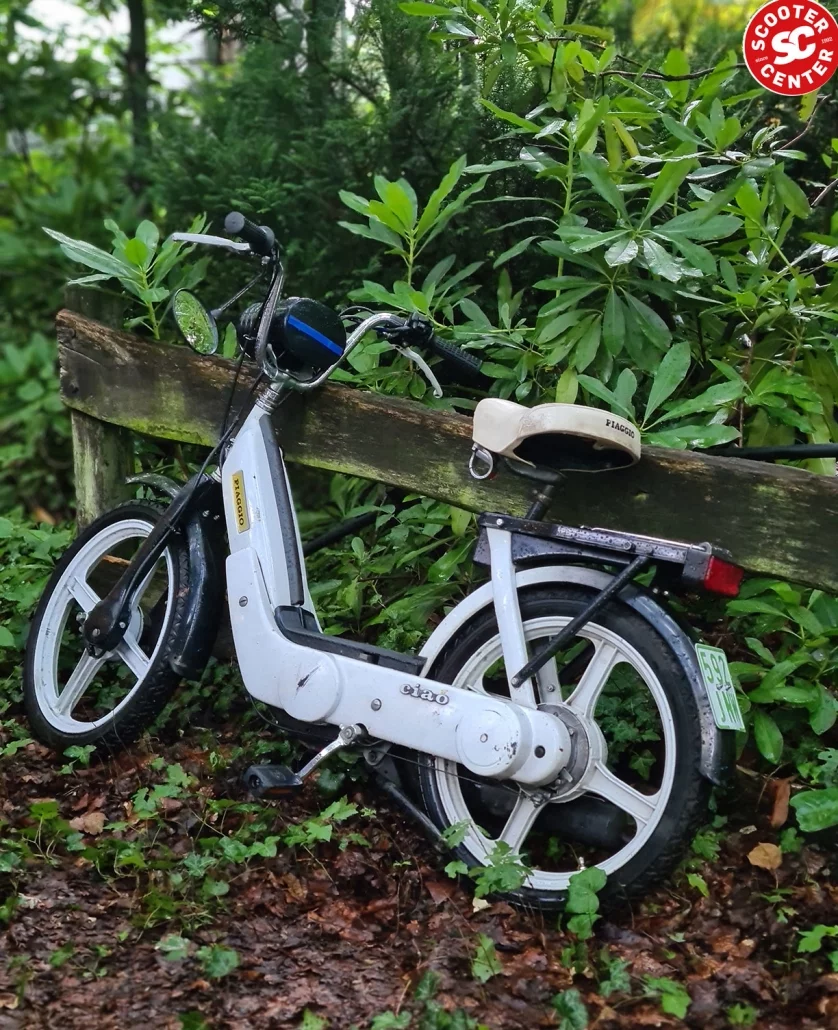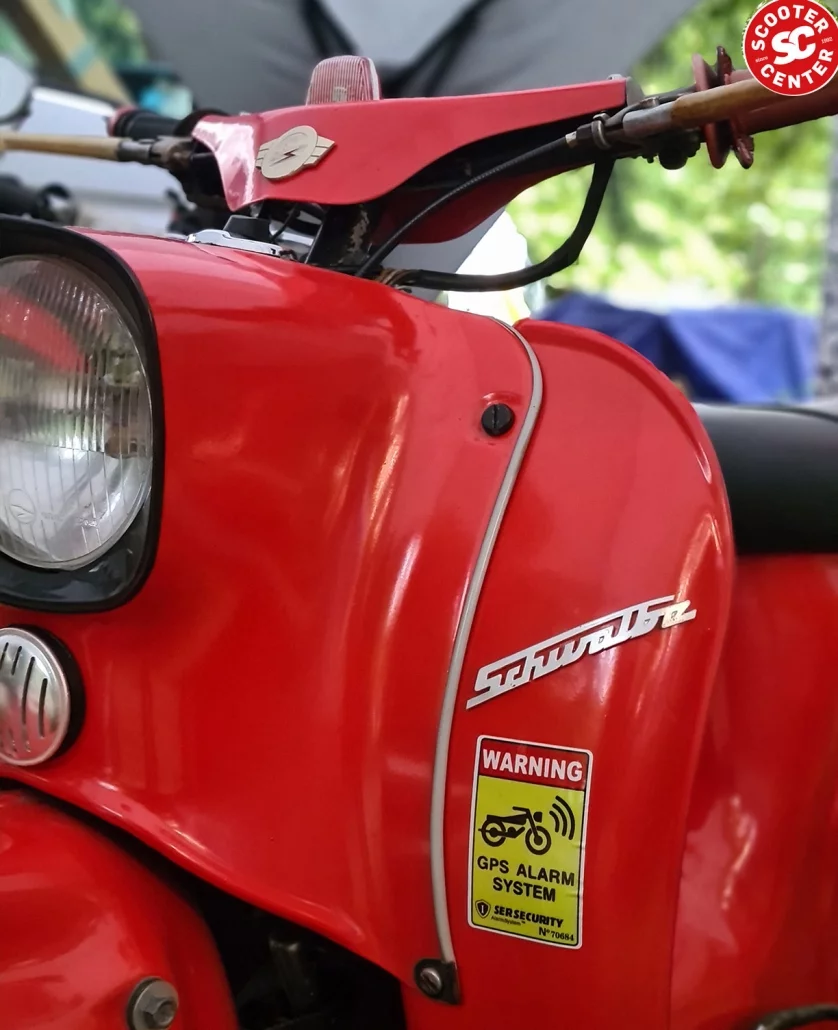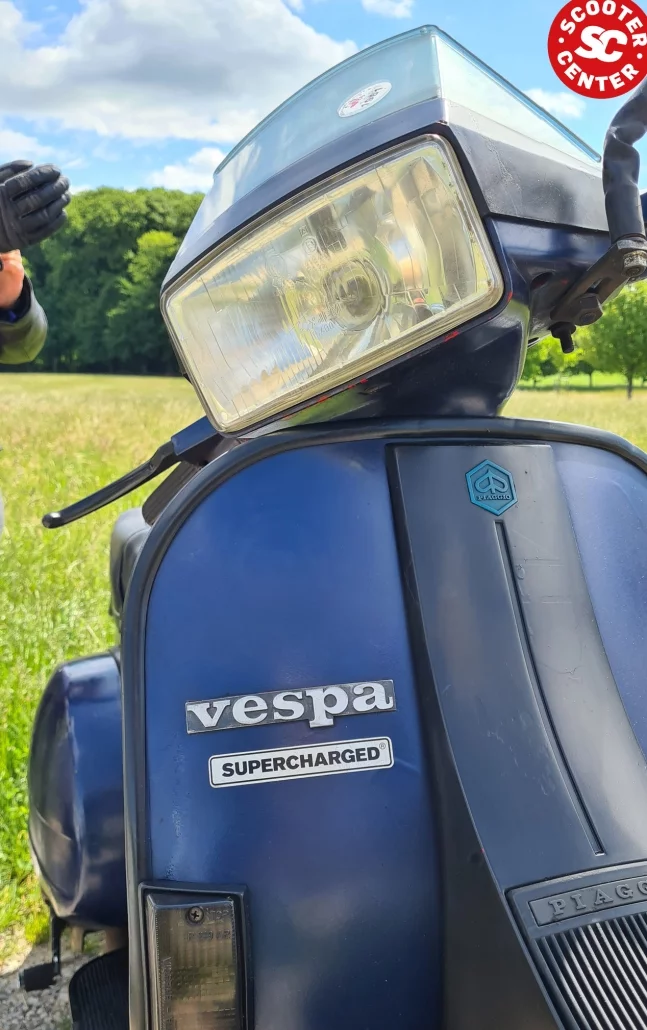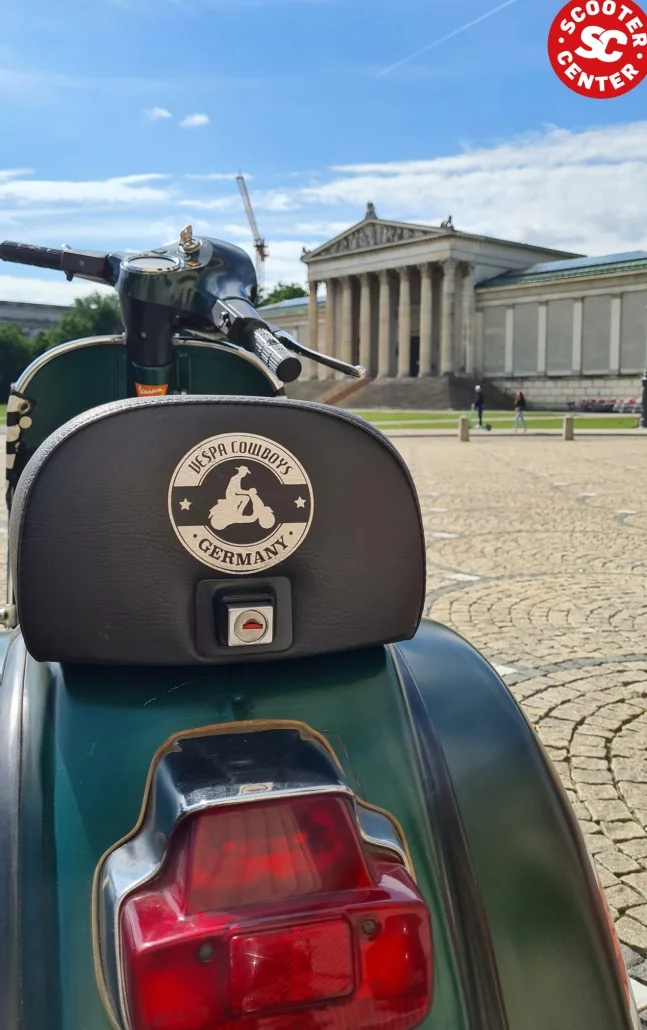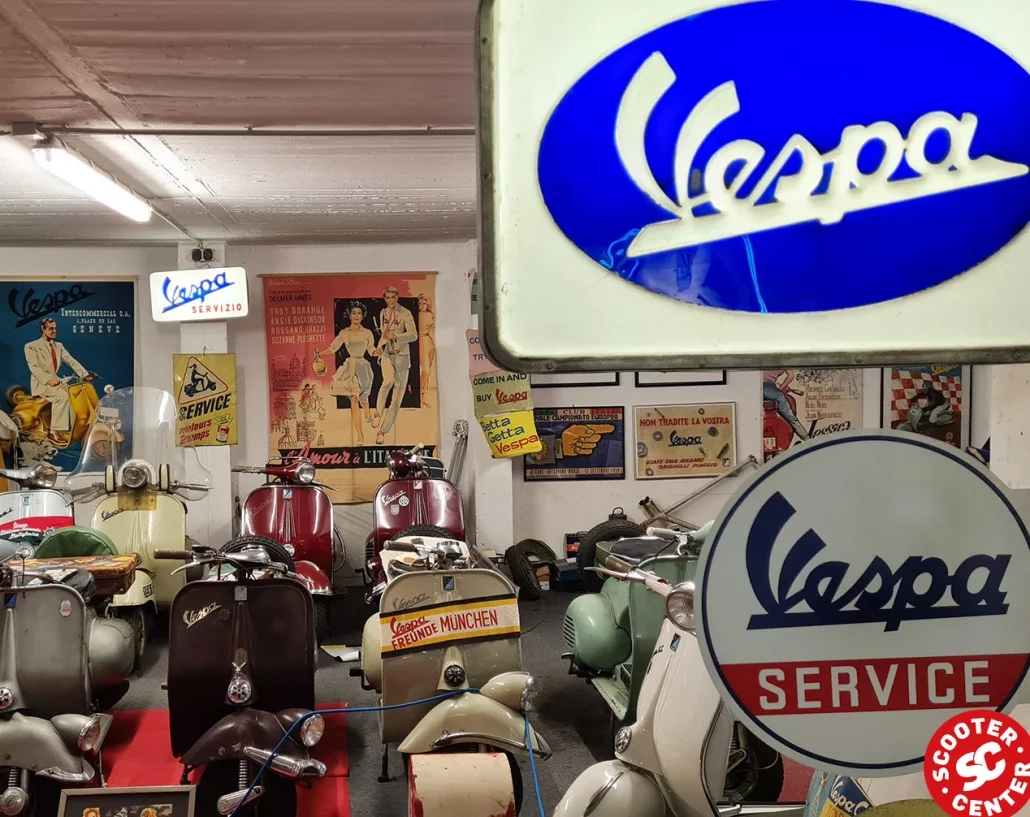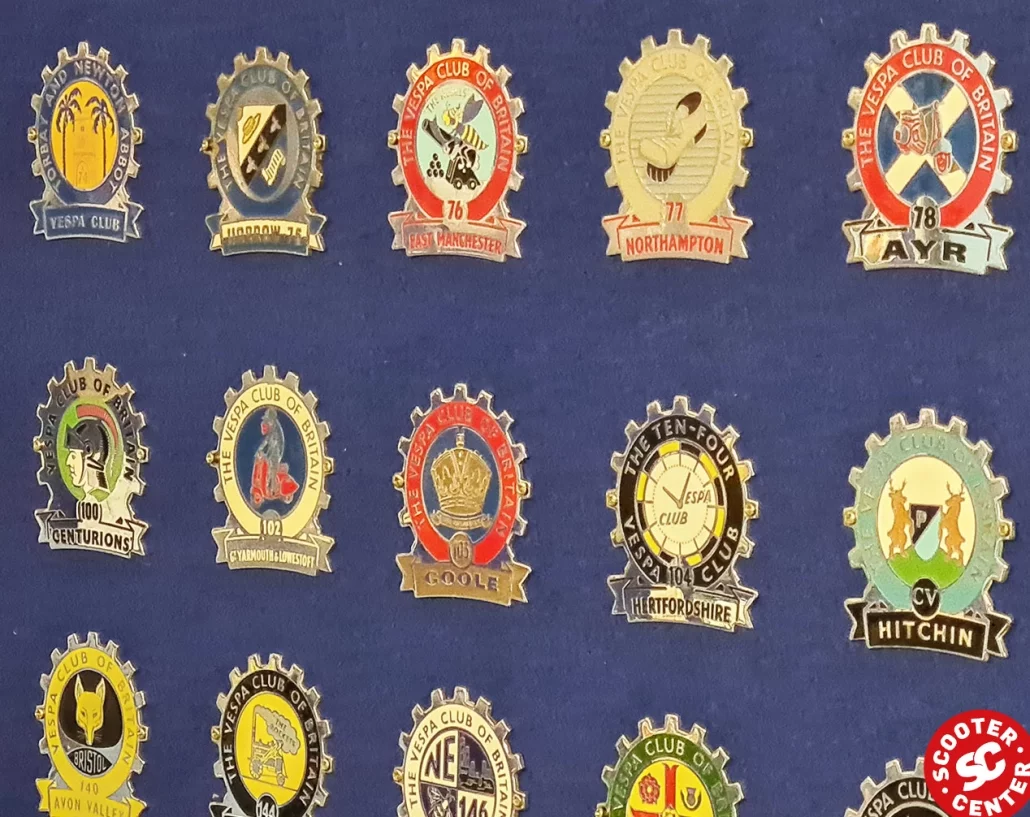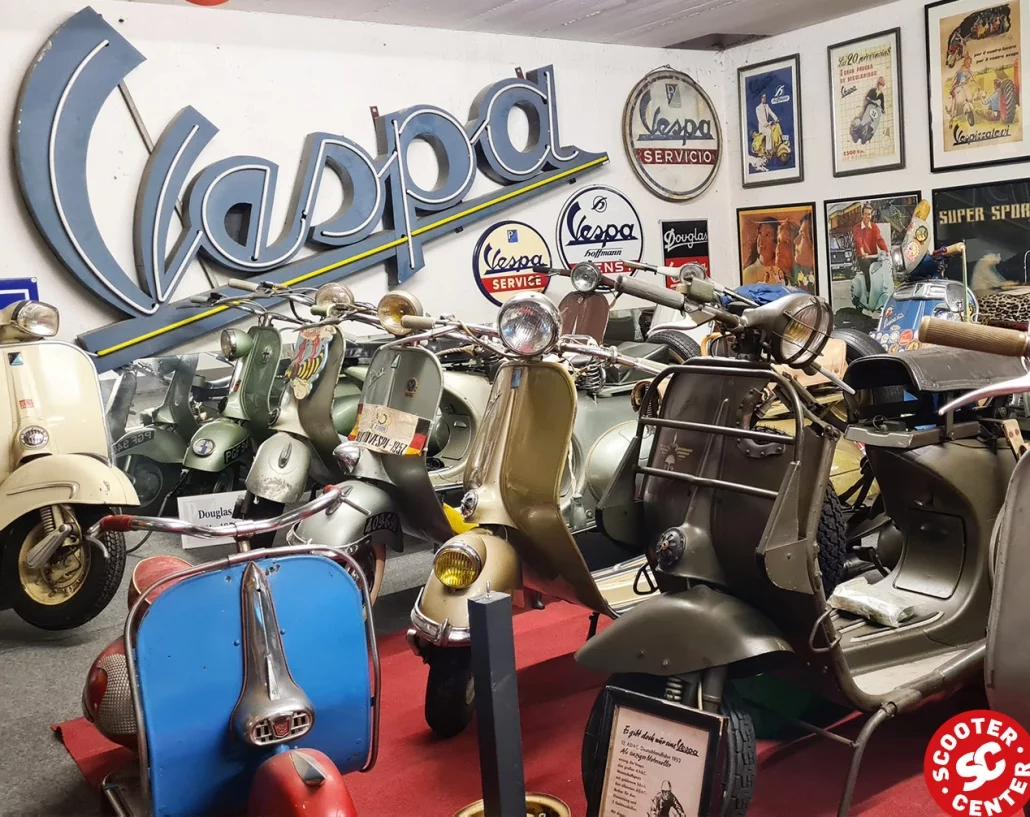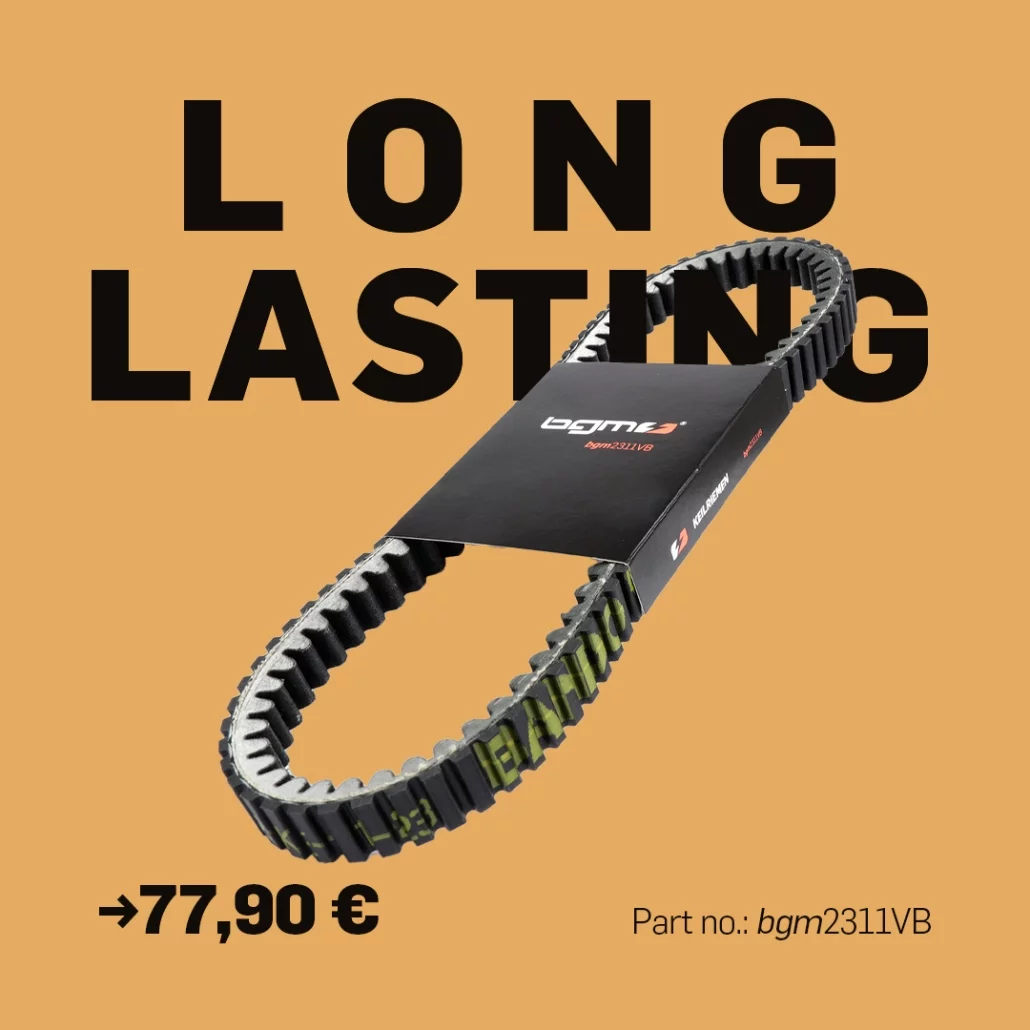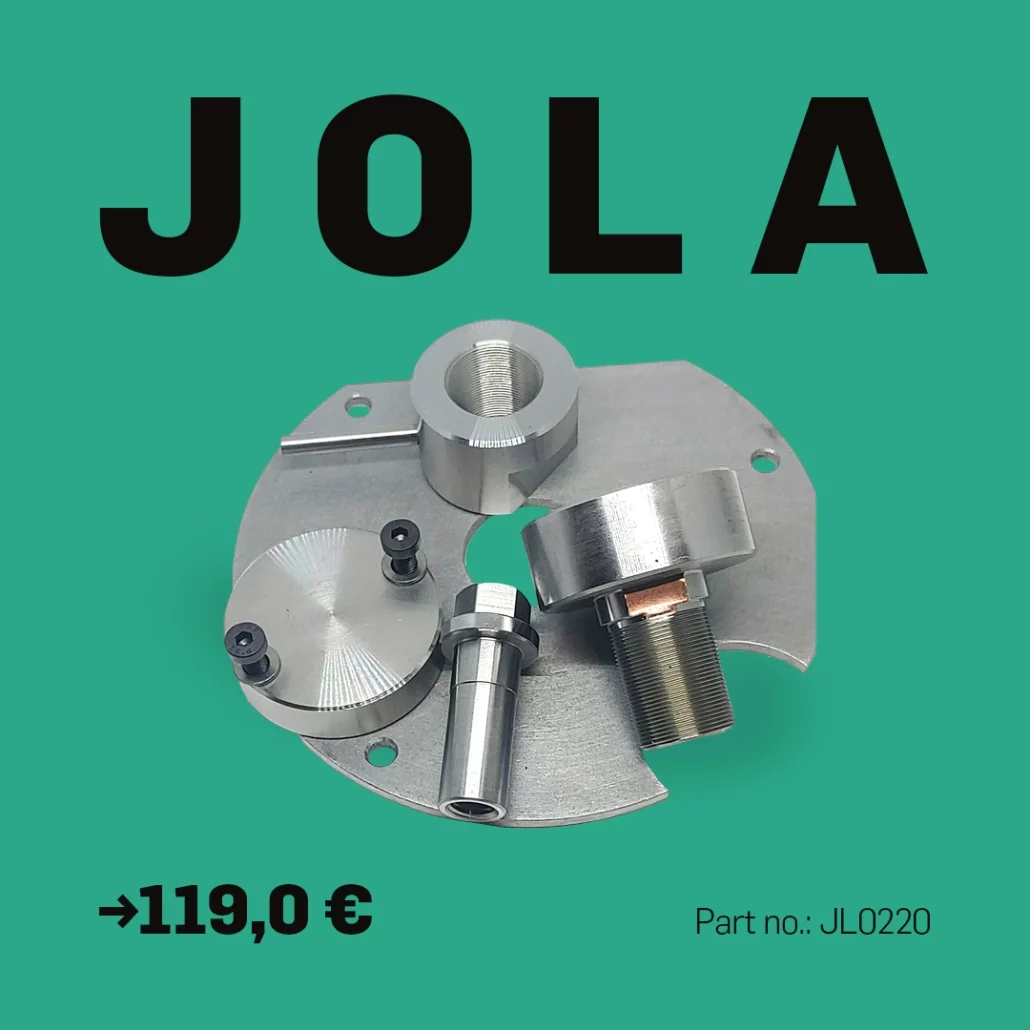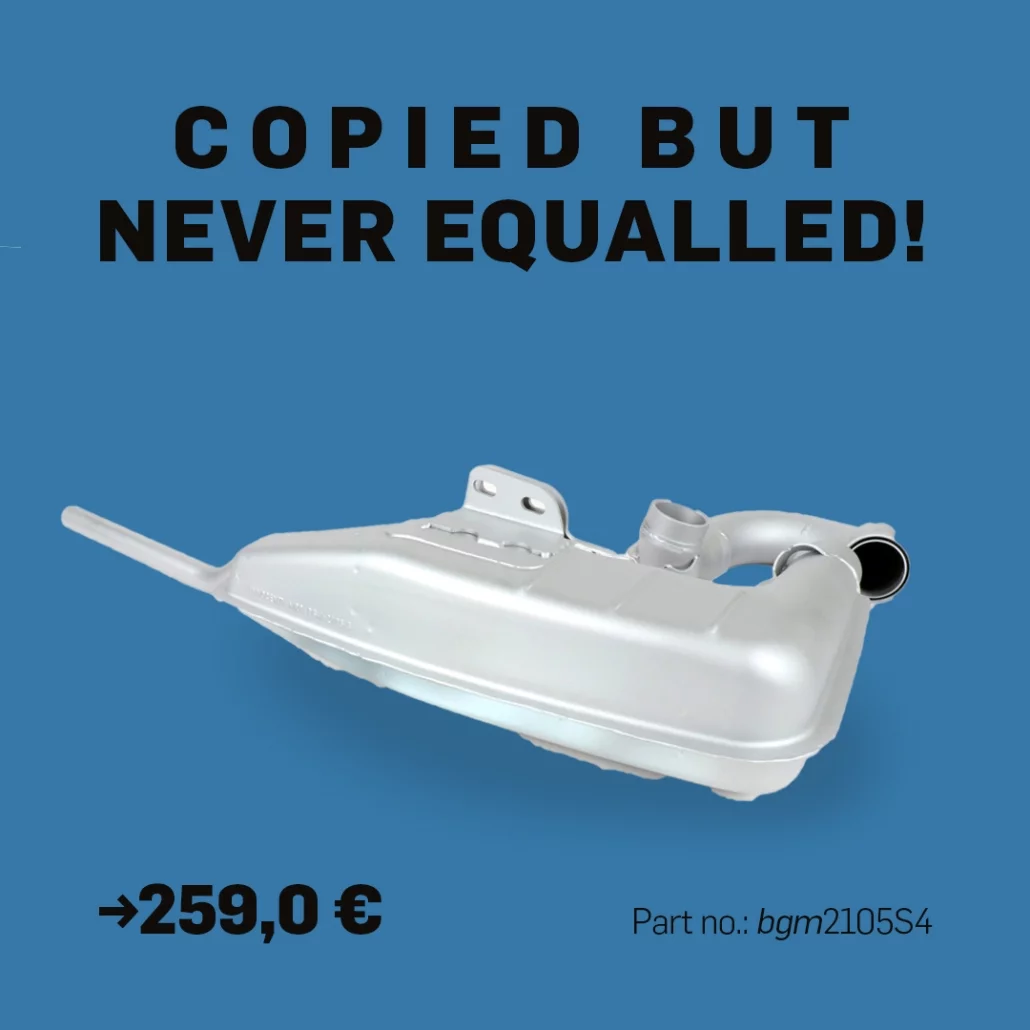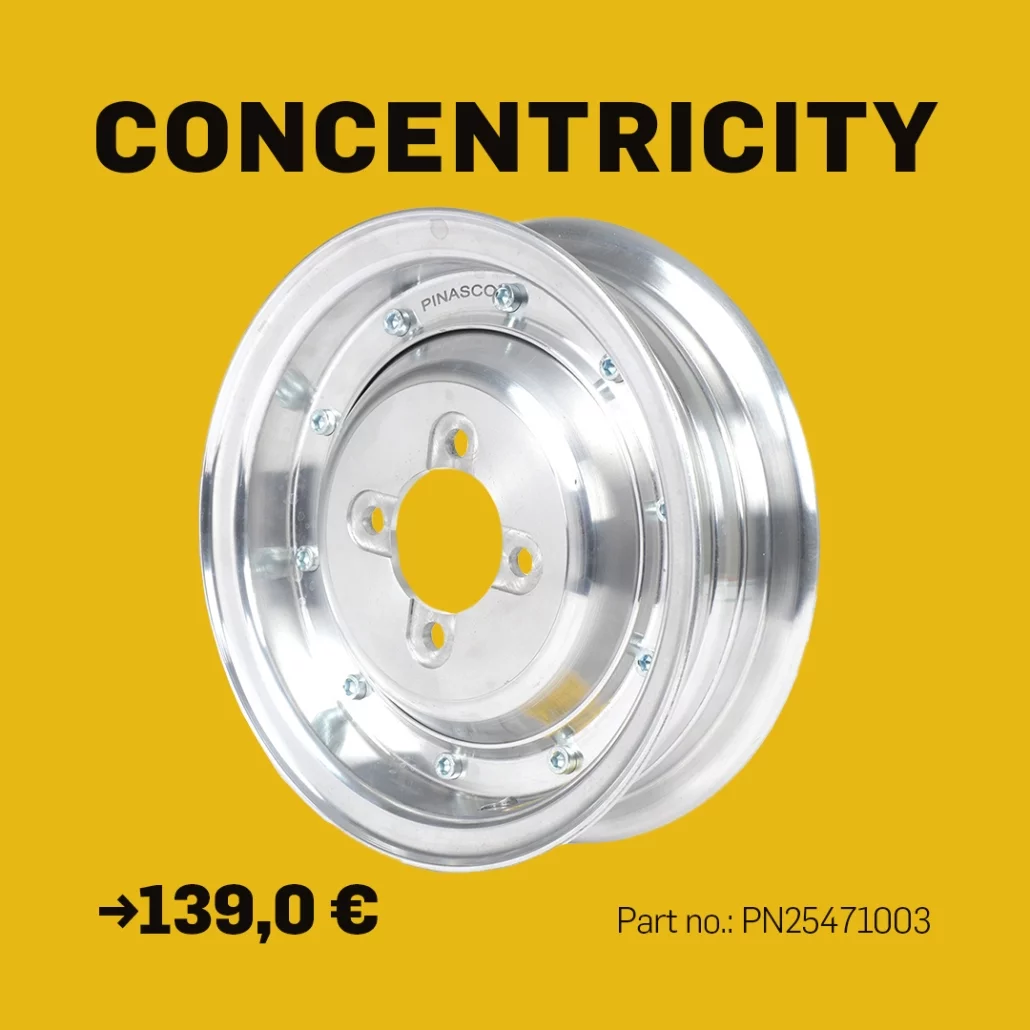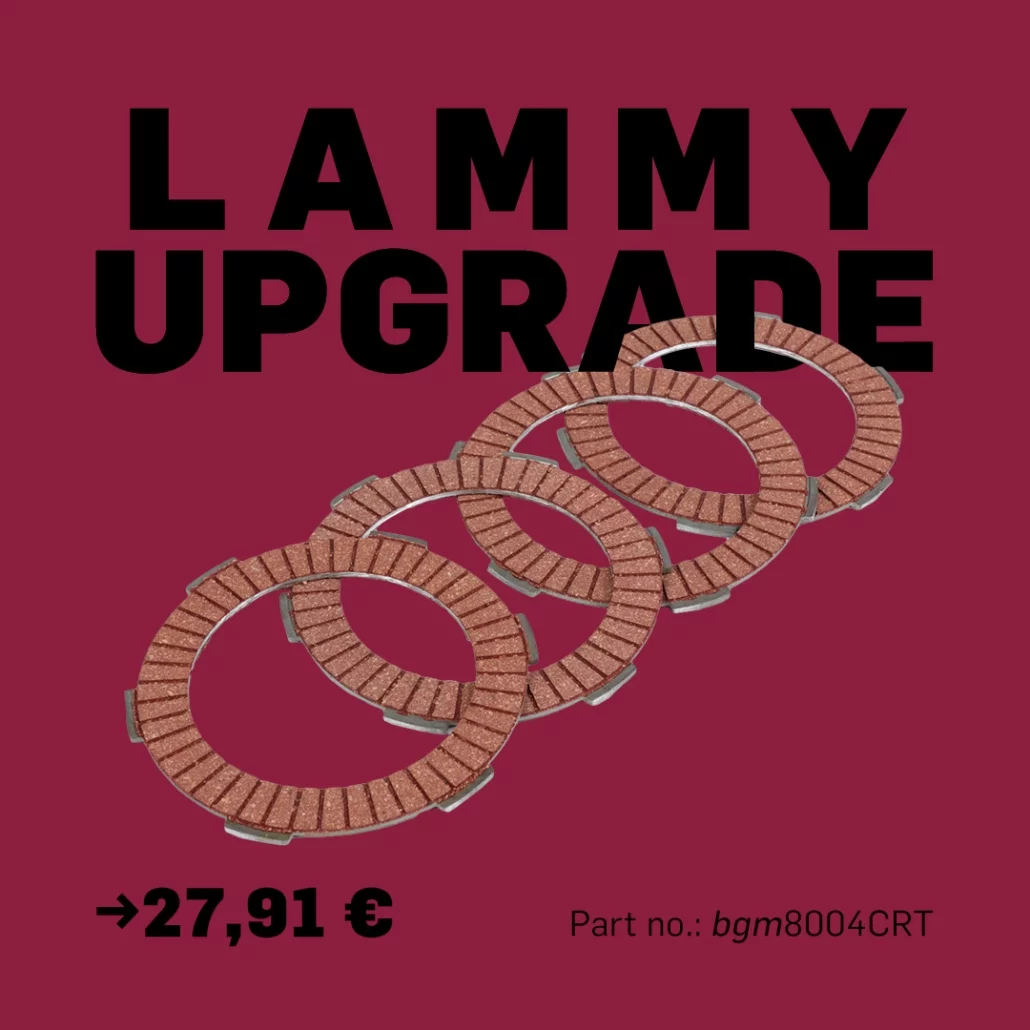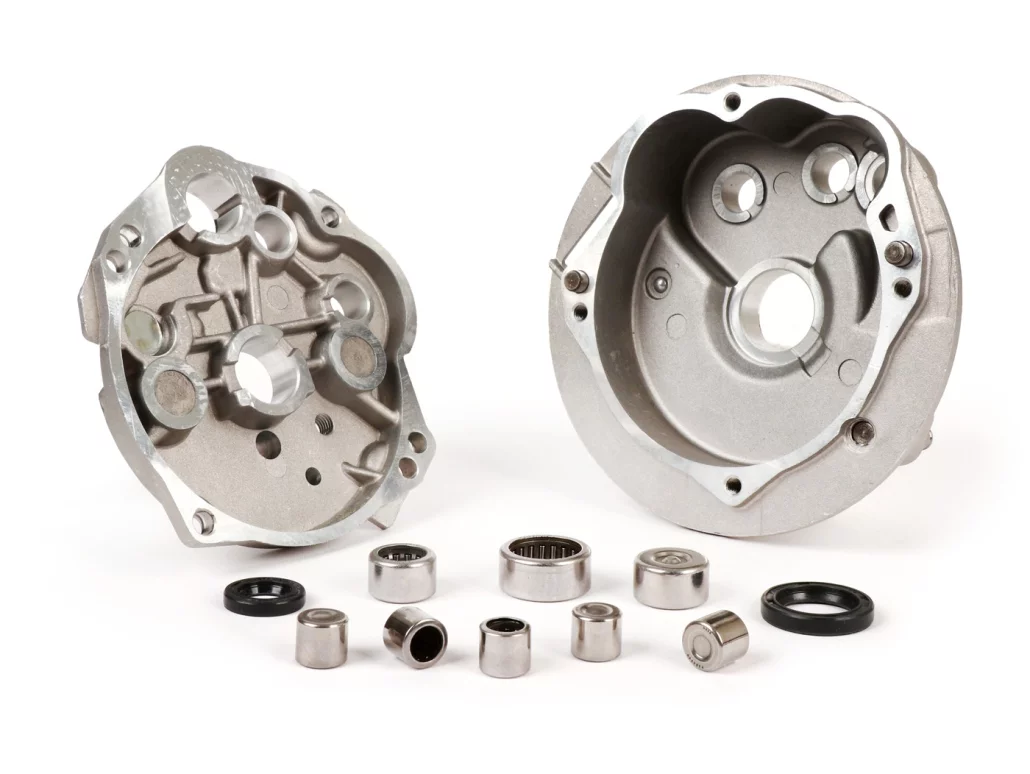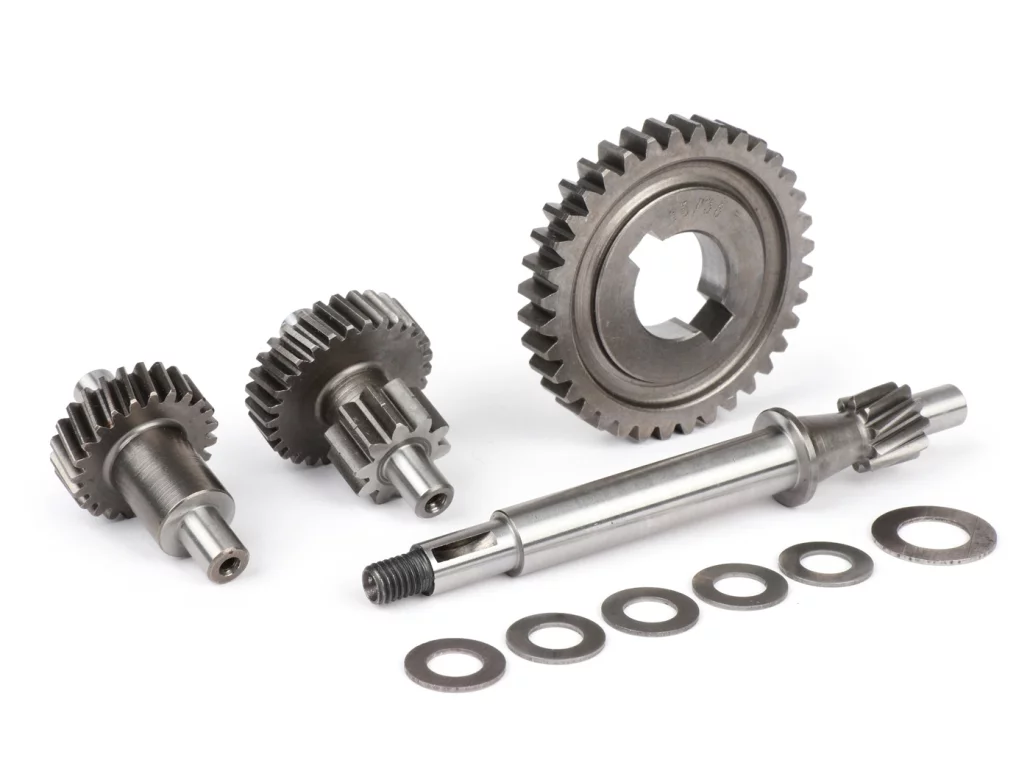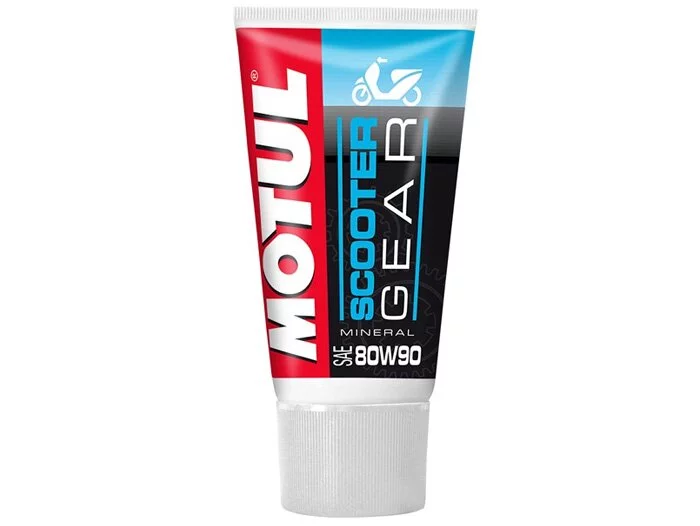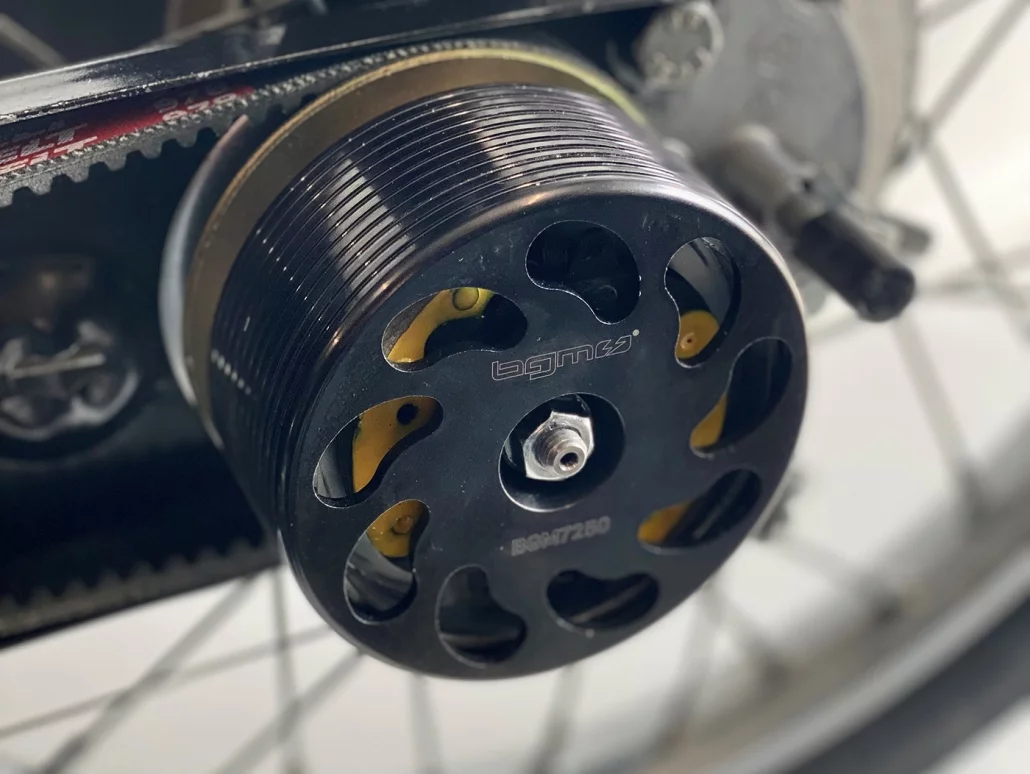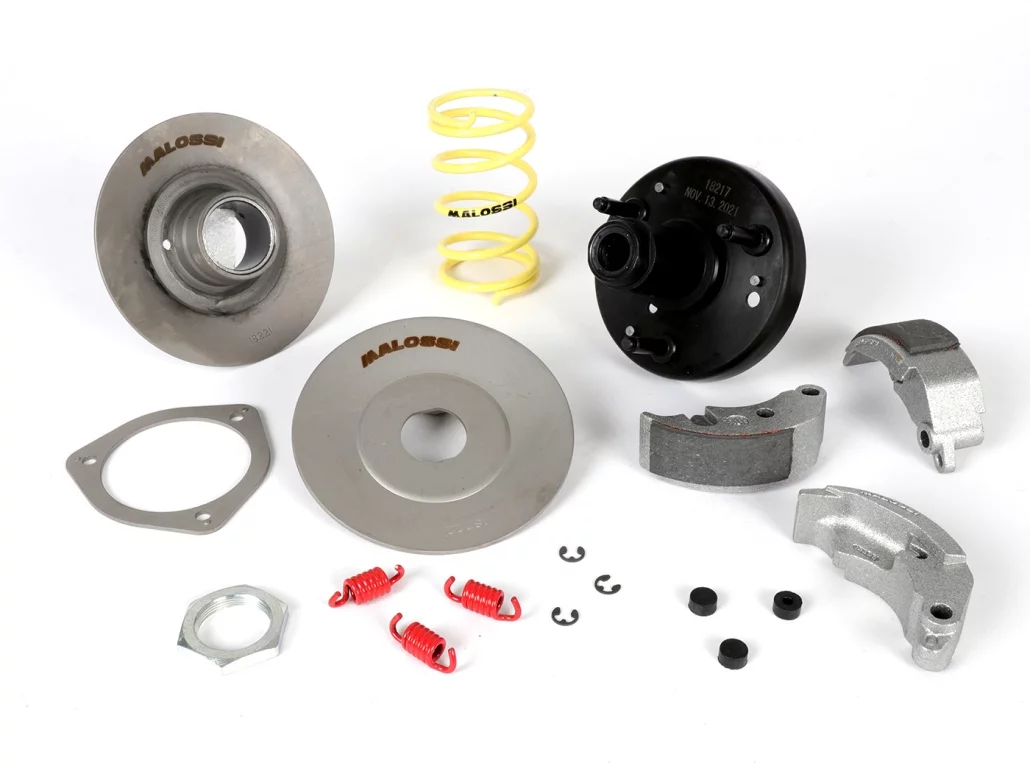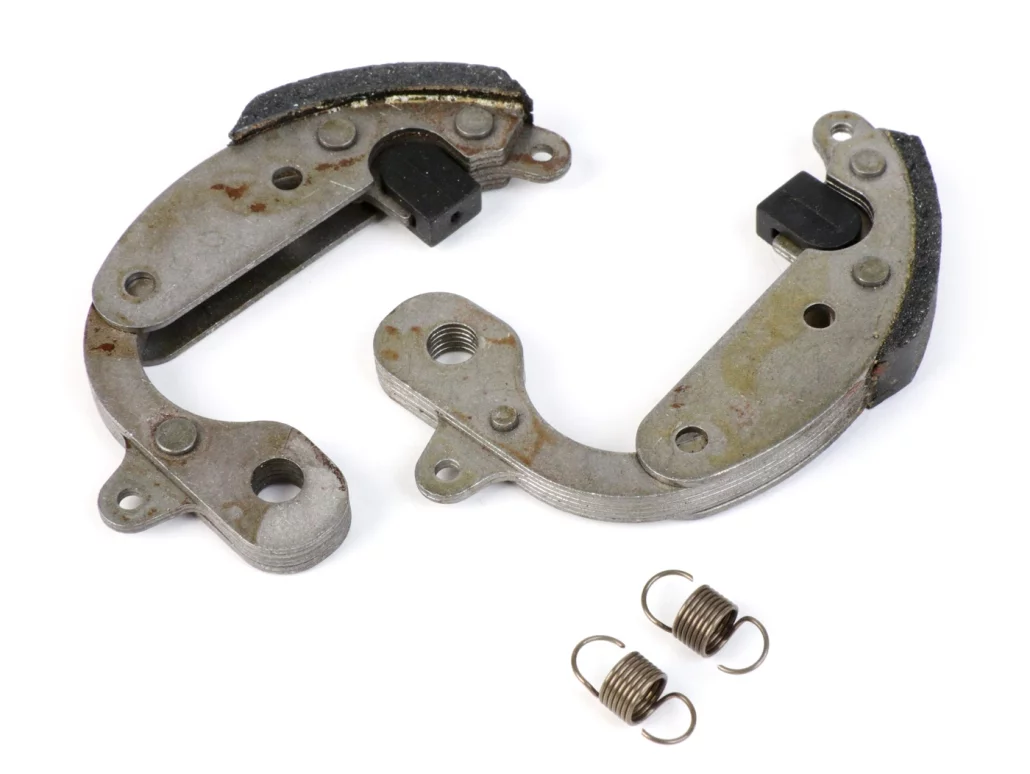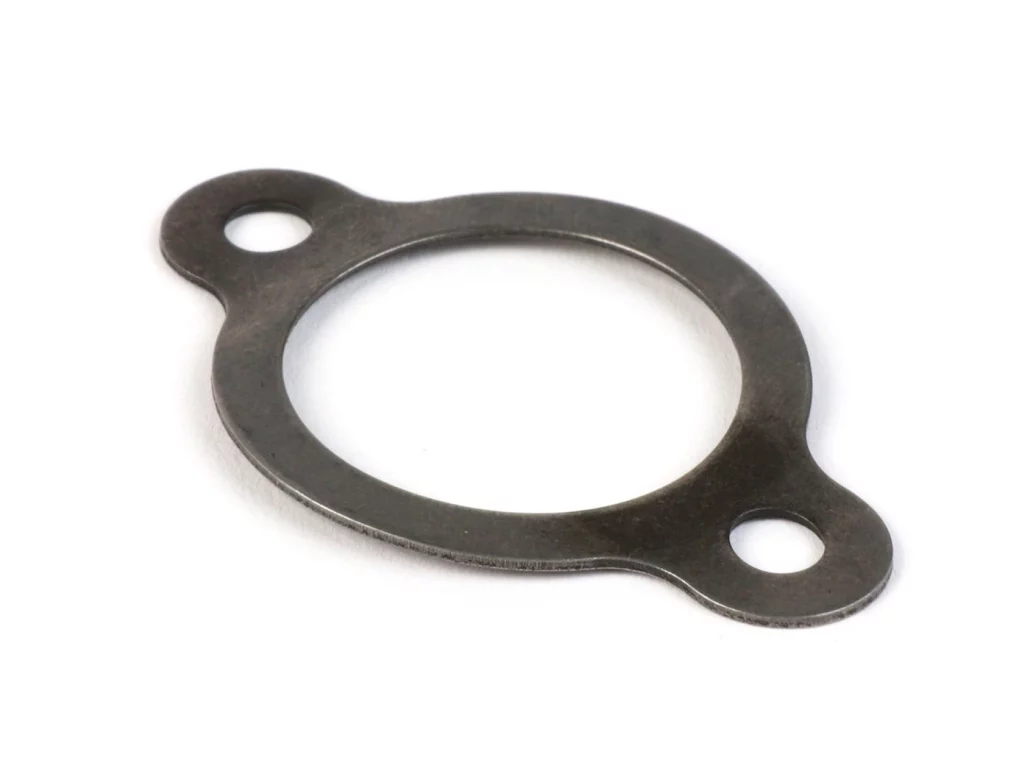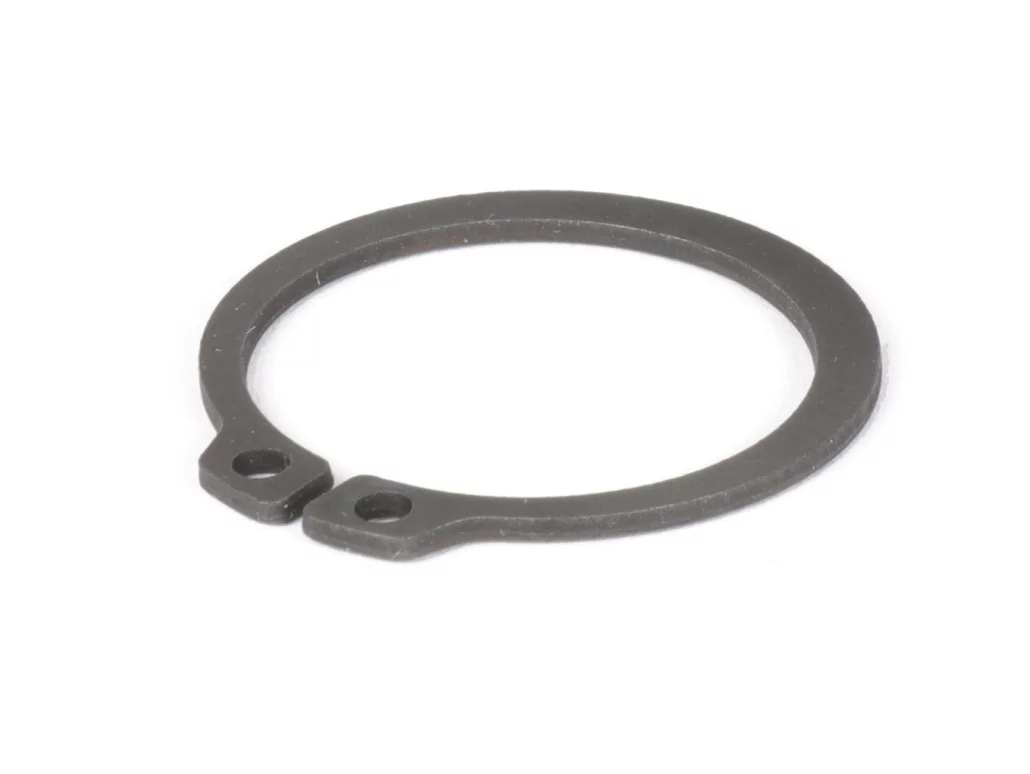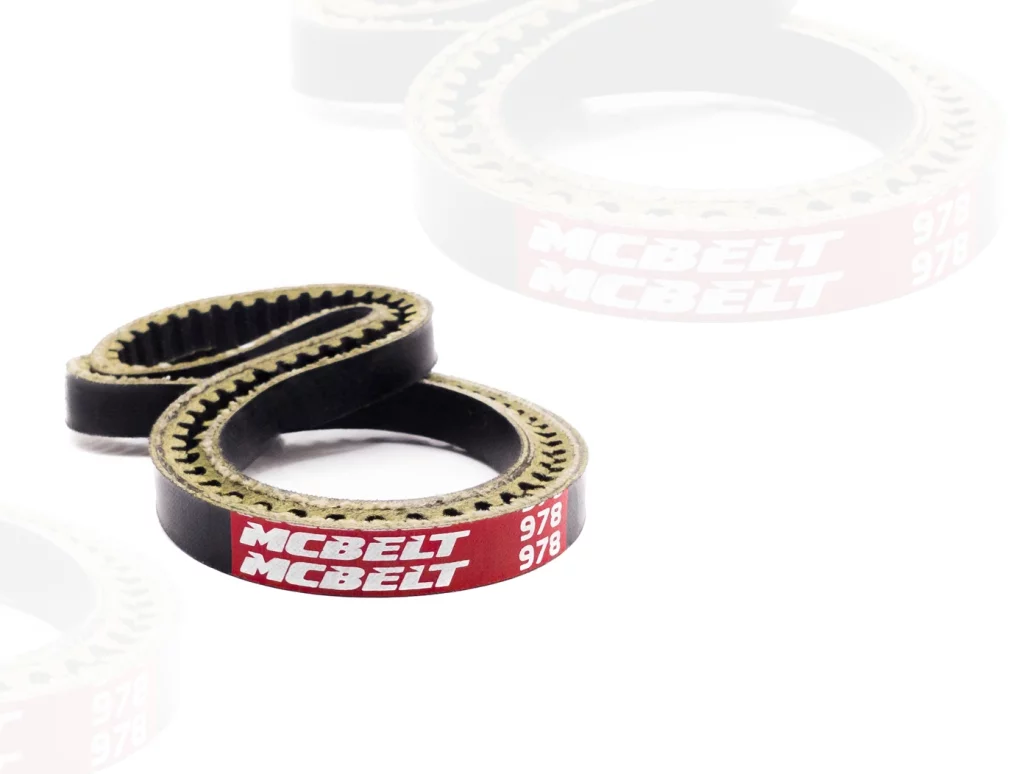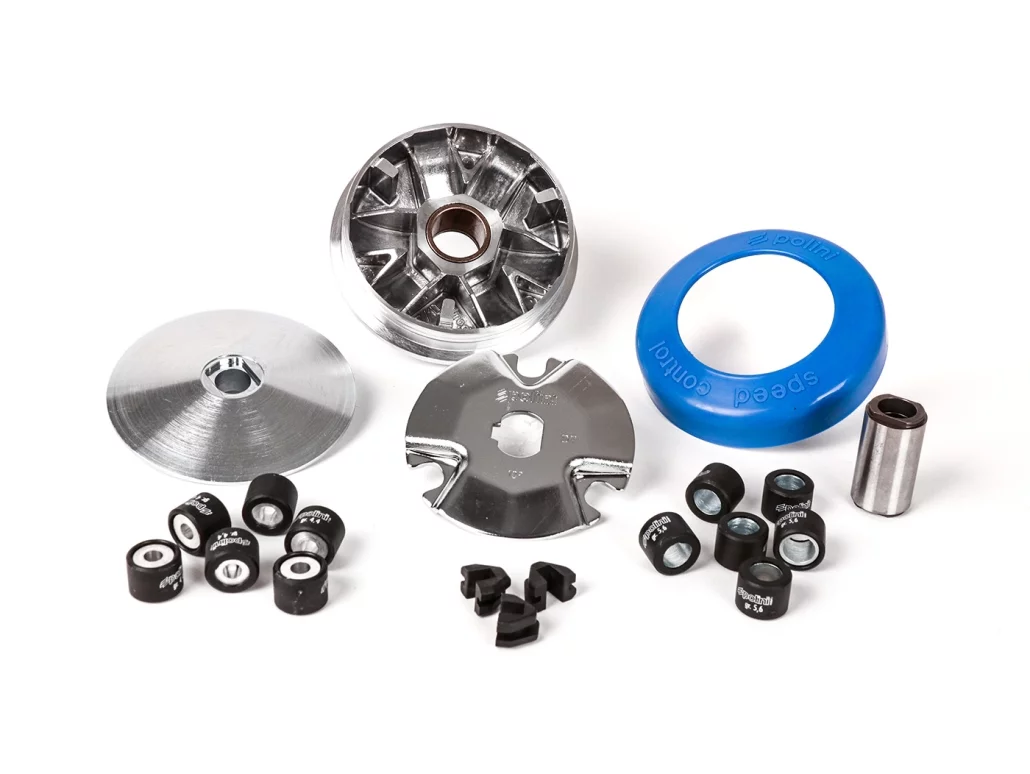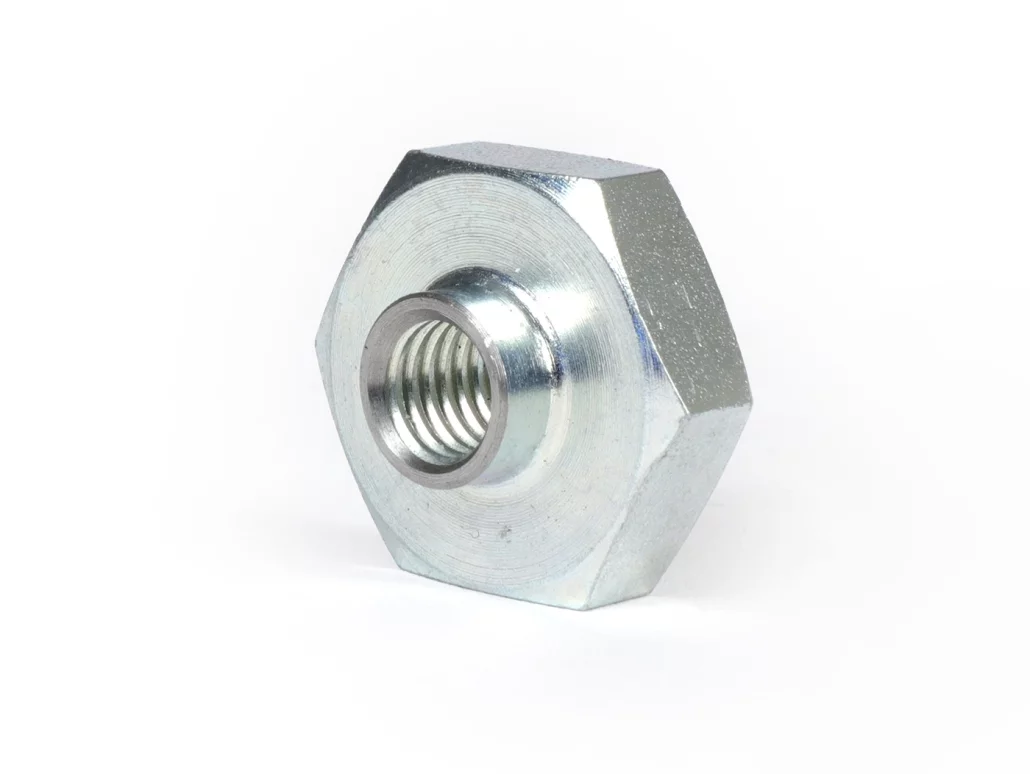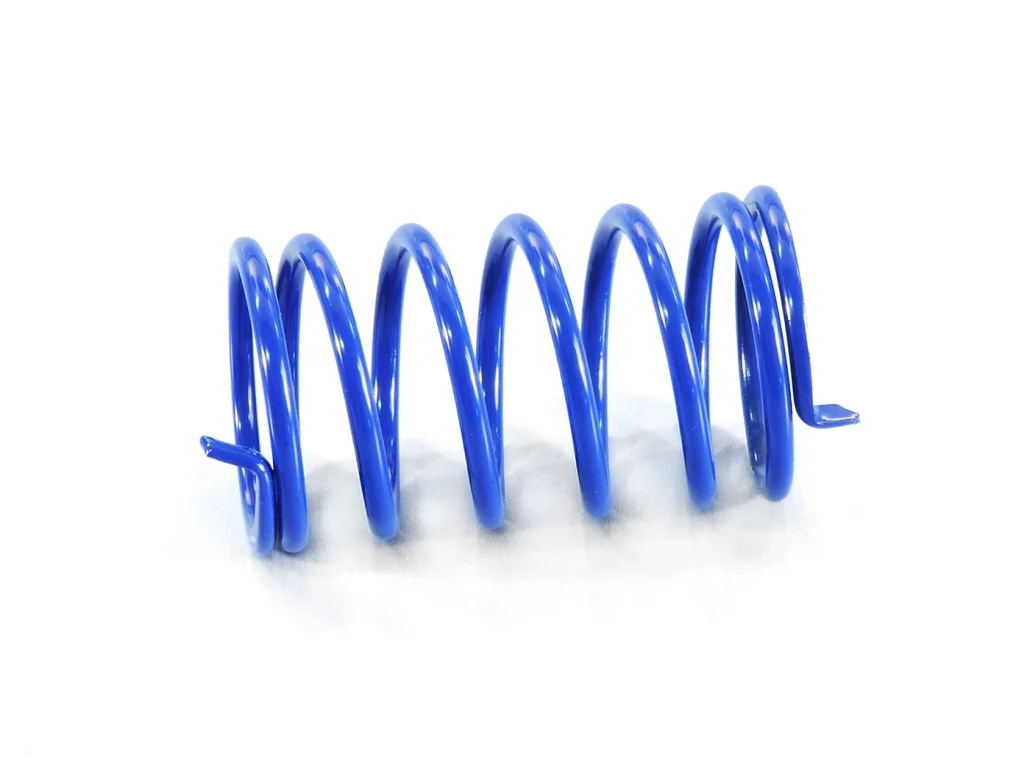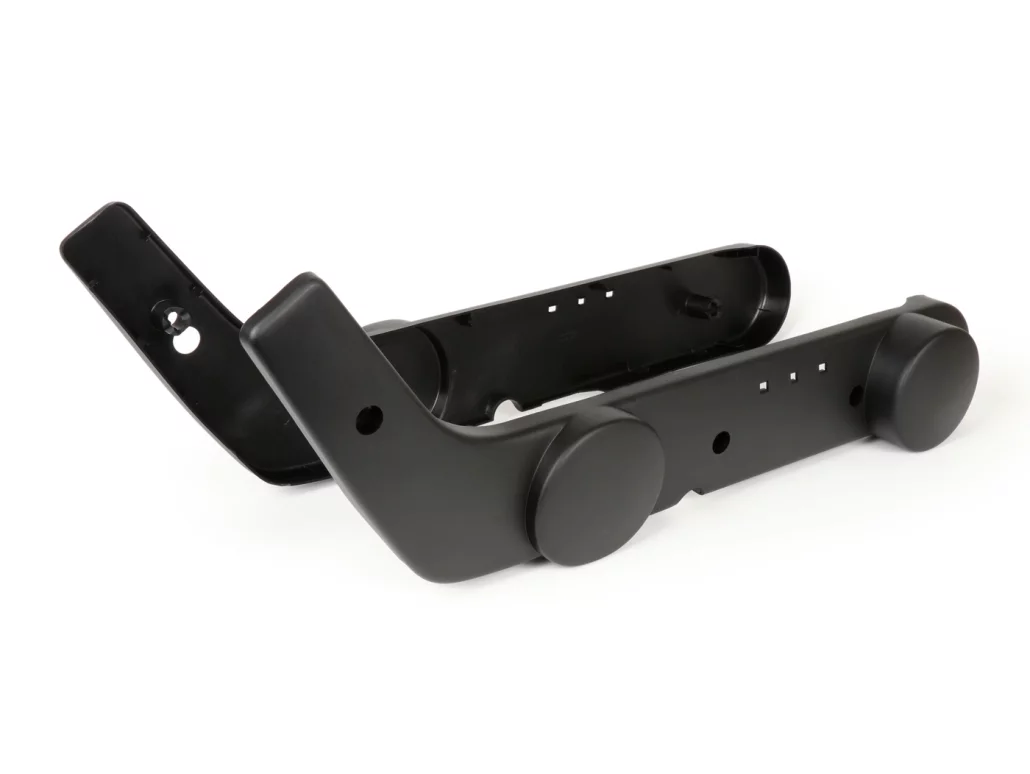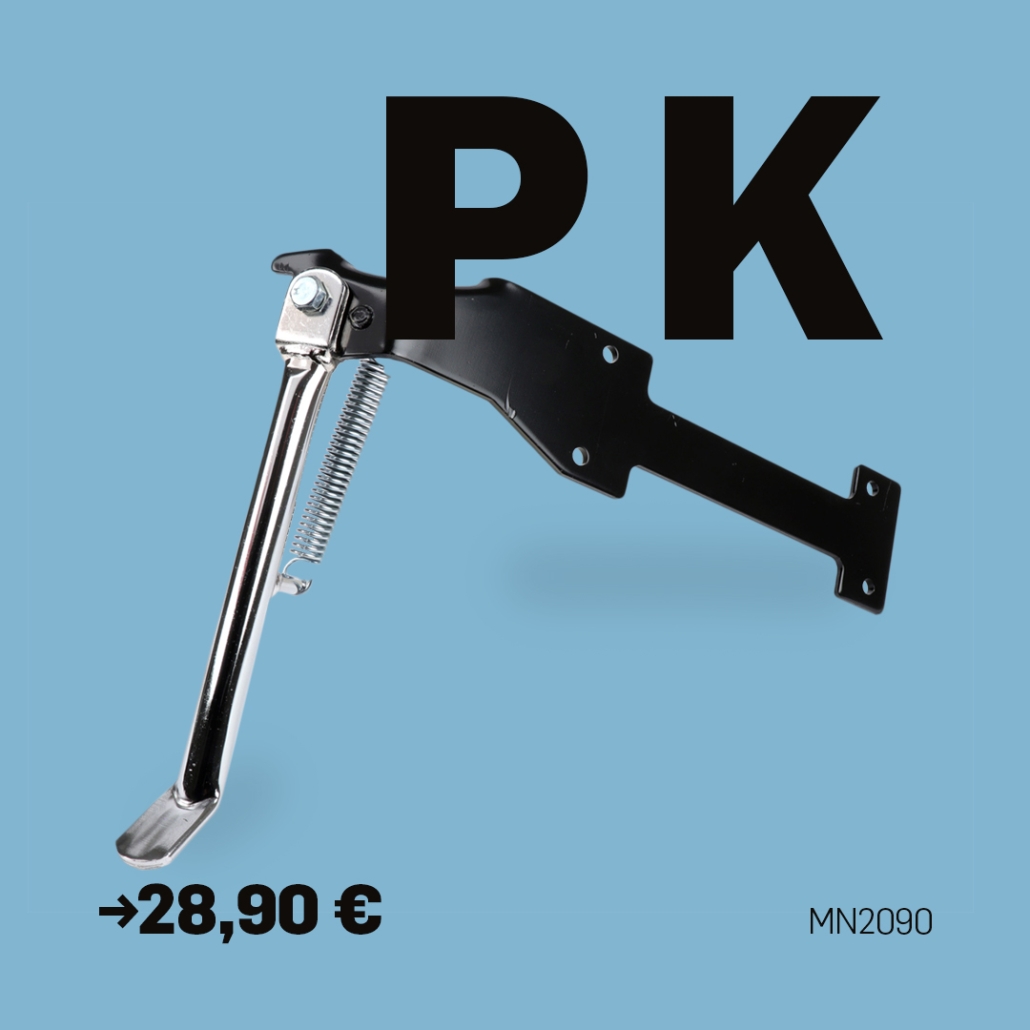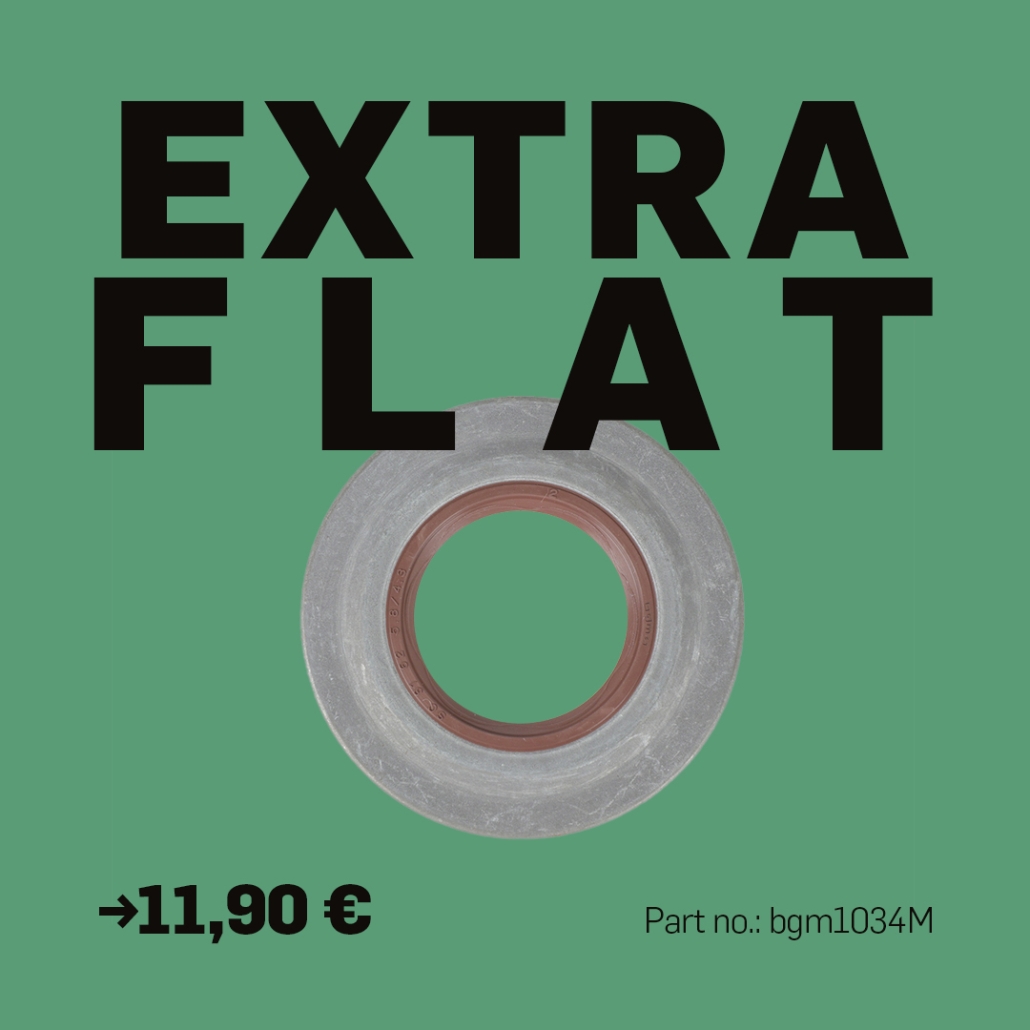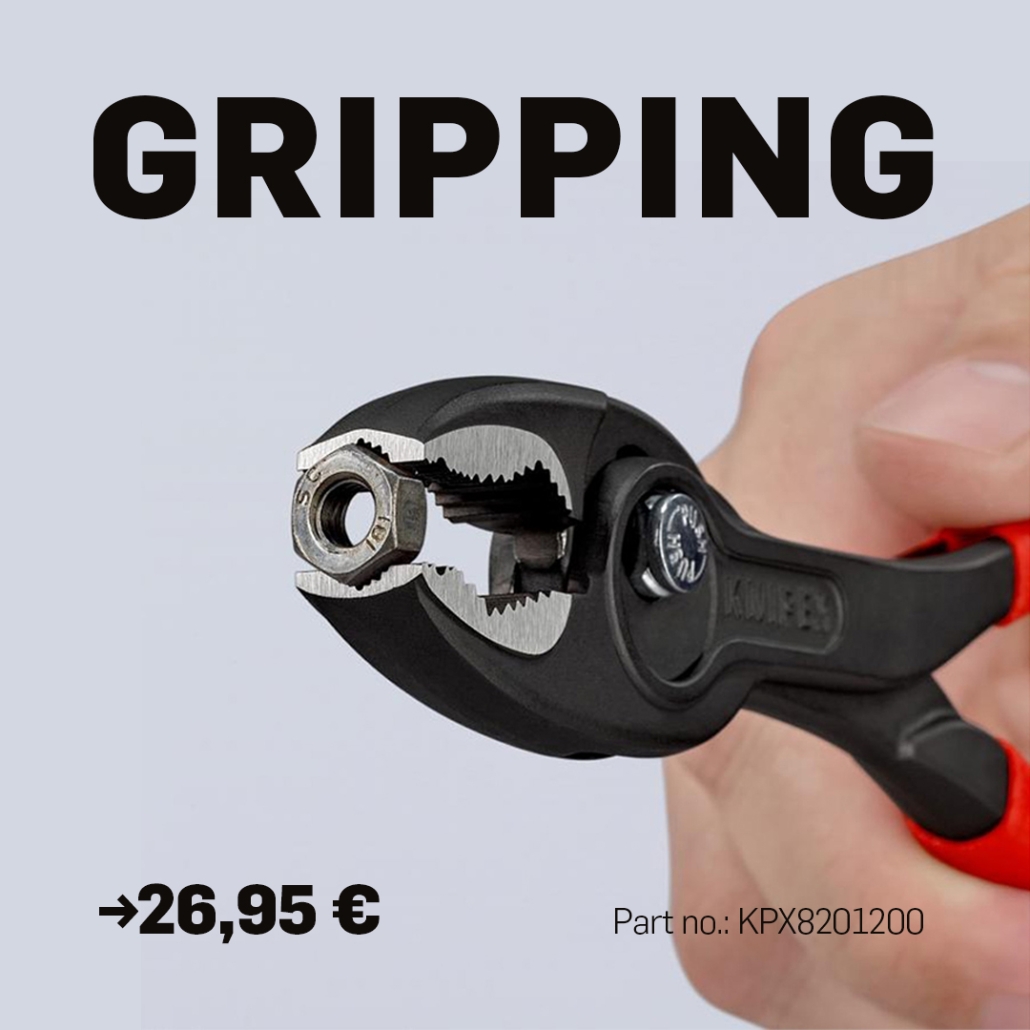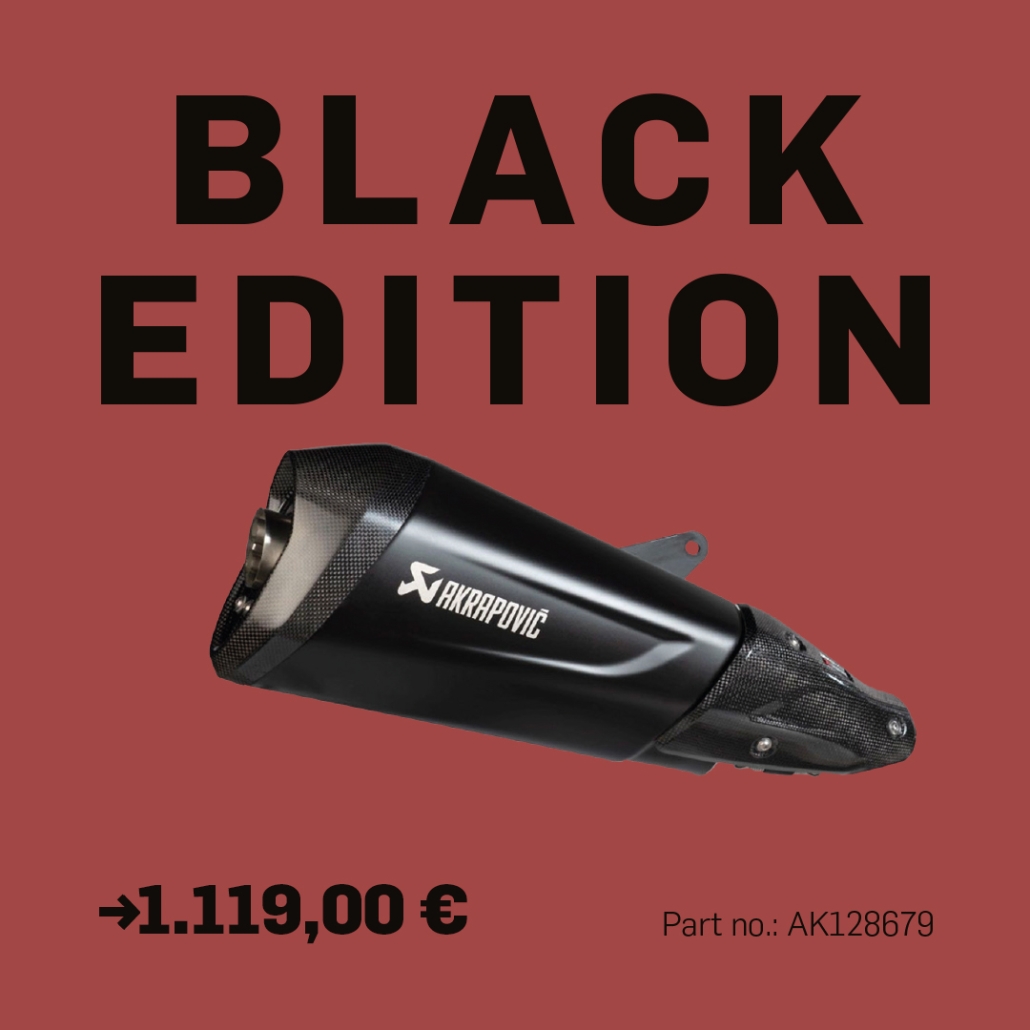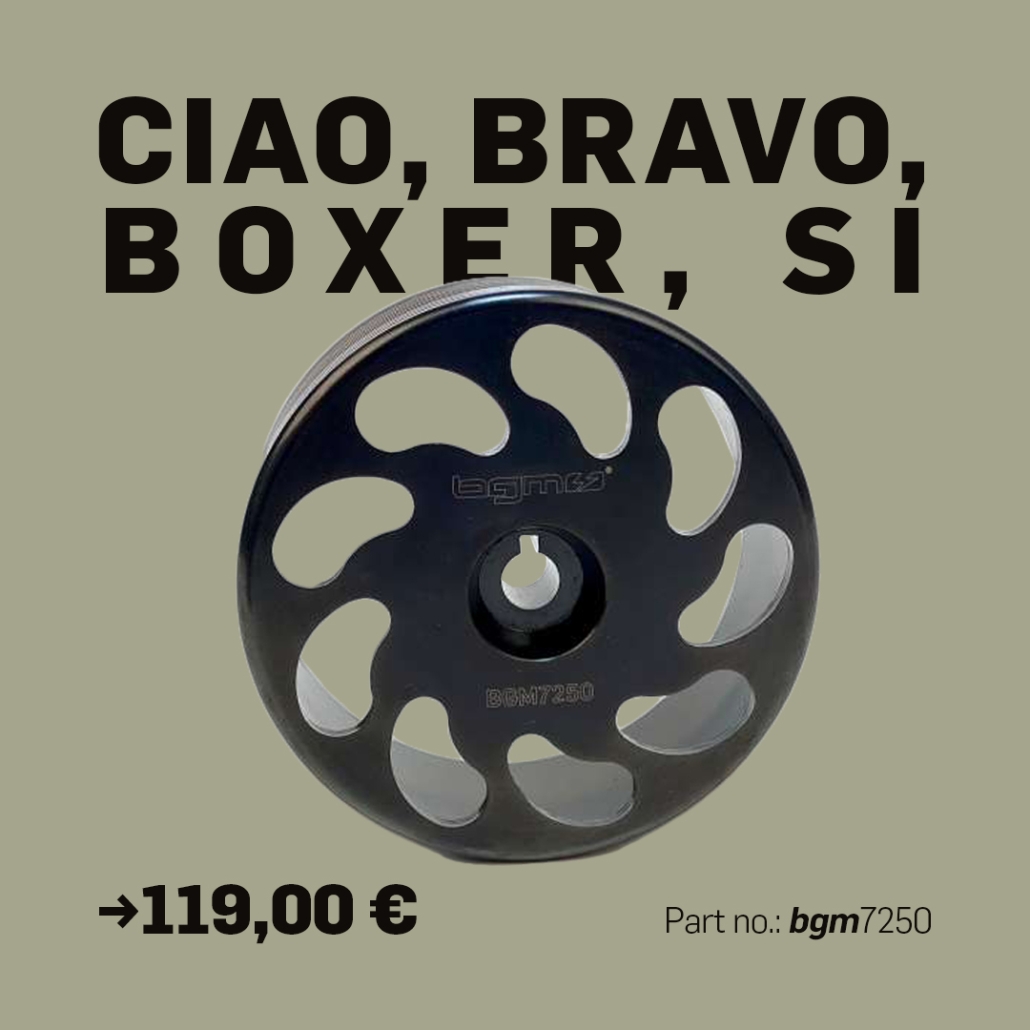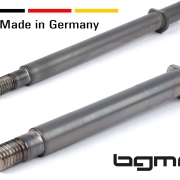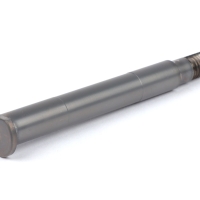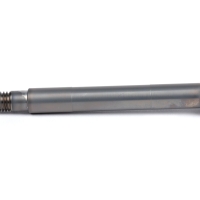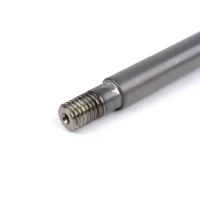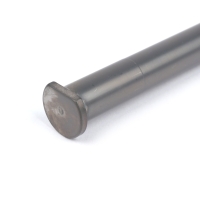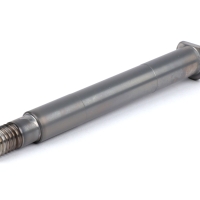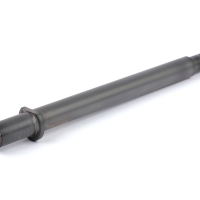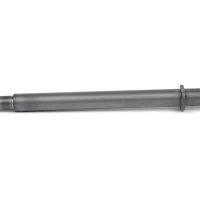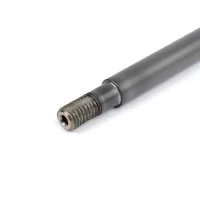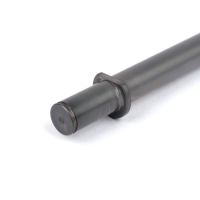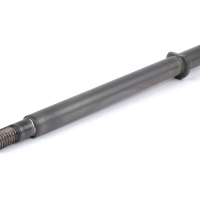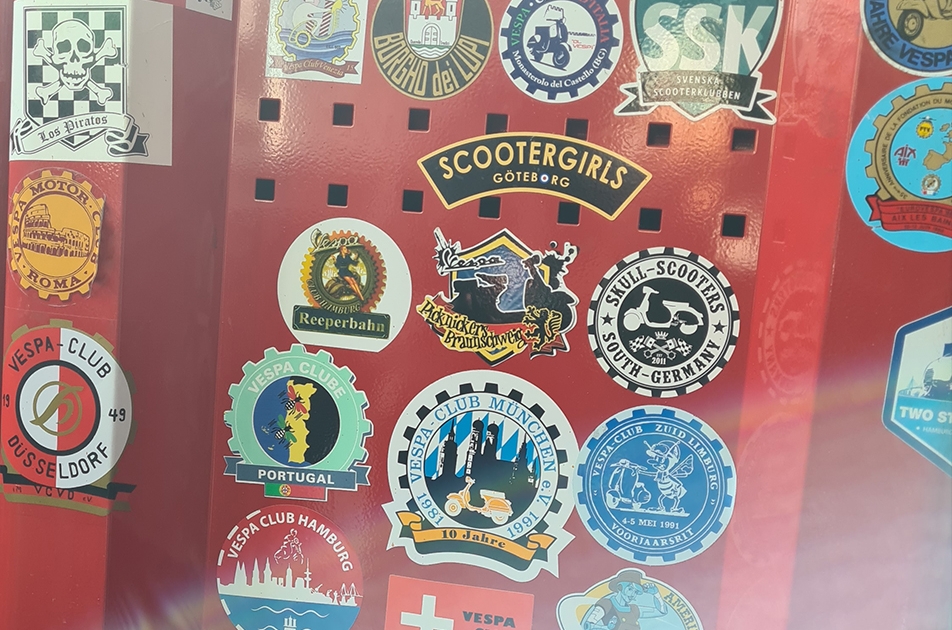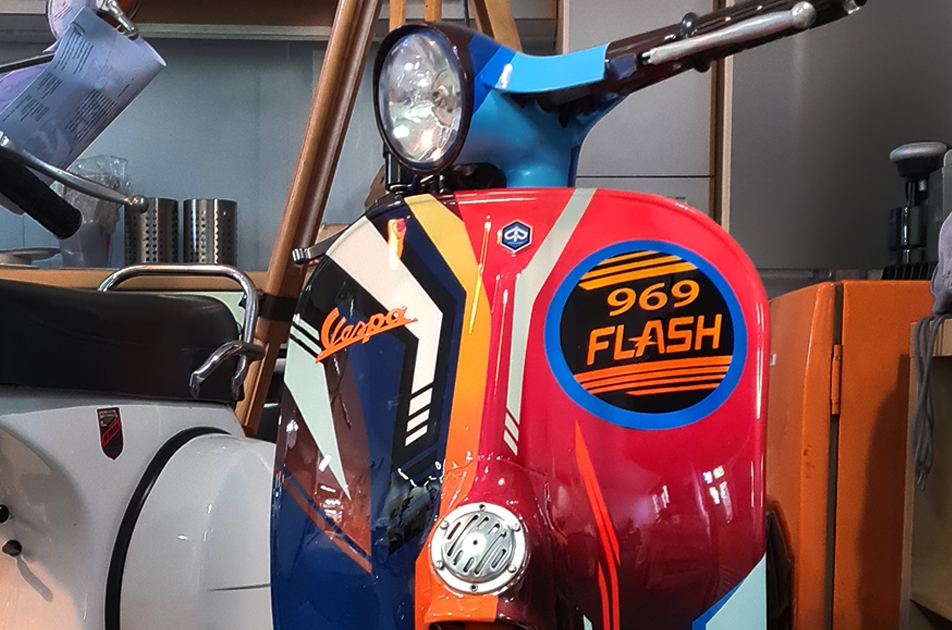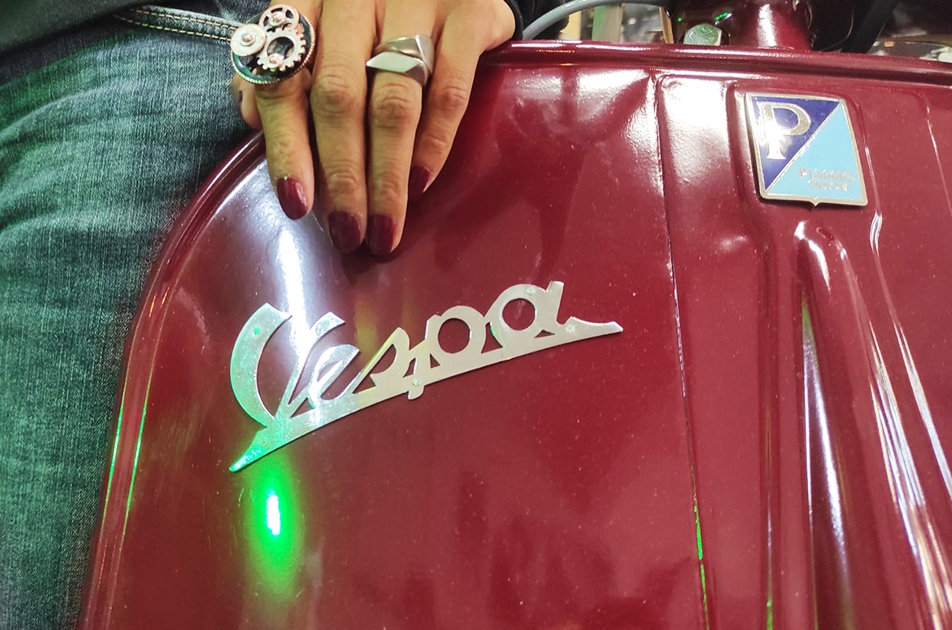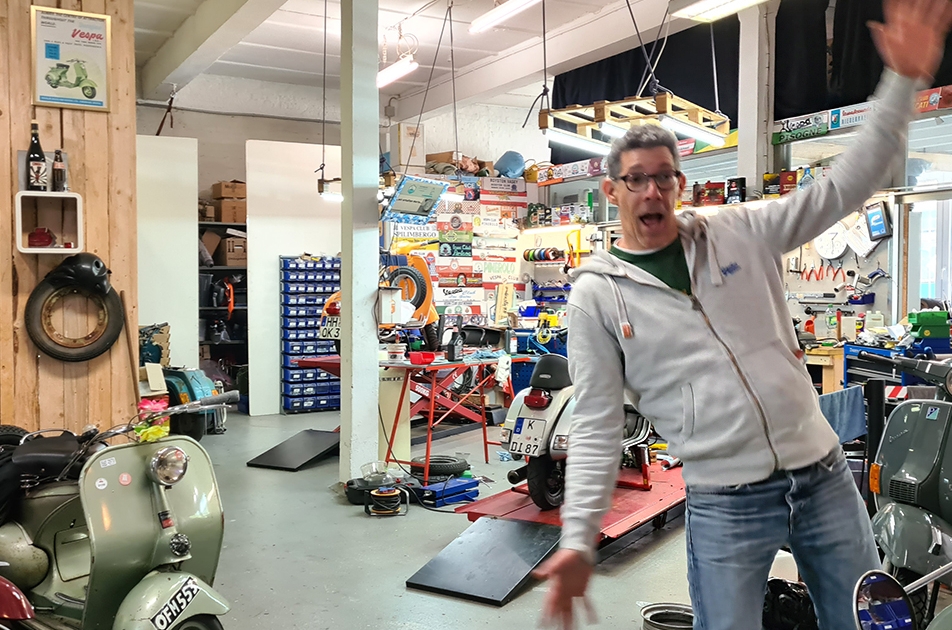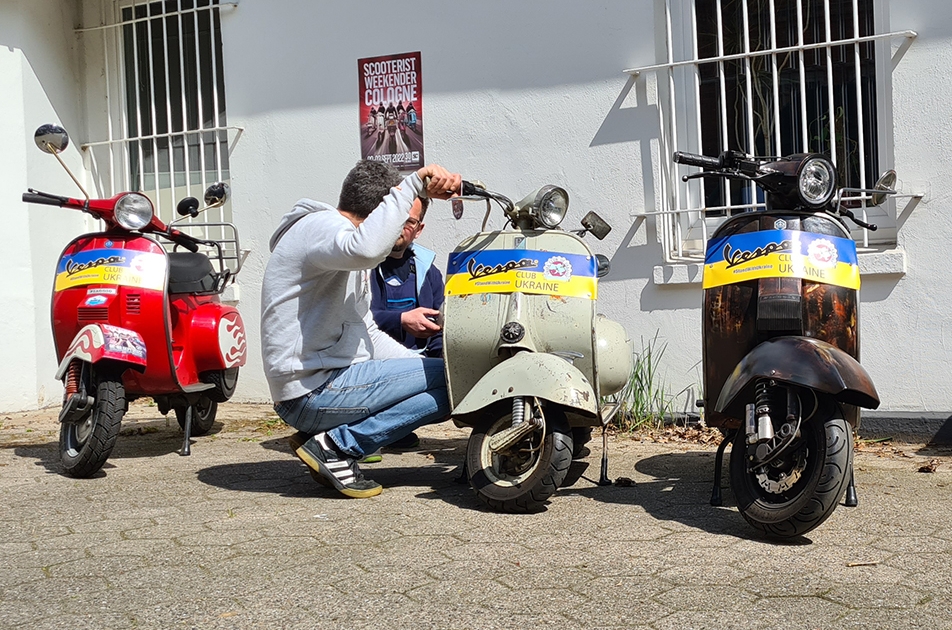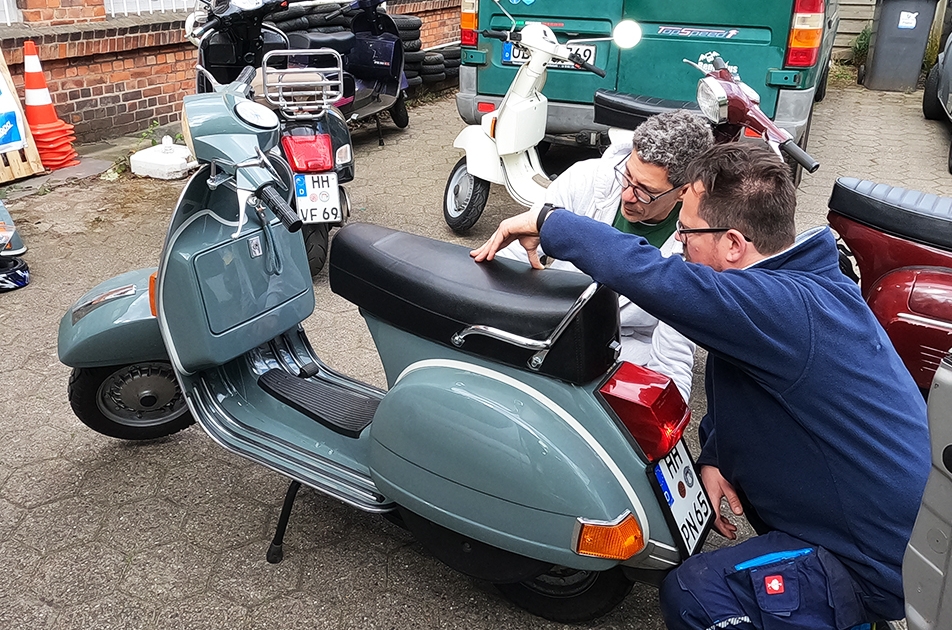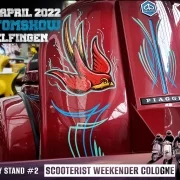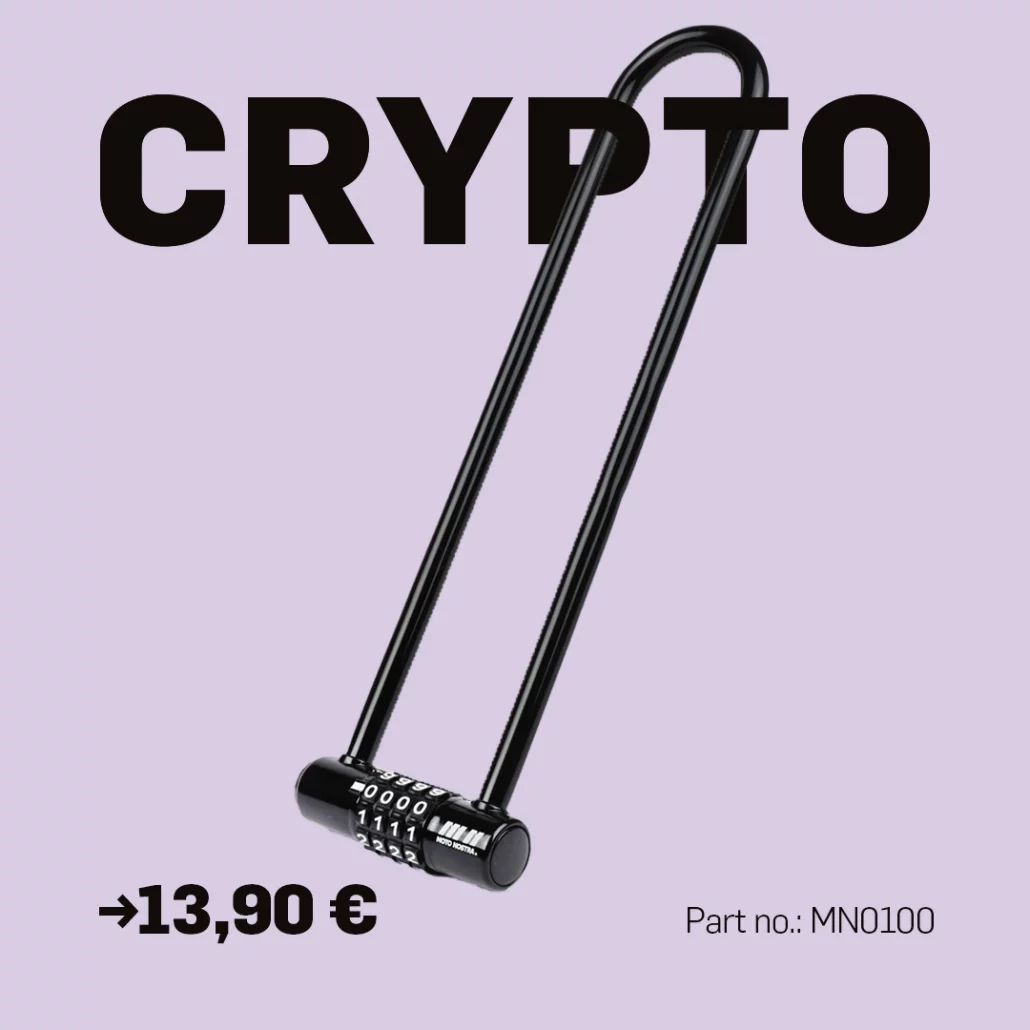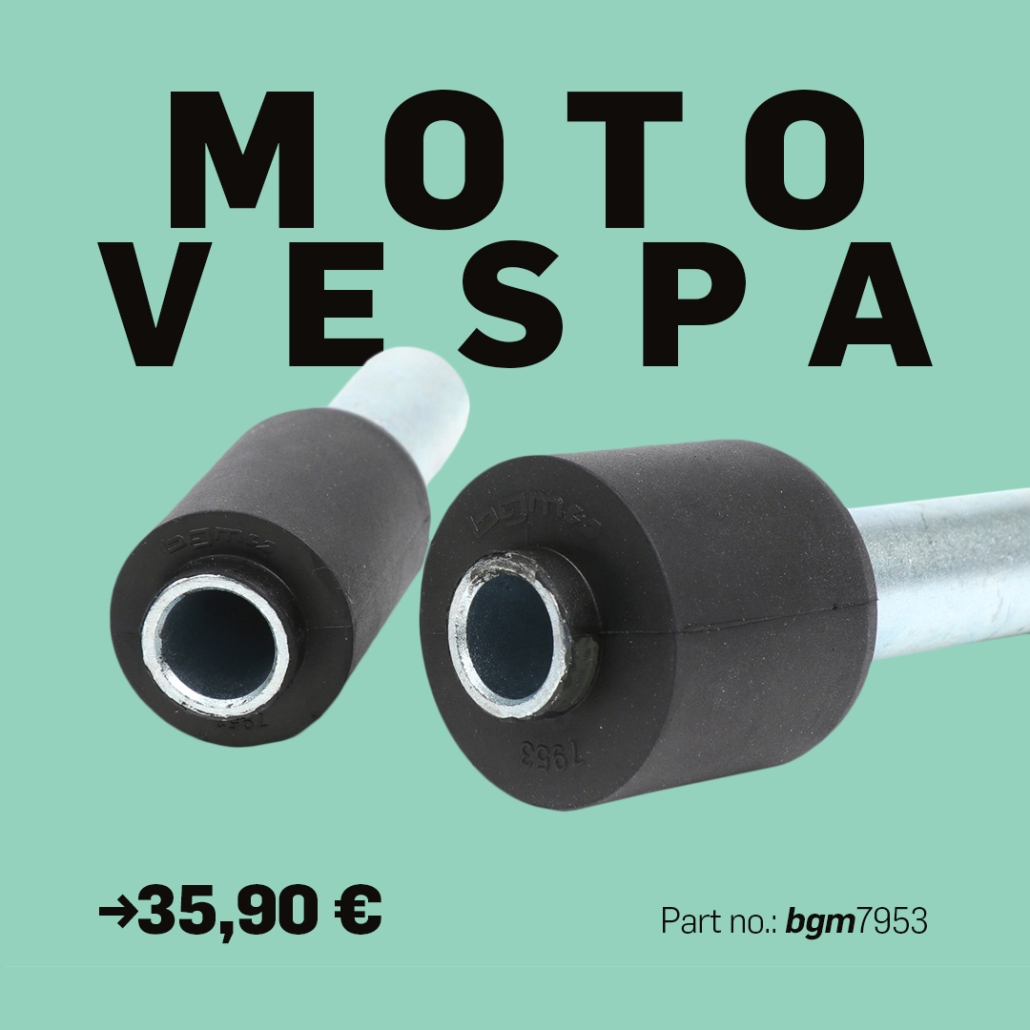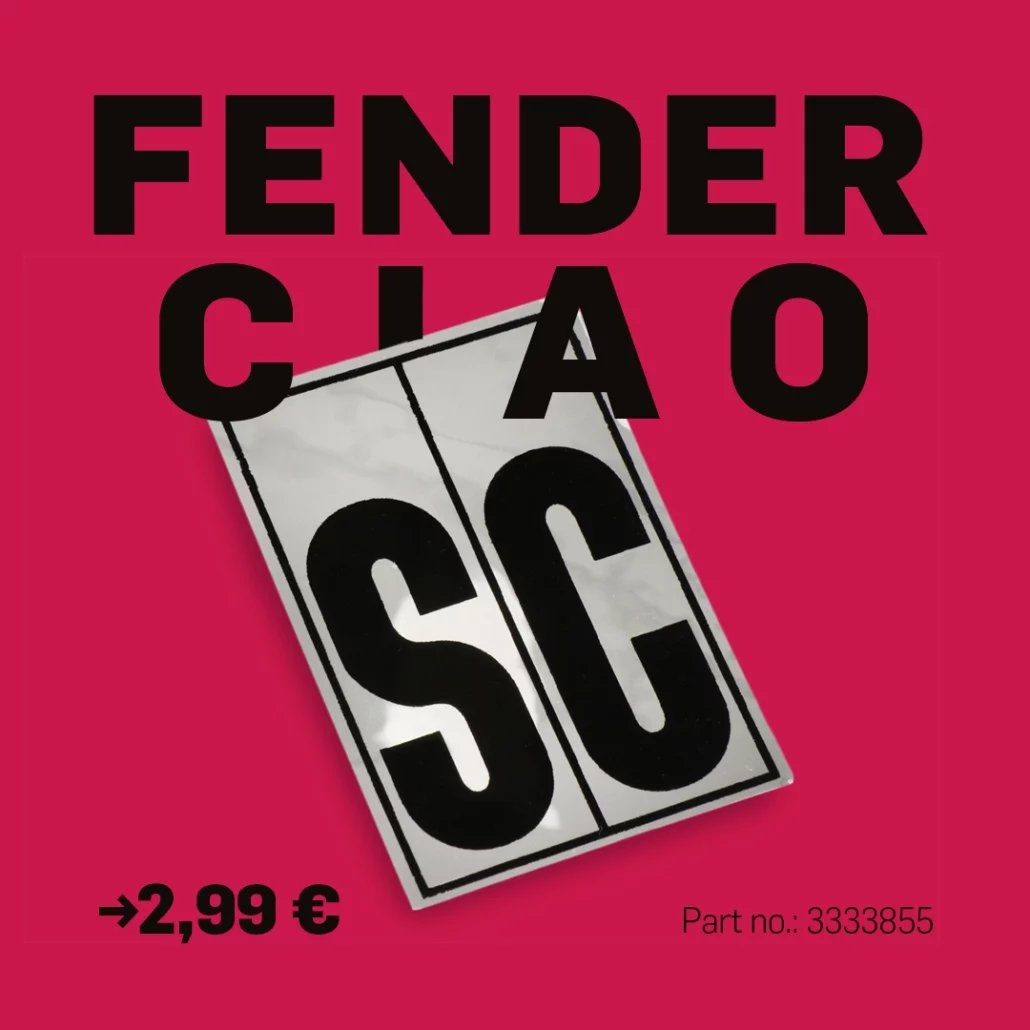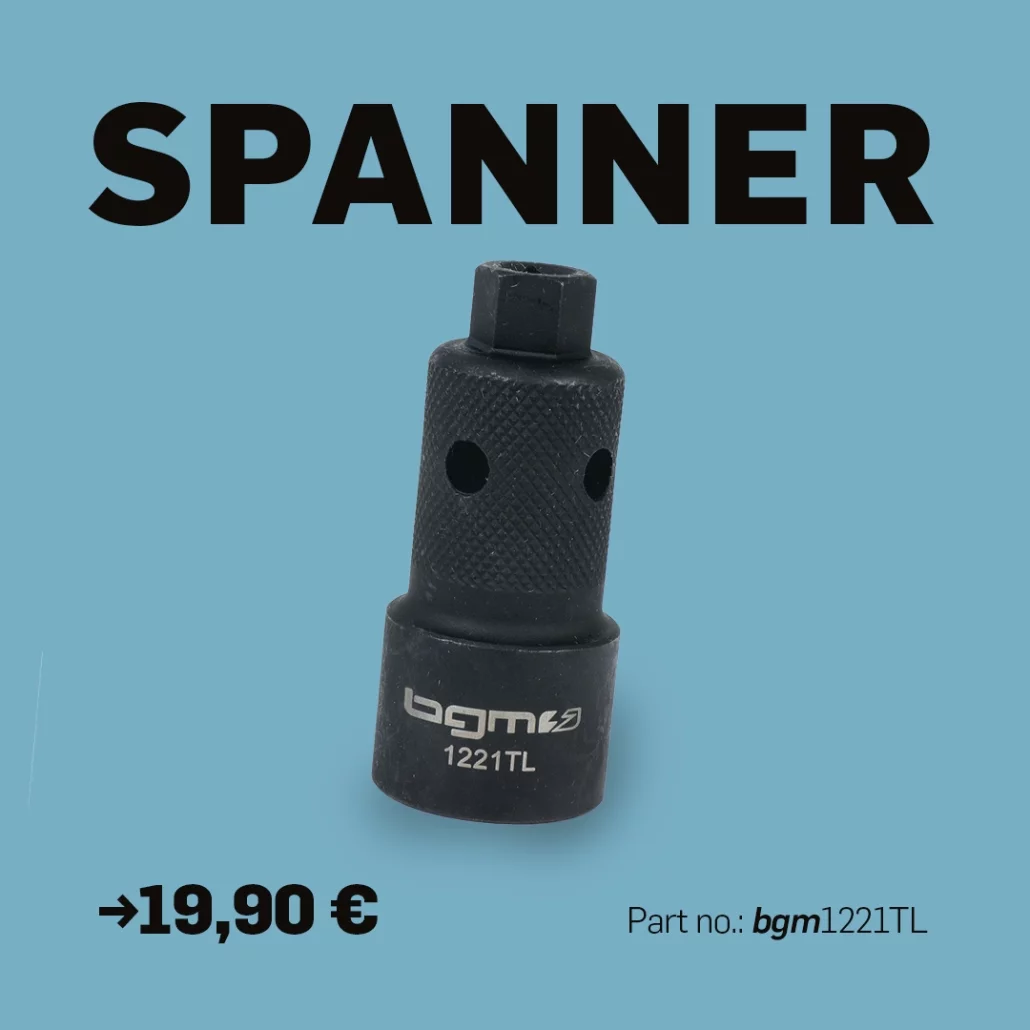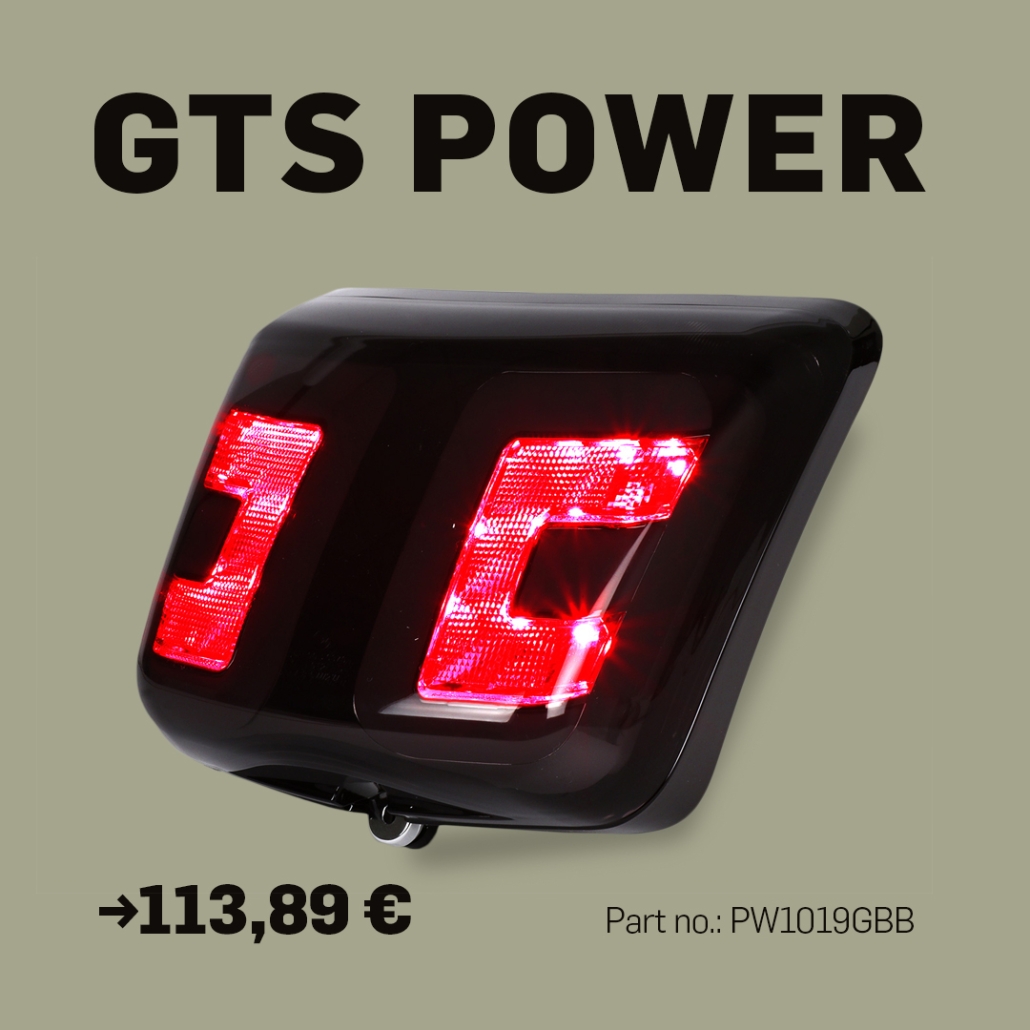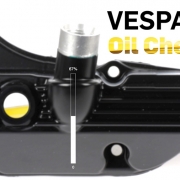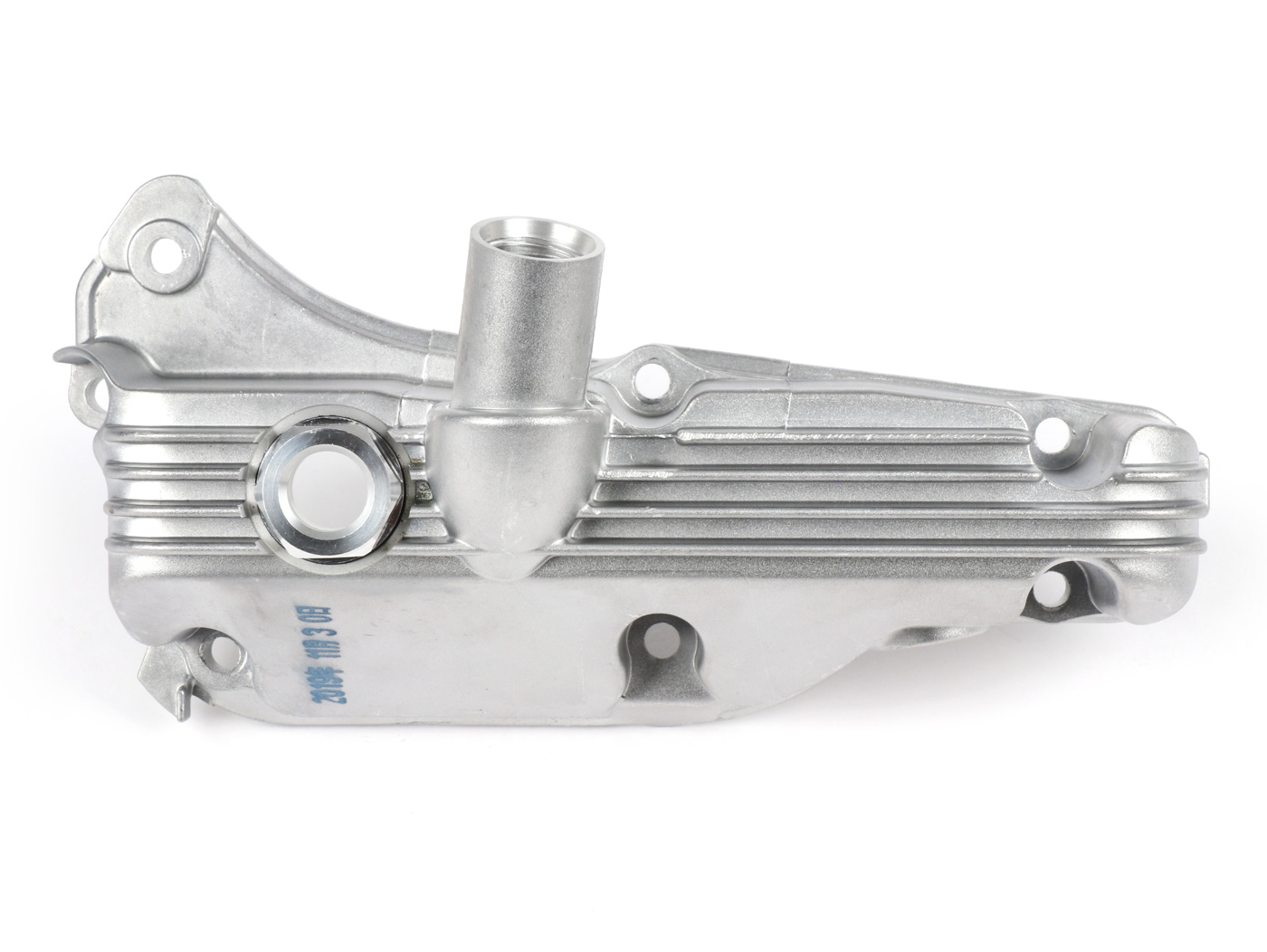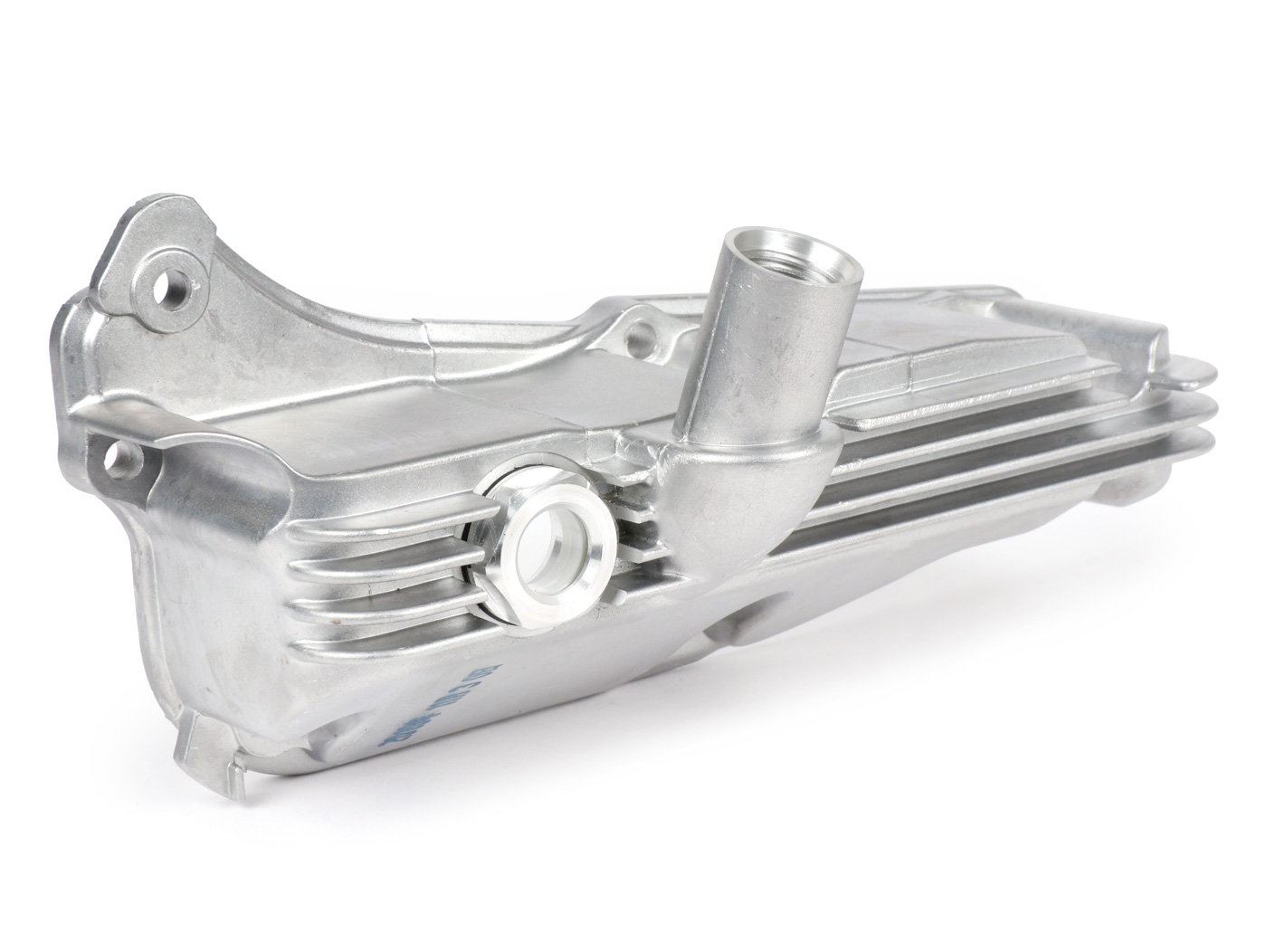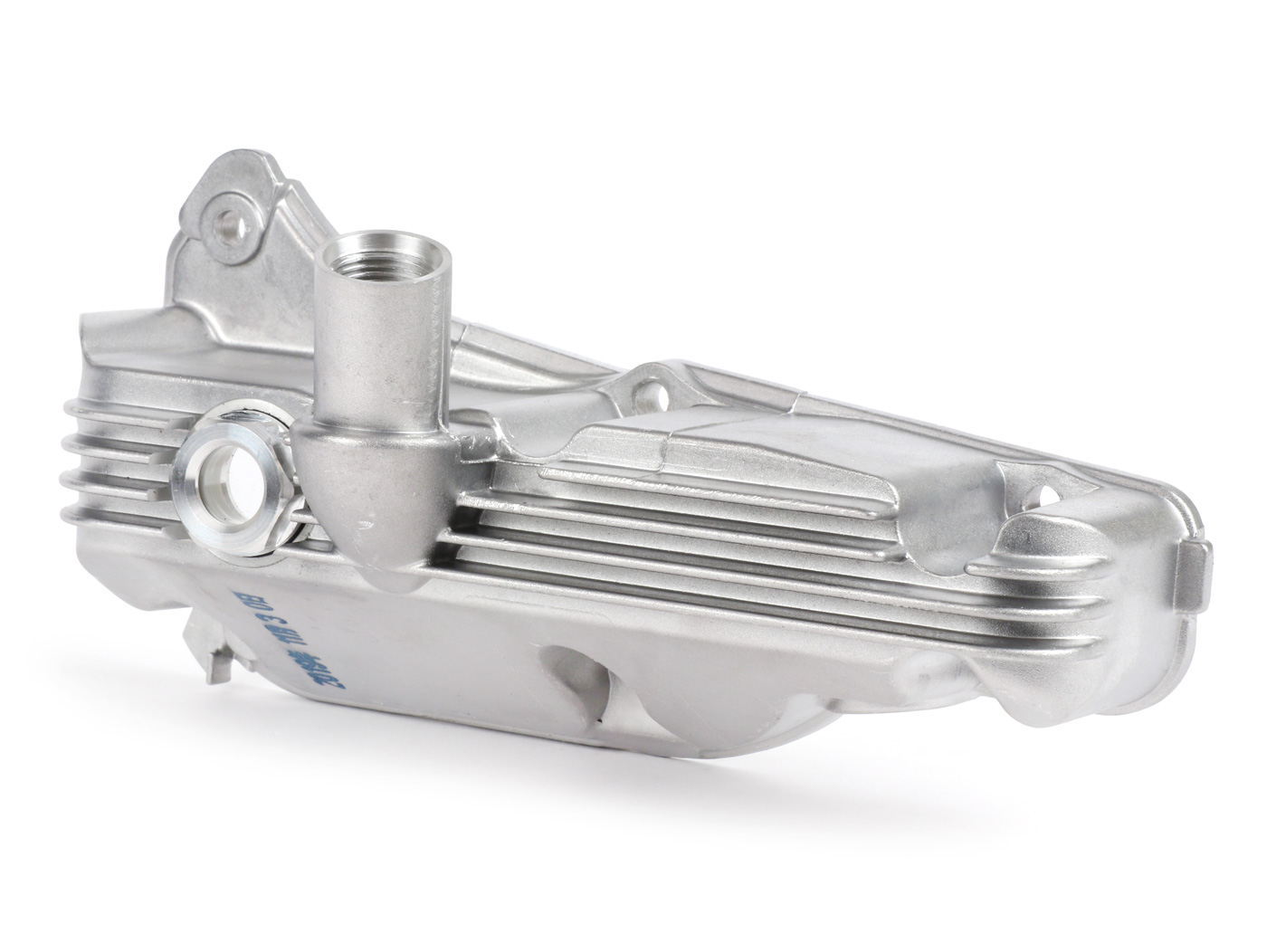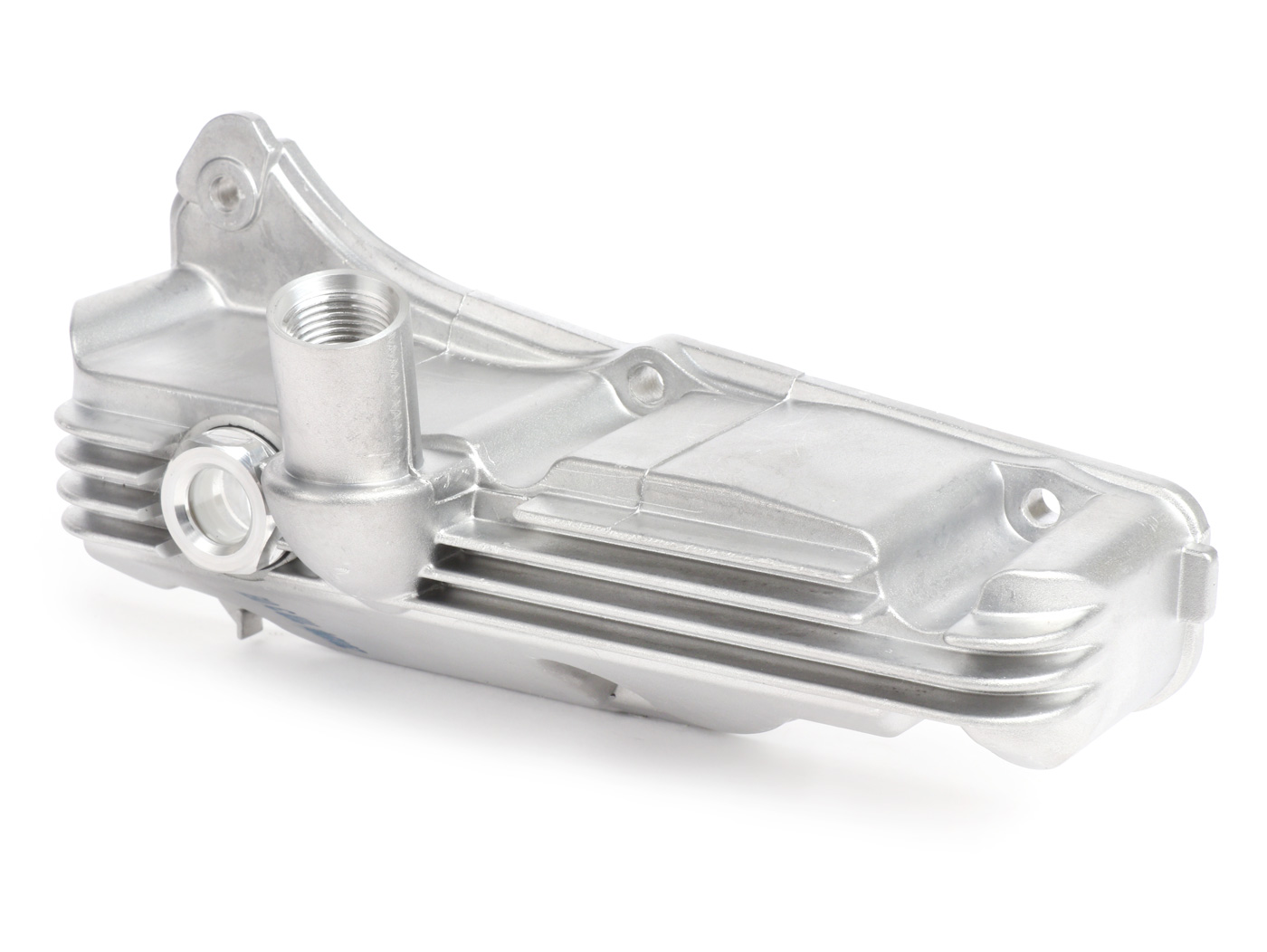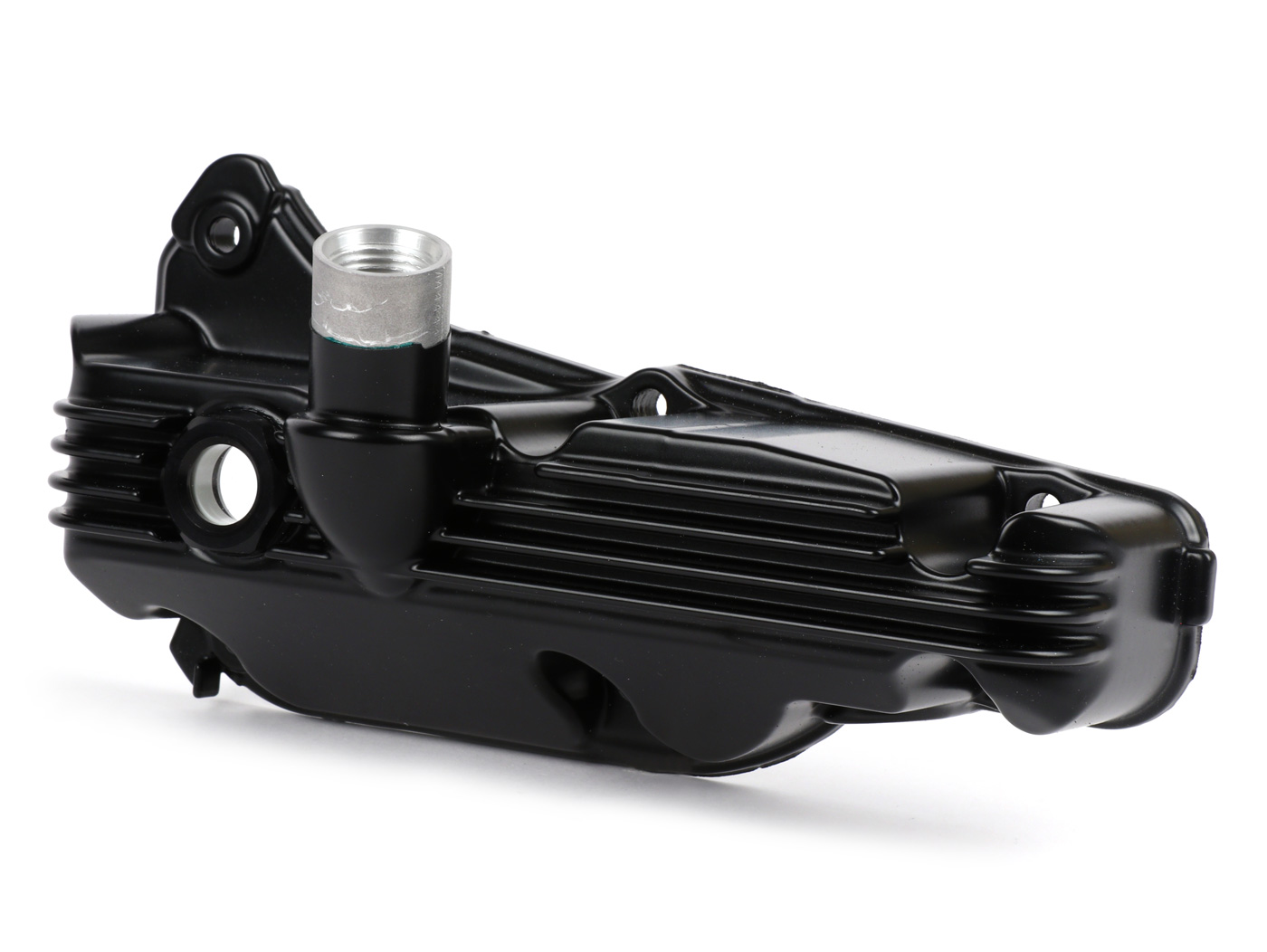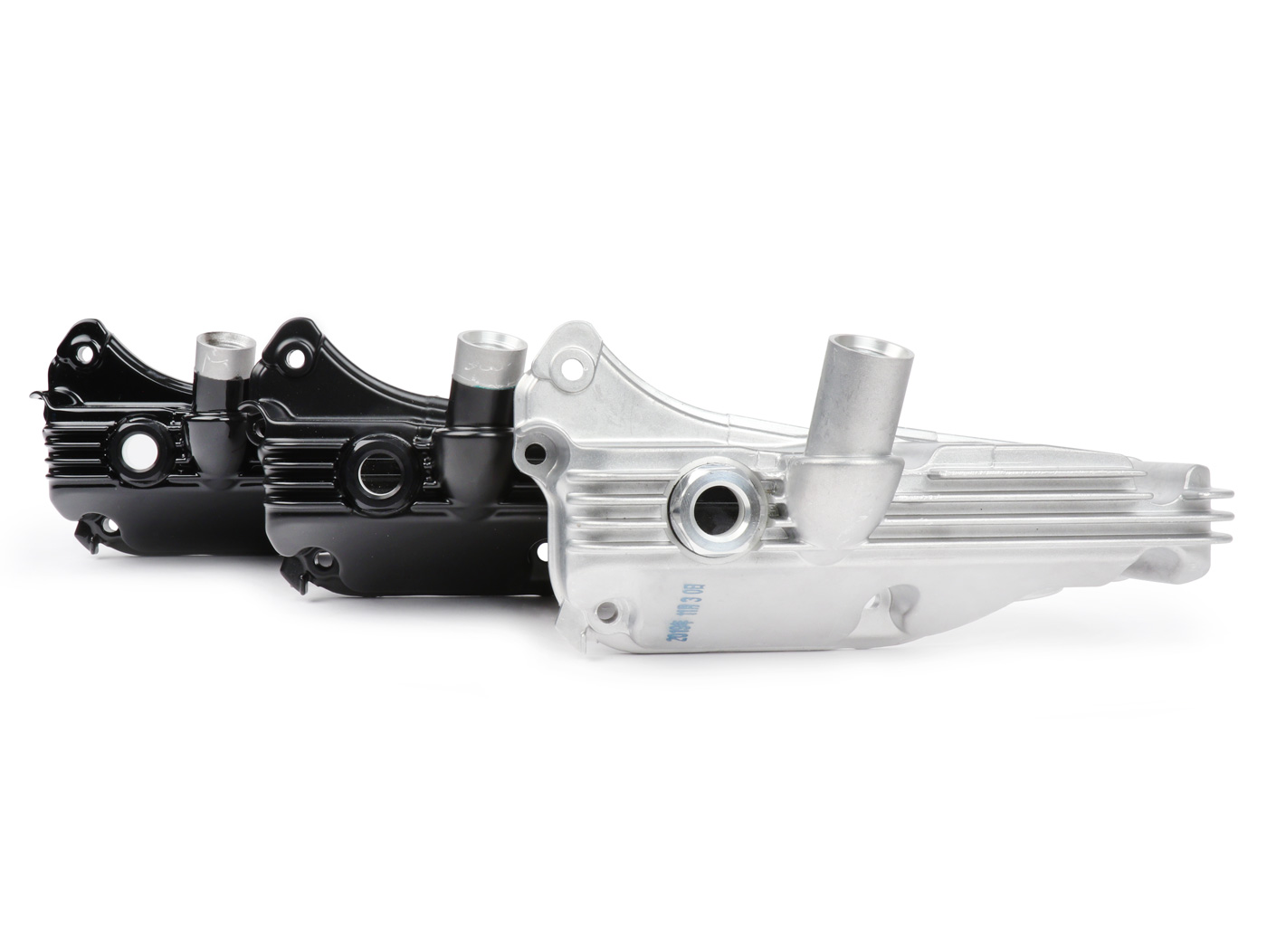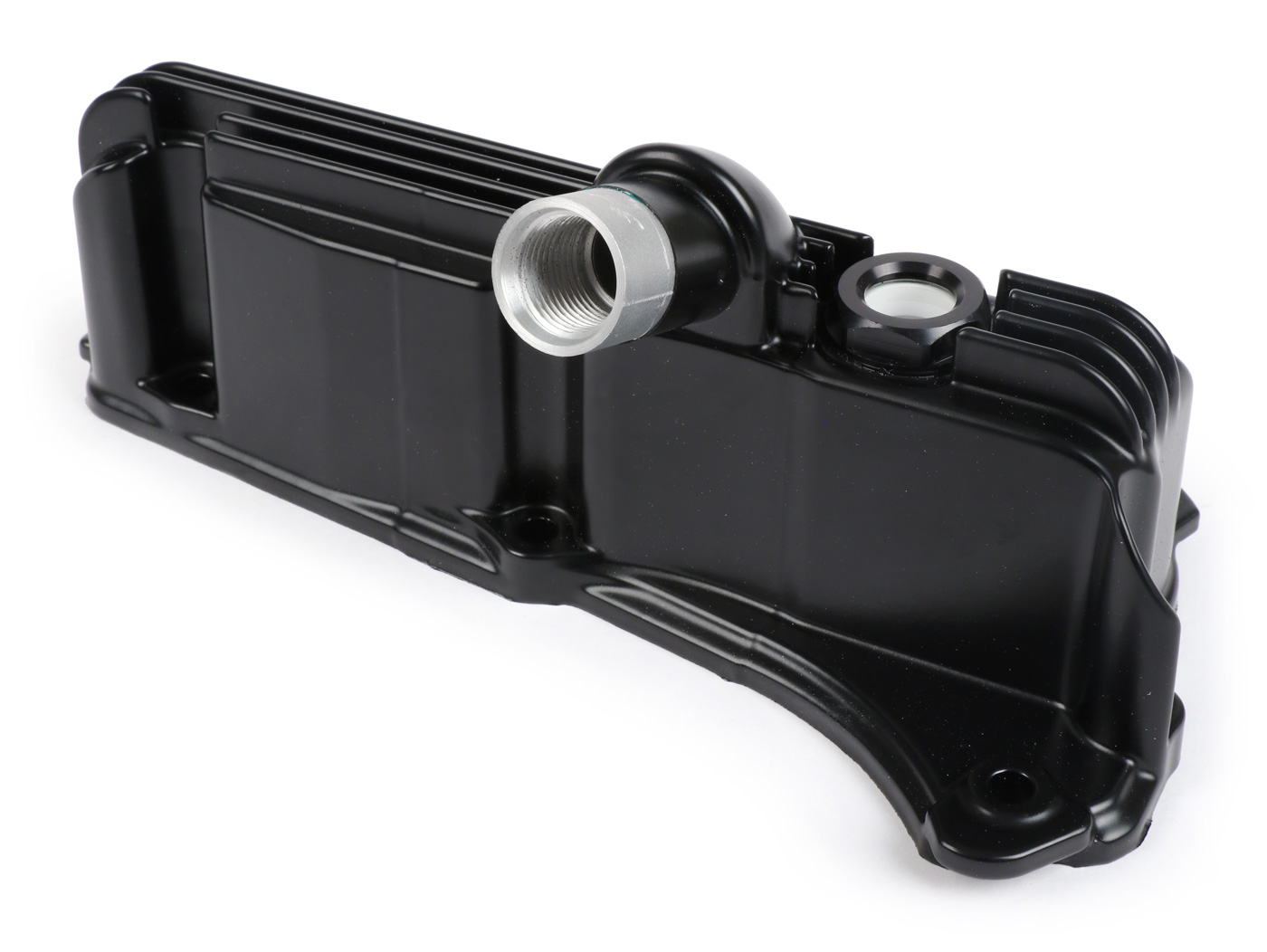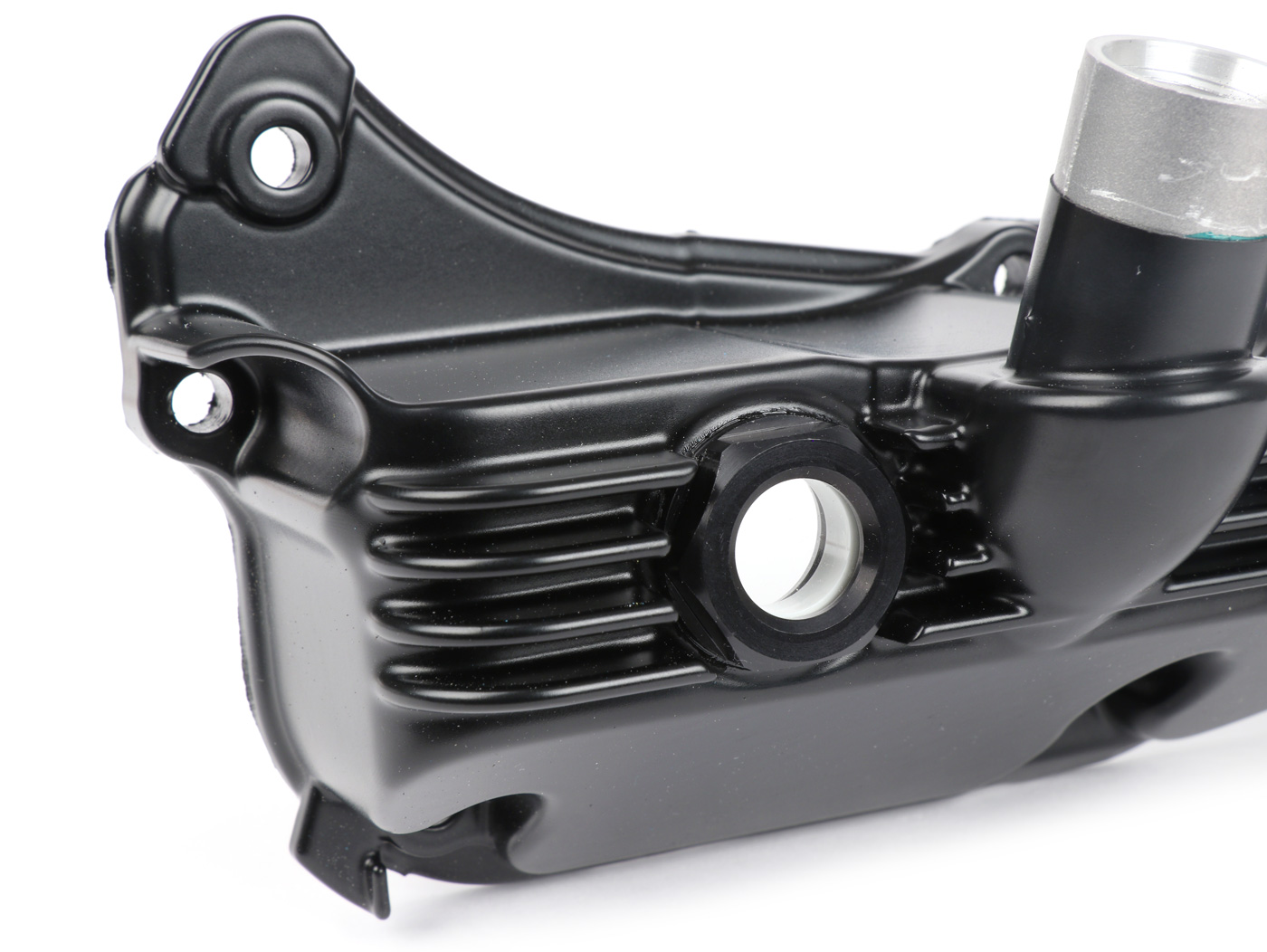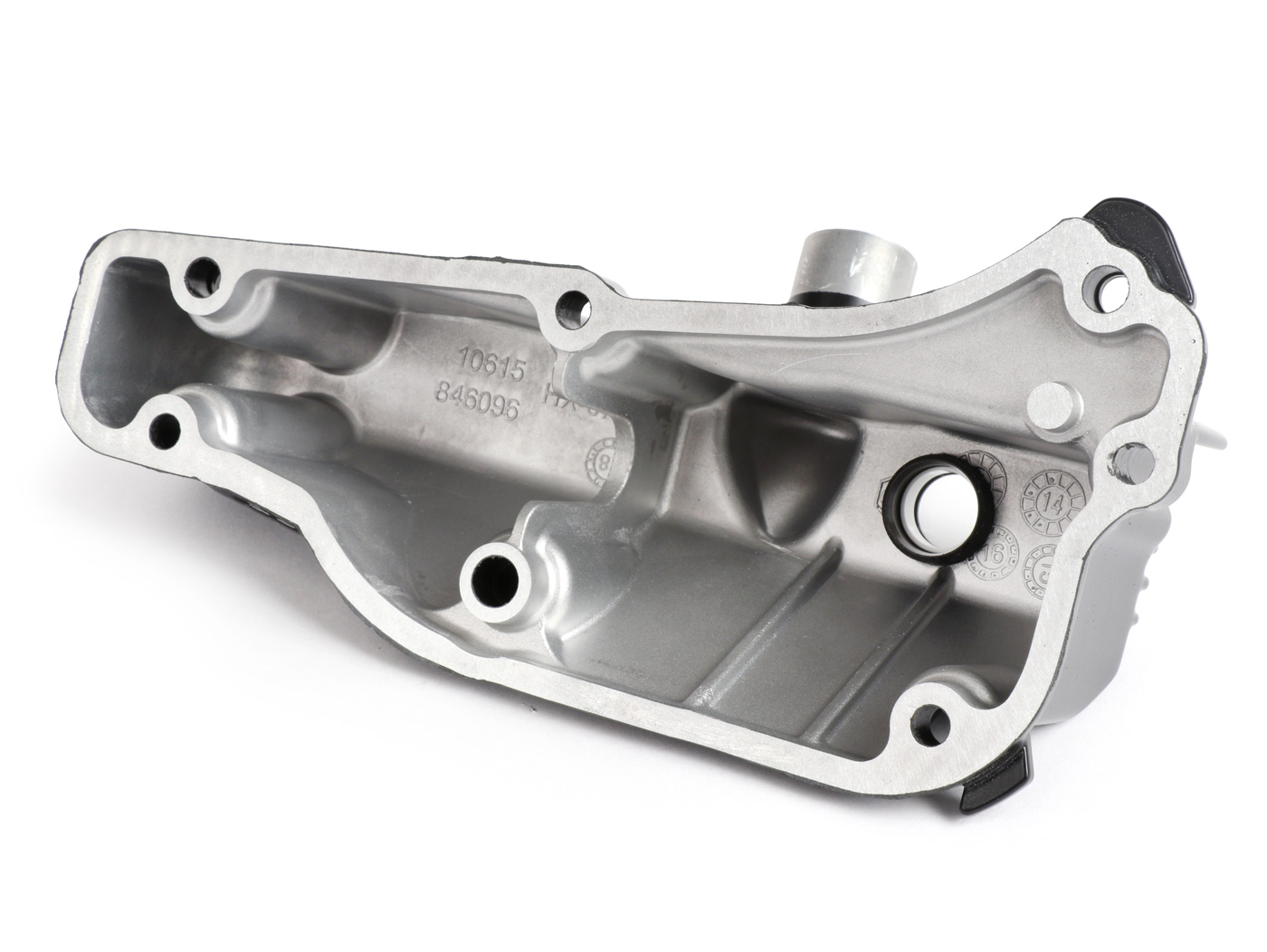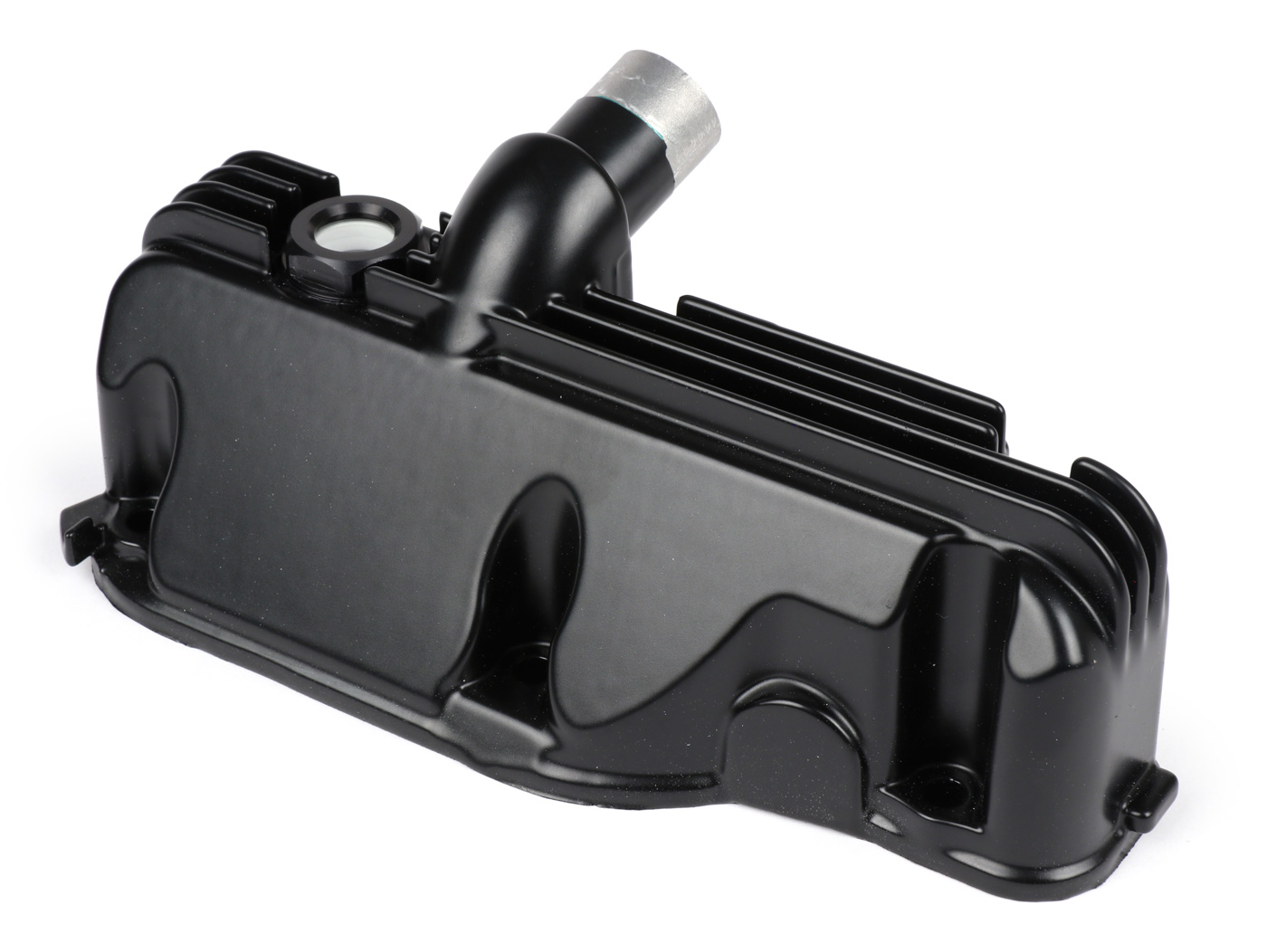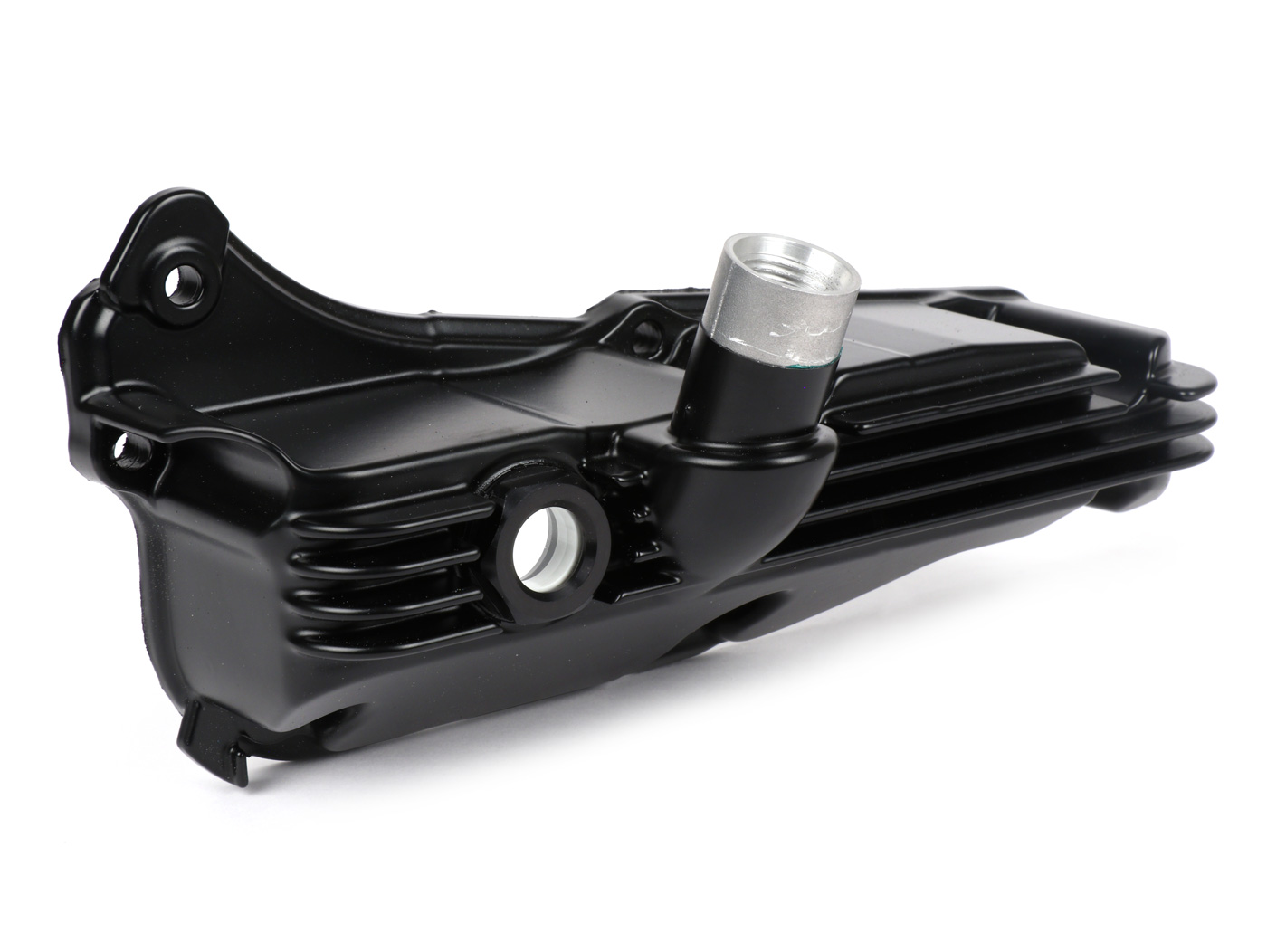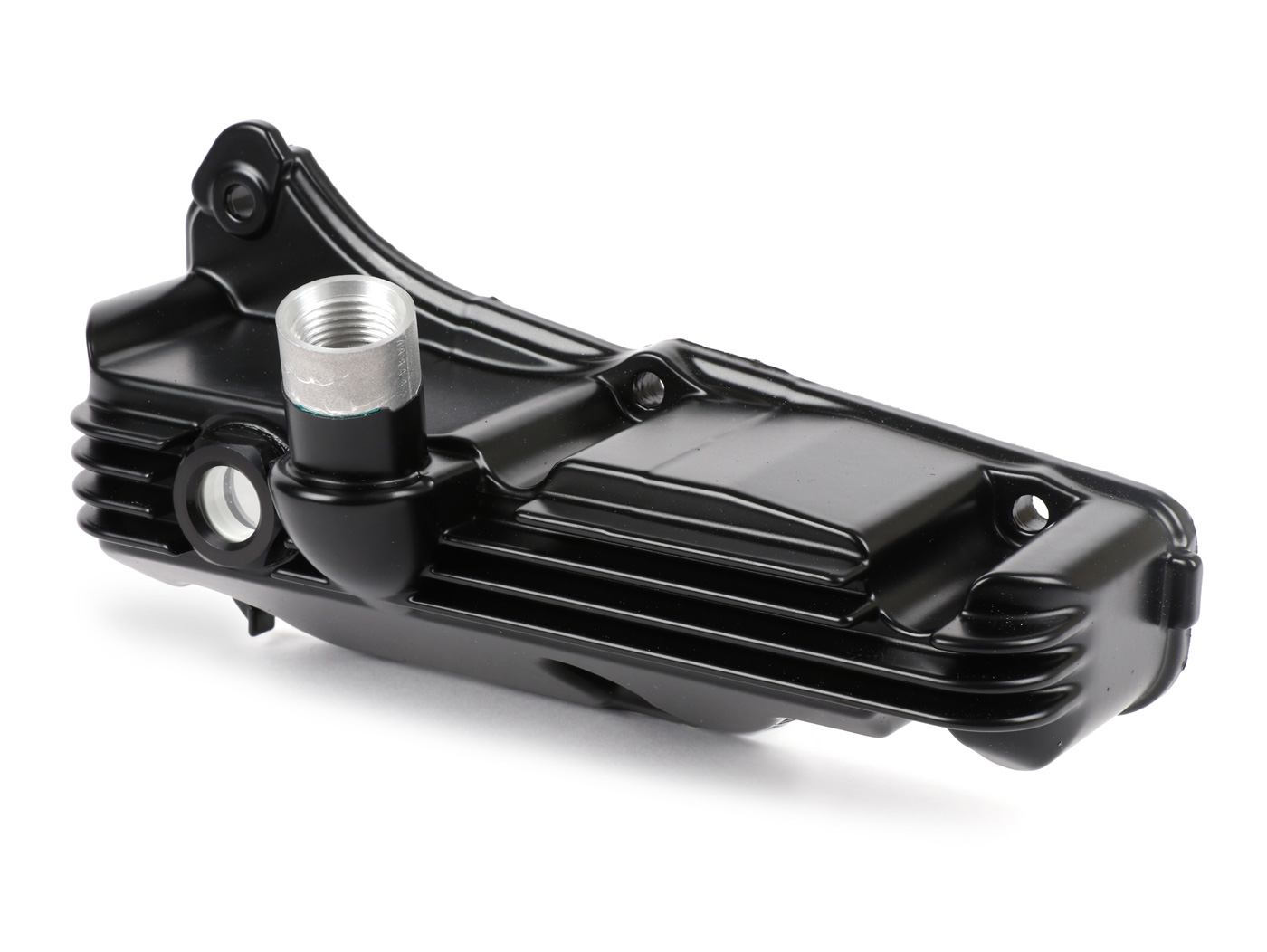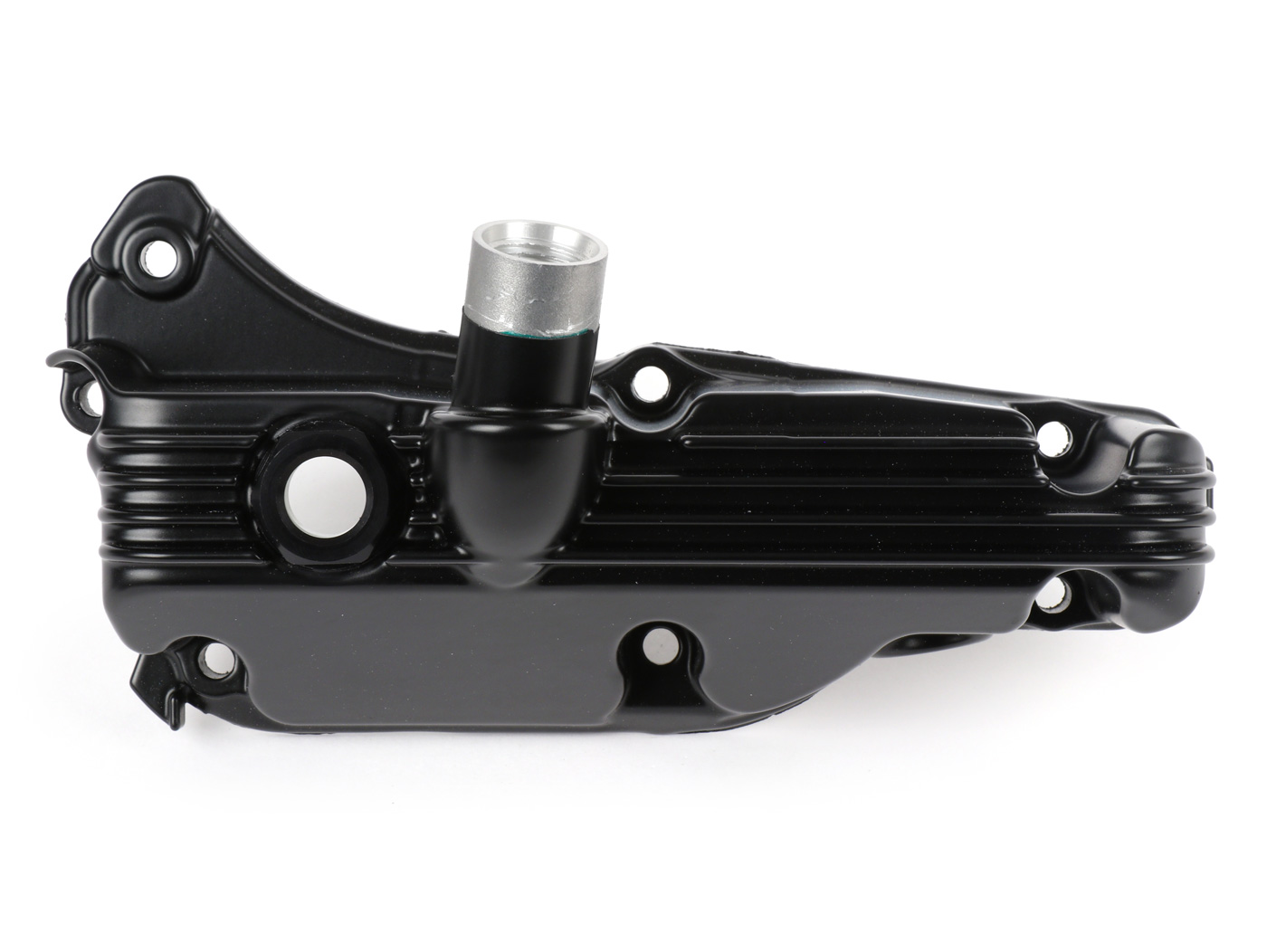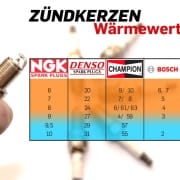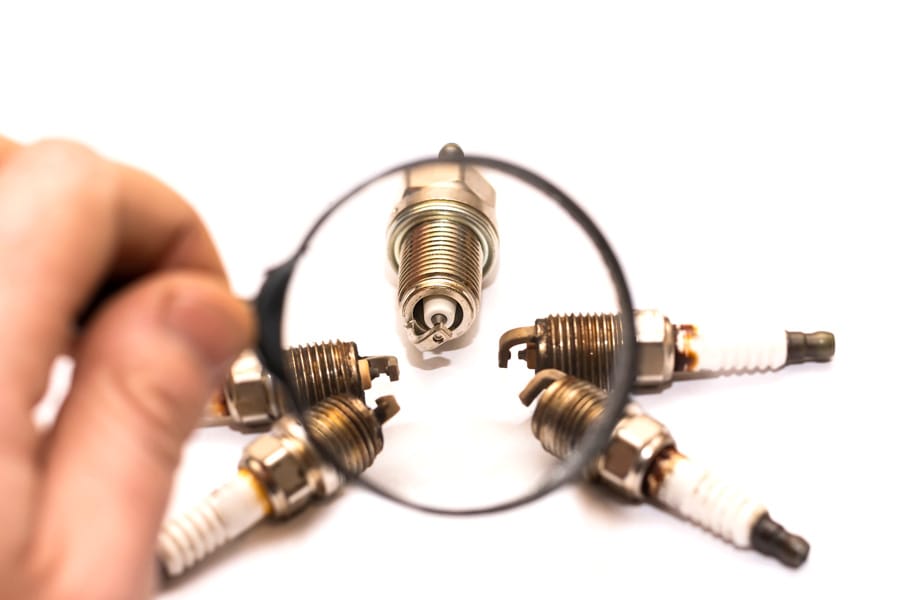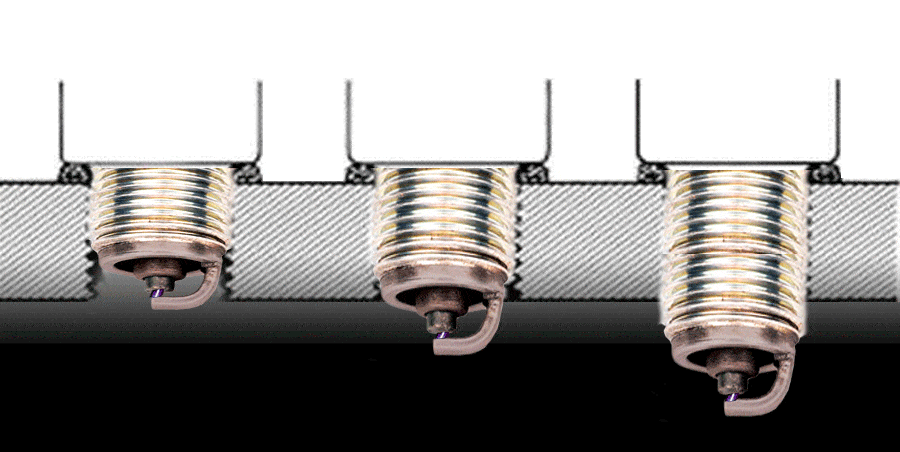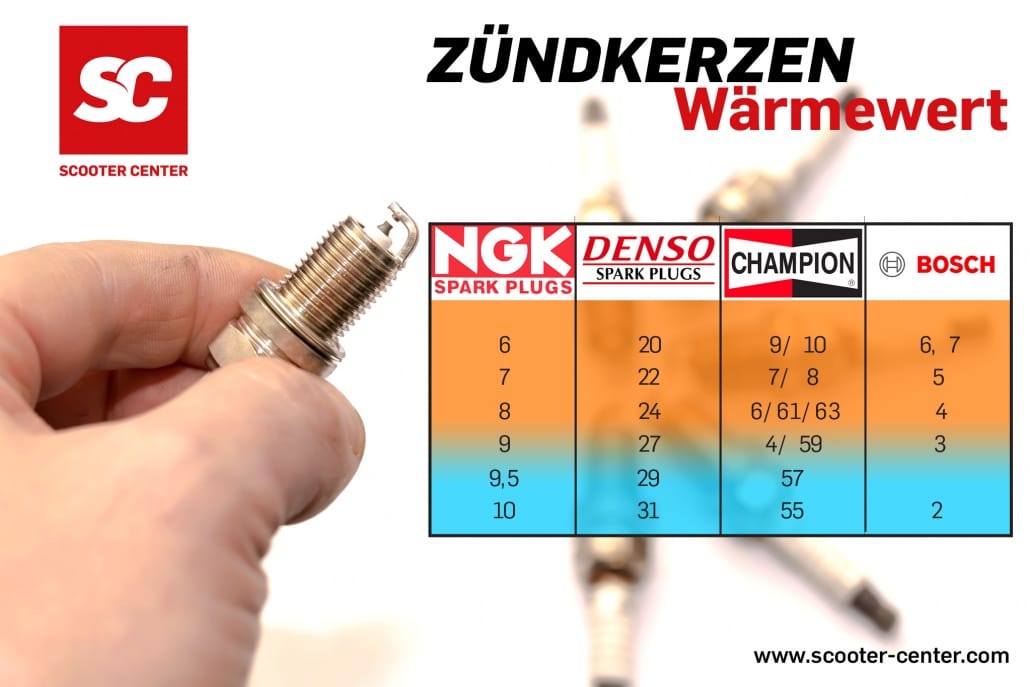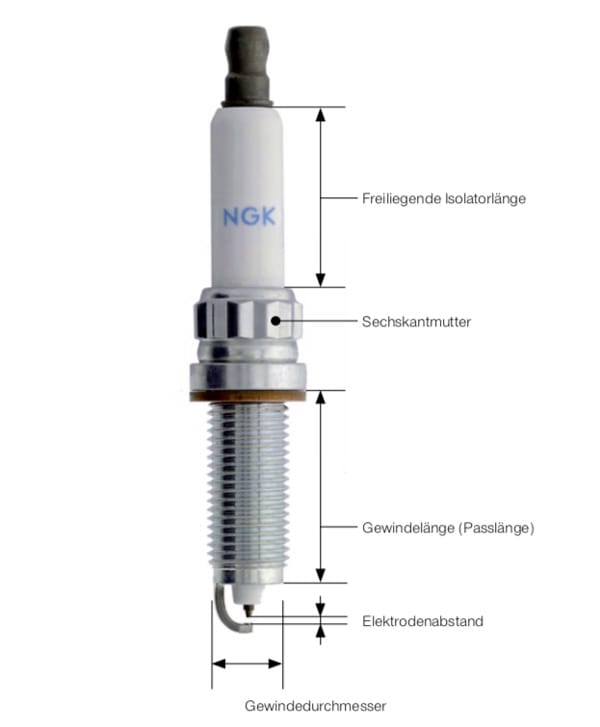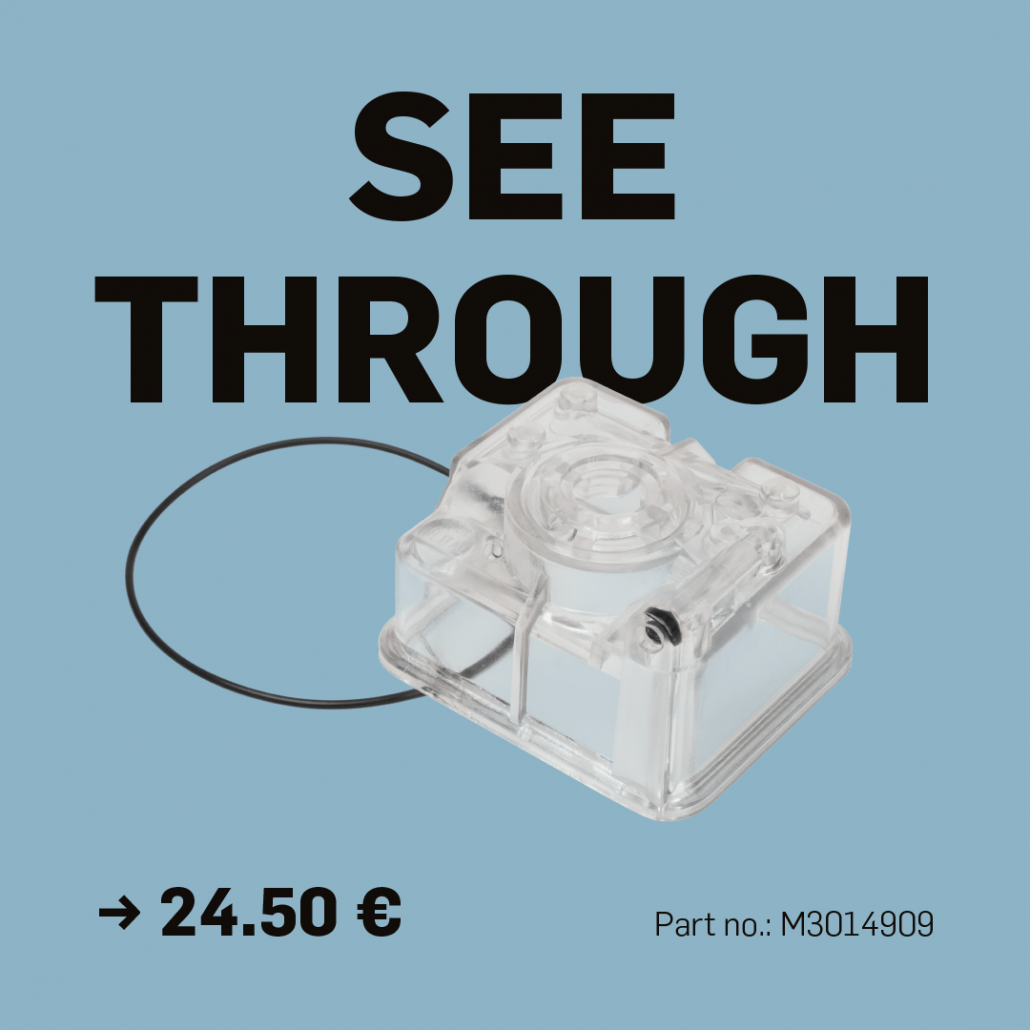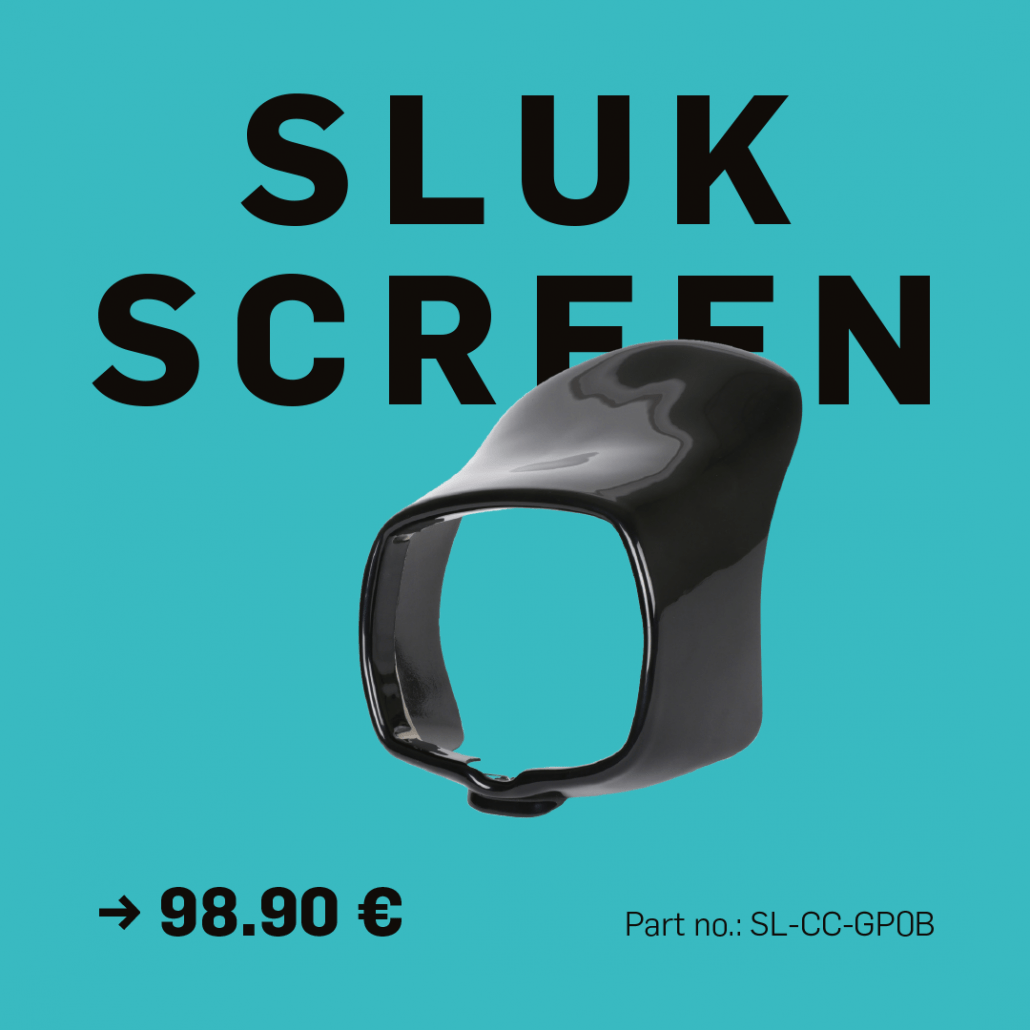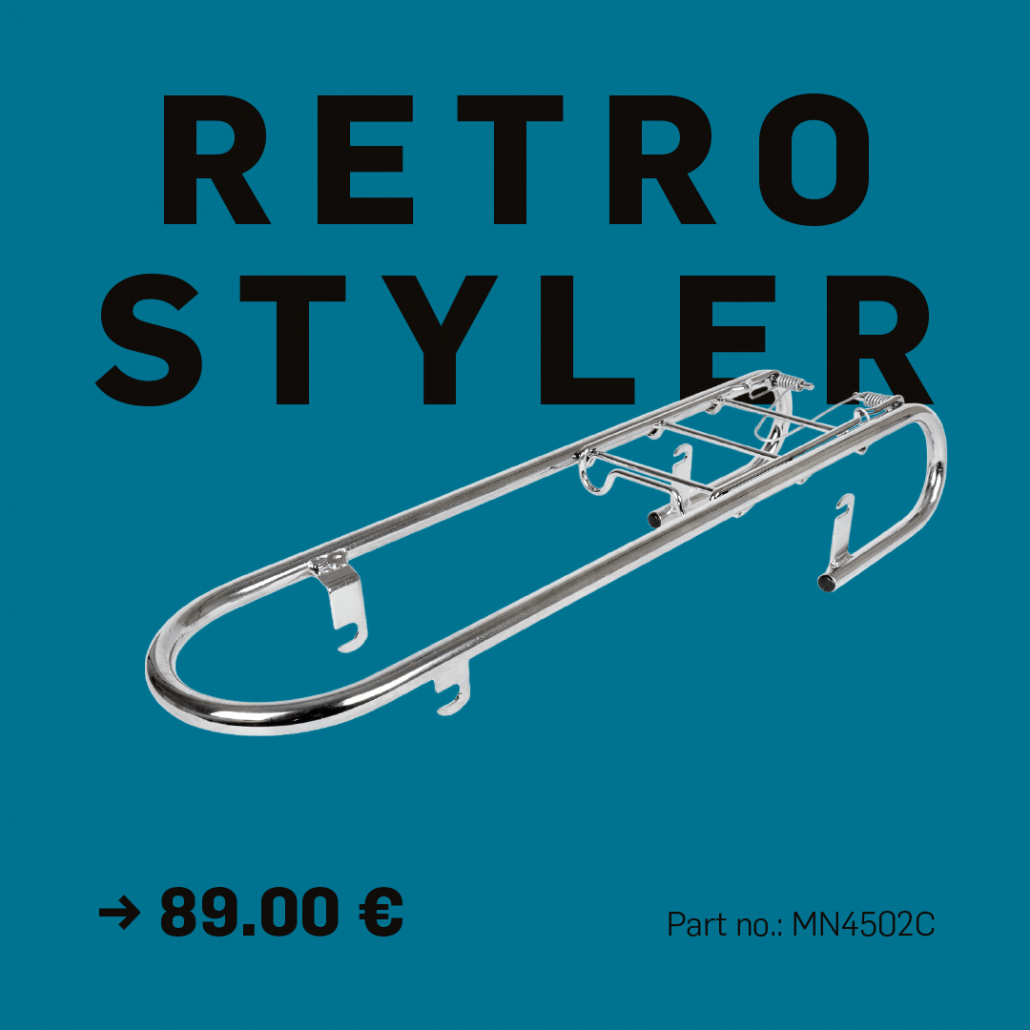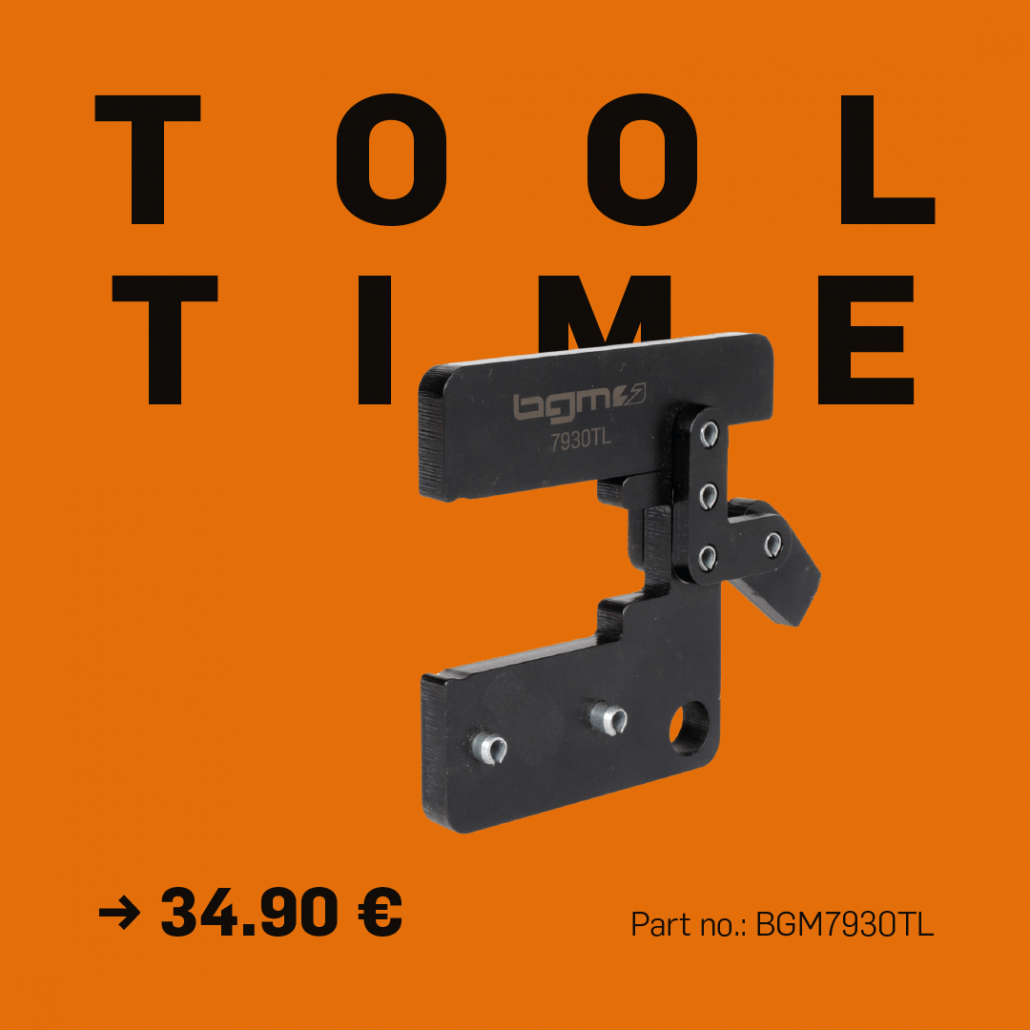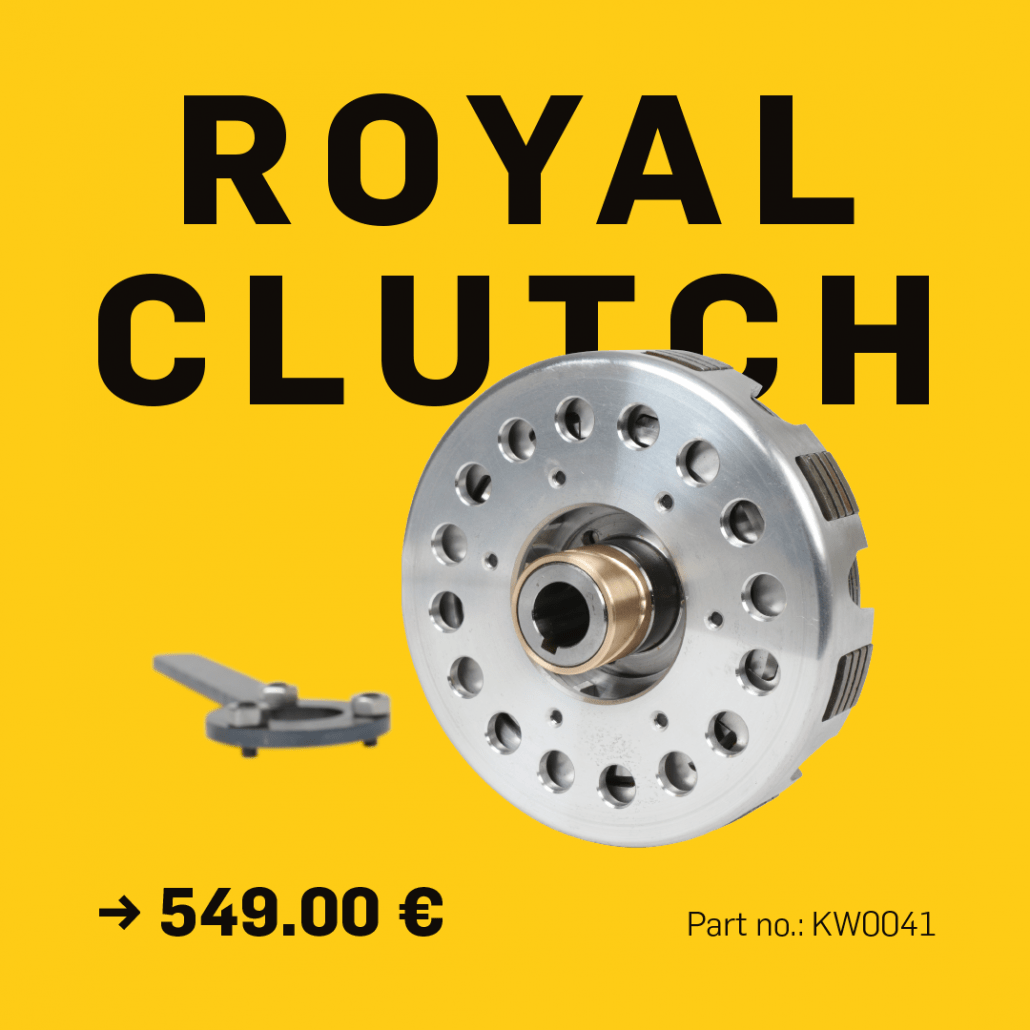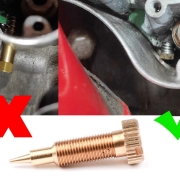HQ suspension components made in Germany by BGM PRO for Vespa Wideframe / Largeframe
Piaggio is known to many ‚only‘ as the world’s largest scooter manufacturer. The Vespa, as Piaggio’s most outstanding brand, has had a lasting impact on the image of the Pontedera-based company. Originally, however, Piaggio also manufactured railway wagons, ships and very successful aircraft engines (around 1940, double star 18-cylinder P.XV with multi-stage turbocharging, 1500hp takeoff power) as well as very innovative aircraft (1938, P.111 with pressurized cabin for a service ceiling of 12000m !) produced. The Piaggio Aerospace Group continues to build innovative aircraft such as the P180 Avanti on the beautiful Italian Riviera. The fastest twin turbo prop machine in the world with a cruising speed of 600km/h.
EINFACH ABER GENIAL
Was das alles mit Fahrwerksteilen für alte Vesparoller zu tun hat? Piaggio war und ist immer schon hochtechnisiert gewesen. Häufig hört man despektierliche Dinge wie, ‚da haben die Italiener halt gerade hergenommen, was noch in der Ecke lag‘. Piaggios größte Errungenschaft ist jedoch die, welche man nahezu nicht wahrnimmt: Die technisch höchstmögliche Vereinfachung bei maximaler Effizienz, Standfestigkeit sowie bester Wirtschaftlichkeit. Eines der Geheimnisse von Piaggio weshalb der Konzern bis heute so erfolgreich ist. Viele Dinge an Vespa Rollern sind brilliante technische Lösungen, gerade weil sie so einfach sind. Die konstruktive Leistung dahinter ist jedoch meist deutlich höher als bei einer aufwendigeren Lösung. Die einseitige Vorderradaufhängung, wie sie in einfacher Form auch bereits bei den Piaggio Schulflugzeugen P148/149 verwendet wurde, ist ein gutes Beispiel dafür.
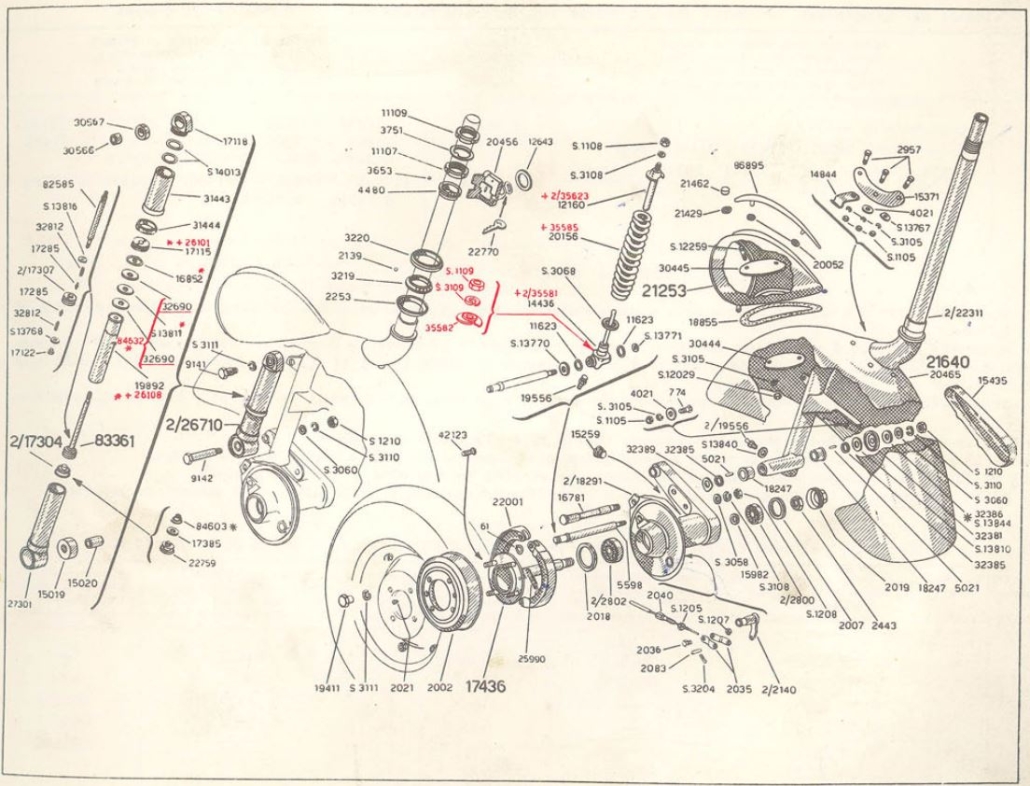
AHEAD TO THE PAST
Die einseitige Radaufhängung ermöglicht einen schnellen Radausbau, verfügt über weniger Teile als eine zweiseitige Radführung und ist obendrein noch so stabil ausgelegt das selbst Generationen danach das Material weiterverwenden können und es zudem auch häufig deutlich stärker belasten als damals vorgesehen. Wer hätte während der Konstruktion der Vorderraddschwinge im Ingenieurbüro bei Piaggio wohl daran gedacht, das 60 Jahre später(!) mit diesem Material Menschen doppelt so schnell und mit teilweise der 5-6 fachen Motorleistung immer noch damit herumfahren werden? Kaum vorstellbar das jemand mit einer heutigen Vespa GTS300 in 60 Jahren mit 100 PS und 240km/h durch die Gegend fährt, oder? Das dies alles wunderbar funktioniert ist der technischen Weitsicht der Piaggio Konstrukteure zu verdanken, die noch mit den damaligen Maßstäben an Produktqualität und mehrfachen Sicherheiten hinsichtlich der Bauteildimensionen gearbeitet haben. So sind die alten originalen Piaggio Teile auch heute immer noch eine ‚Bank‘ hinsichtlich Maßhaltigkeit und Belastbarkeit (ein Fakt der auf heutige original Teile leider nicht mehr hundertprozentig anwendbar ist).
HERKUNFT & QUALITÄT
Was aber tun wenn das original Teil beschädigt, verschlissen ist oder gar ganz fehlt? Klarer Fall, ein Neuteil muss her. Viele Teile für frühe Vespamodelle sind seitens Piaggio allerdings nicht mehr verfügbar. Zum Glück ist das Vespafieber aber ja ein weltweites Phänomen und somit auch die Quellen für Ersatzteile im besten Wortsinne grenzenlos. Ein Fakt der gleichzeitig aber auch Probleme aufwirft… Frei nach dem Motto ‚viele Köche verderben den Brei‘ ist auch die qualitative Auswahl eines Produktes mit vielen Tücken gesegnet. Unabhängig davon ob ein Reprobauteil aus Italien, Fernost oder Deutschland stammt, die Qualität muss stimmen.
Oft sind manche Teile aber auch nur noch aus einer einzigen Quelle verfügbar und dann heißt es ‚friss oder stirb‘? Soll man ein Produkt überhaupt nicht anbieten, weil es qualitativ nicht ganz an das original heranreicht? Oder verkauft man es und weist darauf hin, auf die Gefahr das der Hinweis nicht wahrgenommen wird und eine schlechte Produktrezension erfolgt?
Ein Zustand der für alle Seiten unbefriedigend ist. So auch bei den hochbelasteten Bauteilen an den alten Vespa Lenkrohren und der Schwinge.
DIE LÖSUNG VON BGM PRO
Unsere Lösung: Wir analysieren, vermessen und zeichnen neue Bauteile exakt nach originalem Piaggio Muster und lassen diese in Deutschland von einem spezialisiertem Betrieb präzise fertigen. Dabei gehen wir noch einen Schritt weiter als es Piaggio damals gemacht hat. Wir verwenden nicht nur hochwertigeres Material sondern lassen es zusätzlich auch noch wärmebehandeln…
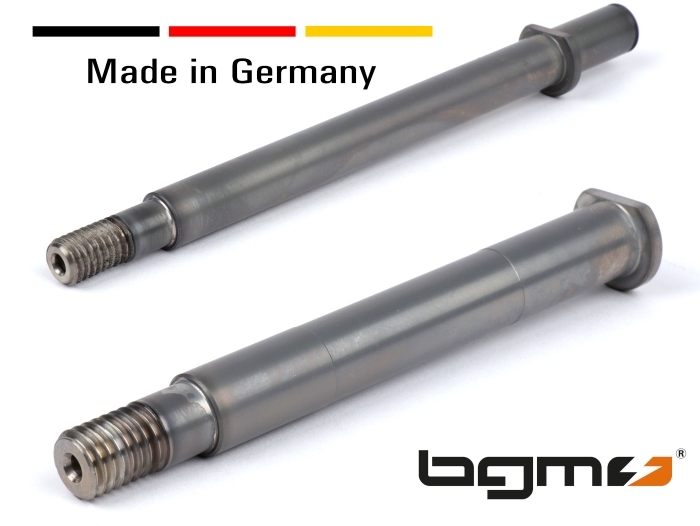
SCHWINGENLAGERACHSE (BGM4310 für Vespa Wideframe/Largeframe 1953-1962)
Passend für Vespa Wideframe VM, VN, VL, VB, GS 150 (VS1-5T), Largeframe VNA, VNB1-4, VNB5T (-026920), VBA, VBB1T, VBB2T (-212455), Vespa GL (VLA1T, -067468)
Ein schwierig zu lesendes Wort und doch so wichtig. Dieses Bauteil verbindet das stählerne Lenkrohr (auch Steuerrohr oder Gabel genannt) mit der Aluminiumschwinge. Letztere führt das Rad und verbindet die Dämpfung/Federung ebenfalls mit dem Lenkrohr. Jedwede Radkraft, jede Lenkbewegung, jegliche Auf- und Abbewegung des Rades wird über diese Achse übertragen.
Um all dem nicht nur gerecht sondern auch den heutigen Ansprüchen sorge zu tragen, lassen wir die BGM PRO Schwingenlagerachsen aus einem hochfesten Premiumstahl (1.4112 alternative Bez. X90CrMoV18) fertigen. Dabei legen wir höchsten Wert auf präzise Einhaltung der Maßhaltigkeit. Die Achsen werden auf eine Oberflächengüte von 0.2-0.4RA feingedreht:
Die Materialgüte, Oberfläche sowie die Korrosionsbeständigkeit würden die Achse bereits jetzt schon von jeglicher Massenware und sogar bereits von einem original Piaggioteil abheben lassen.
Wir lassen die Achsen allerdings zusätzlich noch plasmanitrieren. Dadurch erhalten die Achsen eine härtere Oberfläche und die Lagerstellen werden in einem Rollerleben sicherlich nicht mehr einlaufen. Sie erhalten durch das nitrieren auch ihr charakteristische matte Farbgebung (diese kann allerdings auch wegpoliert werden). Zusammengefasst sind die BGM PRO Schwingenlagerachsen ohne Übertreibung sicher die besten am Markt und bieten mit ihrer hohen Qualität eine große Sicherheit, auch gerade für leistungsgesteigerte Fahrzeuge.
Die dynamischen Belastungen an einem Fahrzeug steigern sich oft nicht linear mit der Geschwindigkeit, sondern häufig sogar im Quadrat. Wer doppelt so schnell als ursprünglich vom Hersteller vorgesehen mit einem Fahrzeug fährt, kann Belastungen in vierfacher Höhe erzeugen. Ein weiterer Grund mit der BGM PRO Schwingenlagerachse auf der sicheren Seite zu sein.
BREMSBELAGBOLZEN (BGM4311 für Vespa Wideframe/Largeframe 1949-1962)
Passend für Vespa Wideframe V1, V11-15, V30-33, VM, VN, VL, VB, GS 150 (VS1-5T), Largeframe VNA, VNB1-4, VNB5T (-026920), VBA, VBB1T, VBB2T (-212455), Vespa GL (VLA1T, -067468)
Was hier so relativ harmlos klingt ist ebenfalls ein Bauteil das einer näheren Beachtung verdient. Der Bremsbelagbolzen ist viel mehr als seine Bezeichnung vermuten lassen würde. Er bildet die Abstützung für die Fahrwerksfeder auf der Schwinge. Wo ab Werk relativ weiche Federn verwendet wurden kommen heute straffe Sportfedern und stark erhöhte Geschwindigkeiten sowie oftmals auch der ein oder andere Stunt wie zum Beispiel auf dem Hinterradfahren hinzu. Das oft unsanfte Aufsetzen des Vorderrades nach einem solchen wheelie, machen dem Brembelagbolzen schwer zu schaffen. Er ist ab Werk nicht sonderlich groß dimensioniert, hat dafür aber einen Schmiernippel. Mit diesem kann die hochbelastete Stelle zwischen Federaufnahme und Bremsbelagbolzen regelmäßig geschmiert werden. Dies sollte auch tunlichst gemacht werden, aber wieviel Leute mit solchen Fahrzeugen kennt ihr die überhaupt eine, für solche Zwecke notwendige, Fettpresse haben?
Deshalb wurde auch hier der gleiche Aufwand getrieben wie bei der Schwingenlagerachse; Extrem hochwertiges Material dessen Oberfläche weiter veredelt wurde um noch haltbarer als das originale Bauteil zu sein. Im Fall der Bolzen für die späteren Modelle mit Klemmplättchen (ab ca. 1969) haben wir zudem noch ein weiteres Ärgernis vieler Nachbaubolzen abgestellt; Die nicht vorhandene Maßhaltigkeit bezüglich der Länge der Bolzen sowie die nicht passende Formgebung für die Aussparung des Klemmplättchens. Viele Bolzen sind oft einige Zehntel Millimeter zu lang oder kurz. Dies ist mit dem BGM PRO Bremsbelagbolzen ein für allemal gelöst:
Dieser hat immer die richtige Länge*. Eigentlich alles Selbstverständlichkeiten die aber bei günstigen Reproduktionen aus Kostengründen über den Tellerrand fallen. Auch der Bremsbelagbolzen wird wie die Schwingenlagerachse aus hochfesten Premiumstahl (1.4112 alternative Bez. X90CrMoV18) feingedreht und anschließend plasmanitriert. Wir wollen mit diesen Produkten der manchmal etwas strapazierten Phrase ‚Made in Germany‘ ein neues Gesicht verleihen. Das dies nicht zu Preisen wie aus Fernost möglich ist kann sicherlich nachvollzogen werden. Dafür können wir ein Produkt anbieten das als solches einzigartig und qualitativ extrem hochwertig ist und von dem wir sicher sind das jeder Kunde daran so viel Freude hat wie wir selbst.
*HINWEIS: Spanische (Motovespa) und französische (ACMA) Fahrzeuge haben ein leicht abweichendes Längenmaß am Bremsbelagbolzen. Hier kann die Befestigungsmutter mit einer M8x1mm Scheibe unterlegt werden um einen perfekten Kraftschluss zu garantieren.
Die Schwingenlagerachse und Bremsbelagbolzen für die späteren Modelle (Largeframe 1963-1979) folgen in den kommenden Wochen!
BGM4310- Schwingenlagerachse Vespa 1953-1962
BGM4311- Bremsbelagbolzen Vespa 1949-1962
Vespa GTS oil pan with sight glass GTS up to 2019 socket fox
These are the Jack fox Oil pans with sight glass for the older Vespa GTS models until around 2019, recognizable by the filler neck directly on the oil pan.
For the newer GTS models we also have oil pans with sight glass: Vespa GTS 300 HPE oil pans with sight glass
Never run out of oil again
If you follow the forums, you have probably already noticed one or the other engine failure as a result of a lack of oil.
This practical oil pan is a must for every GTS because it has several advantages. In addition to the spectacular look, the oil pan with sight glass is above all very functional:
- It enables the oil level to be read off quickly through the oil window
- With the level of the oil you also have the control whether the engine is horizontal when reading the dipstick, 6mm inclination already make a big difference between MAXIMUM and MINIMAL oil level!
- In addition to these features, which give you a significant plus in safety, the oil pan is a visual highlight and a bit more individualization on your Vespa GTS!
We get the oil pans directly from Jack foxwho only original Piaggio oil pans used for the renovation. Quality craftsmanship made in Germany!
We can offer you the oil pans in 3 colors:
- Silver / unpainted like original
- Black MATT powder-coated
- GLOSSY black powder coated
TIP:
Compare the oil level on the oil sight glass with the oil level on the dipstick, then you will have a feeling for it and can quickly and reliably read off whether you should refill some more oil.
Optical engine oil check through a sight glass instead of the dipstick!
This eliminates the annoying and sometimes complicated and imprecise checking of the oil level using the dipstick. A simple look at the oil sight glass before every trip and you know whether you can start or, better still, add a sip of oil.
It is also noticeable here how important it is that the Vespa is absolutely horizontal when checking the oil level – 6mm inclination make the difference between MAX and MIN.
With this oil pan you are on the safe side!
Only NEW ORIGINAL PIAGGIO oil pans are used for the production, which are laboriously reworked on the CNC milling machine for the installation of the oil sight glass.
Spark plugs for Lambretta, Vespa & other scooters
My personal spark plug universe is quite small and simple:
- Original engines: BOSCH W5CC
- Light tuning: BOSCH W4CC
- Ambitious tuning: BOSCH W3CC
- and sometimes even: BOSCH W2CC
That’s the way it has always been for me and unfortunately it can’t stay that way, because for quite some time now my universe has been crumbling! BOSCH – spark plugs are not existing anymore for a while. Exception: We could still secure a large stock of BOSCH W3CC. But no reason for me to have the world collapsing, as of course there are alternatives. But they are called differently and the smaller value is warm instead of cold… Reason enough to take on the subject of spark plugs. In our Scooter Center Shop you get spark plugs from all leading manufacturers.
Spark plugs thread
Spark plugs are screwed into the spark plug thread of the cylinder head. And they are available in various diameters and lengths. The most common threads are M10, M12 and M14. Classic Vespa and Lambretta sizes are M14 thread. Modern engines, four-stroke and newer two-stroke engines with fuel injection use the smaller plugs with M10 or M12. The common thread lengths are 19mm (long thread) and 12.7mm (short thread). You should pay attention to the correct length of the spark plug and follow the manufacturer’s or kit’s supplier instructions. A spark plug that is too long can damage the piston as it protrudes too far into the combustion chamber, a spark plug that is too short will certainly have a loss of power if the engine starts at all. However, an unclean combustion would certainly cause residue to quickly form in the combustion chamber, which can cause engine damage or poor running.
Heat value
The heat value is decisive for the thermal fatigue strength of the spark plug and its self-cleaning effect. A distinction is therefore made between so-called cold and hot spark plugs. A cold spark plug is for engines that develop a very high combustion chamber temperature, usually engines that have a lot of power in relation to their capacity. A hot plug, on the other hand, is used in lightly loaded production engines. This type of plug quickly reaches a high temperature, which means that the soot on the plug burns off easily. The temperature resistance is achieved by differently designed insulators. A cold plug can give off a lot of temperature via the cylinder head, while a cold plug strongly inhibits exactly this. The heat rating has nothing to do with the strength or performance of a spark plug. A cold plug in a cold (weak) engine will oil or soot and can break without damaging the engine itself. A hot spark plug in a racing engine will burn up and damage it ,usually severely. The heat value of a spark plug is not standardized. Each manufacturer has its own code here.
- NGK from cold to hot = 10-9-8-7-6
- Bosch from cold to hot = 2-3-4-5-6
- DENSO from cold to hot = 37-34-31-27-24-22-20-16-14
The material of the electrode
Copper, platinum, silver or even iridium are used here. Copper is the most common, followed by silver and platinum. Due to the high prices for the precious metals, the spark plugs are also correspondingly more expensive than their copper counterparts. The material is ultimately of interest almost only for wear, only the extremely thin iridium electrodes (Ø=0.6mm) have a higher ignition voltage, the spread of the flame front in the combustion chamber is improved.
The ceramic plug!
The insulator head of the spark plug is made of ceramic. Clearly, one should not work here with brute force. Spark plugs should be handled carefully and better not be dropped, they should also be protected from moisture. Use a spark plug wrench with rubber insert.
What is the tightening torque of a spark plug?
If it is set too low, there is a risk of compression losses and overheating. A fracture of the insulator or center electrode as a result of vibrations is also conceivable. If the torque is set too high, the spark plug may break off. The housing can also stretch or twist. The heat dissipation zones are disturbed, and there is a risk of overheating and fusion of the electrodes, or even engine damage. Manufacturers recommend a torque wrench for the proper installation of a spark plug. Since we know that hardly anyone does this and it doesn’t fit at all on the Lambretta, for example, you could follow the following rule of thumb: Hand-tight = tighten by hand and then tighten with the spark plug wrench another quarter to half a turn. Our new bgm spark plug wrench: protects the spark plug and with magnet so that you do not burn your fingers when removing the plug. TIP: You can clean spark plugs with a fine wire brush after removal.
Spark plug image
You can also use a spark plug image to draw conclusions about the correct combustion of your engine. PERFECT: If the plug is „fawn“, your engine will burn perfectly. LEAN: If the candle is too bright – white, then it is too hot, possibly the carburetor is too lean or the ignition is set incorrectly. RICH: If you have a black, sooty spark plug, then the engine is running too rich.
Spark plug connector
With a spark plug cap, you should pay attention to whether it is used with or without a spark plug nipple / SAE nut. A spark plug cap is also a part that is exposed to heat and vibration and should be checked regularly and replaced if necessary. A good spark plug cap costs only a few Euros, which is a good investment. TIP: I always have a second plug including ignition cable in my tool.
Platónika test drives after more than 7,000 km is more than completed, so here we go!
Together with Scooter Center to Zell am See from 10th to 12th September 2021
Enough of mile munching going and leaving work from day to day. It is about time for those epic trips, meeting other Vespisti and collecting memories for a lifetime. The Vespa Alp Das will be the perfect start for new adventures!
In my personal ranking of events, VAD have a special place:
- It was the second biggest event that I took part in. The biggest were the Vespa World Days in Celle, both in 2017. At the VAD I celebrated together with 1.000 Vespistas from 20 different nations.
- It was the first meeting after I set foot on European soil.
- It was the first time to see so many Vespas together, including the 60 oldest Vespas on the continent at the Faro Basso race.
- It was also the longest event I have participated in, 8 days non-stop fun.
- The oldest Vespa I’ve ever ridden, the beautiful Vespa Super Sport 180 from Franz, which he nicely lent me.
- The most beautiful landscapes that my eyes have seen.
- In addition, it was the beginning of beautiful friendships, of which I have been able to continue reinforcing.
Back to the future
Now the reasons are others, I‘m going to work there! As part of Scooter Center, which is the official sponsor of the event. The plan -for certain- is riding Platónika there. I‘m getting ready to show you first-hand all this adventure, by now here are some good memories from 2017:
the good friends that I made
The Colombian representation!
Super Sport 180 of Franz
See you there!
https://www.the-alp-days.at/
Vespa Conversion mixture adjusting screw bgm PRO for SI carburettors Dell’Orto & Spaco
Mixture adjusting screw bgm PRO for conversion of Dell’Orto SI carburettors with long hexagon mixture adjusting screw to short slotted screw. This bgm PRO conversion air mixture adjusting screw is used to use carburettors with long hexagon mixture adjusting screw also in older engines (with stud bolts for carburettor mounting). It replaces the too long adjustment screw on new Spaco and Dell’Orto SI carburettors and allows a trouble-free installation of the carburettor. Due to the shorter screw, the carburettor bowl can be left original! Fits all carburettors with long hexagonal mixture adjustment screw. (Used ex works in PX models from approx. 1989 and all new Dell’Orto/Spaco SI carburettors)
Carburettor air mixture adjustment screw too long?
A carburettor is also a wearing part and sometimes it is simply not enough to clean a carburettor, you need a new one. Especially if you want a bit more power and adjust your engine setup, you usually need a new, bigger carburettor. Below you will find instructions on how to install the SI carburettor. 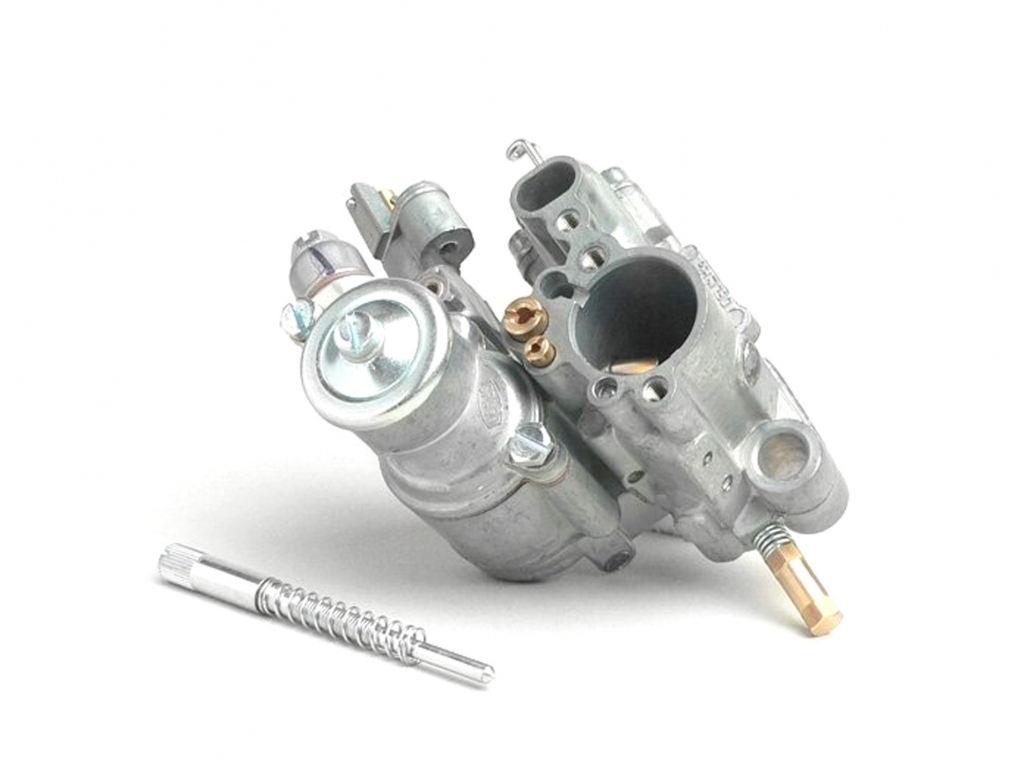
SI Carburettor for Vespa
Today all new carburettors come from SPACO, even if it says Dell’Orto on it. New SI carburettors, whether from Dell’Orto or Spaco, are always supplied with a long (brass-coloured) hexagonal mixture adjustment cap. The exception is our bgm PRO Faster Flow carburettors – but more on that below.
Problem with too long air mixture adjusting screw
For carburettor sumps for engines without separate lubrication, this presents us with a bit of a problem, because:
- the carburettors no longer fit properly in the sump
- if you have somehow managed to get it in, there is no longer a rubber seal on it
- and it is difficult to get at it
With the mixture adjustment screw too long, it looks like this:
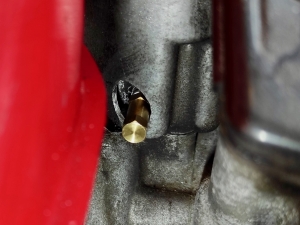
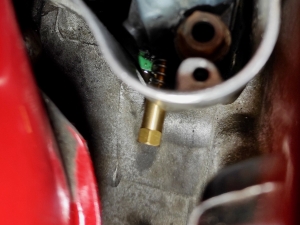
And this is how it should actually look:
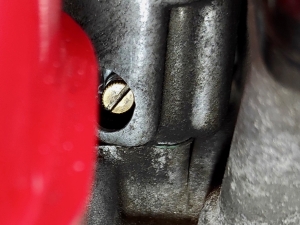
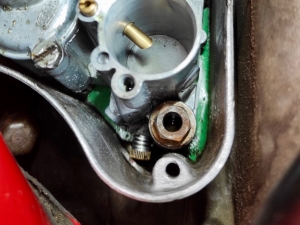
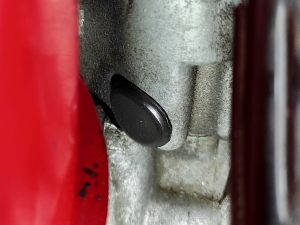
bgm PRO conversion air mixture adjustment screw
Now you could get the idea and simply screw the old, short air mixture screw into the nine carburettor. Unfortunately this does not work, because the threads of the new Lusso carburettors are different. Please do not try to force it, the different thread pitch will destroy the fine thread in the new carburettor and make tuning impossible. Our conversion screw provides a remedy: With our short mixture adjustment screw for slotted screwdrivers you can solve the problem cheaply, easily and quickly. 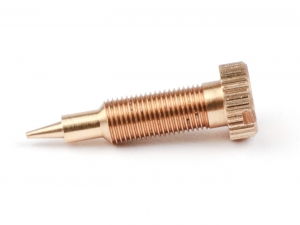
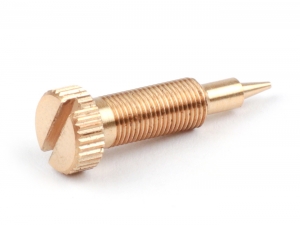
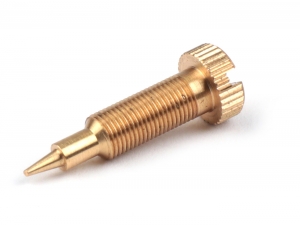
bgm Faster Flow carburettor
Alternatively, you can use a bgm Faster Flow carb urettor directly if you are already ordering a new one anyway, here we have already provided the update. The bgm carburettors come, for the models without separate lubrication, directly with the short conversion screw. 